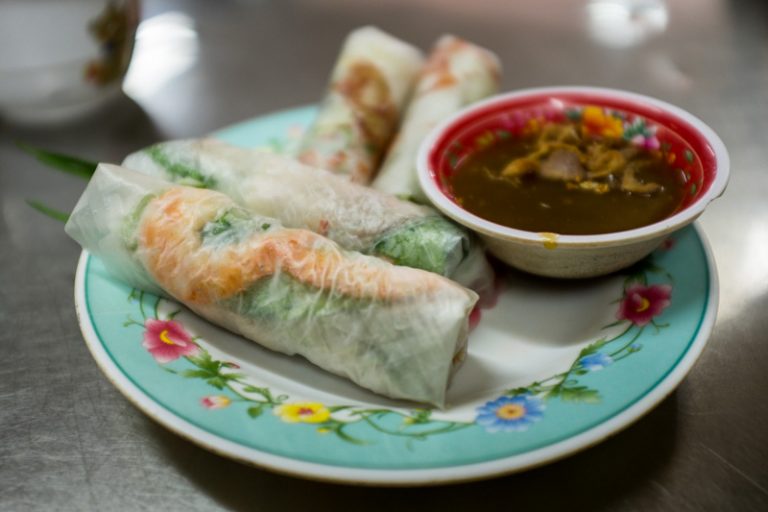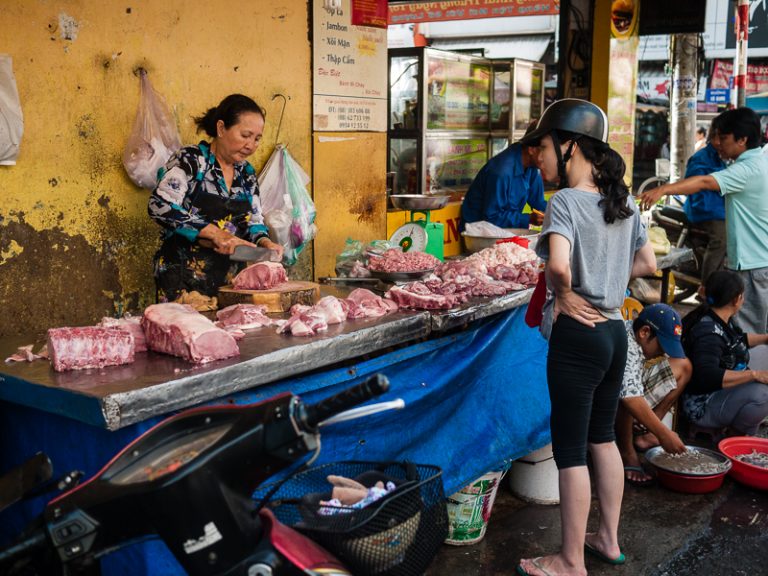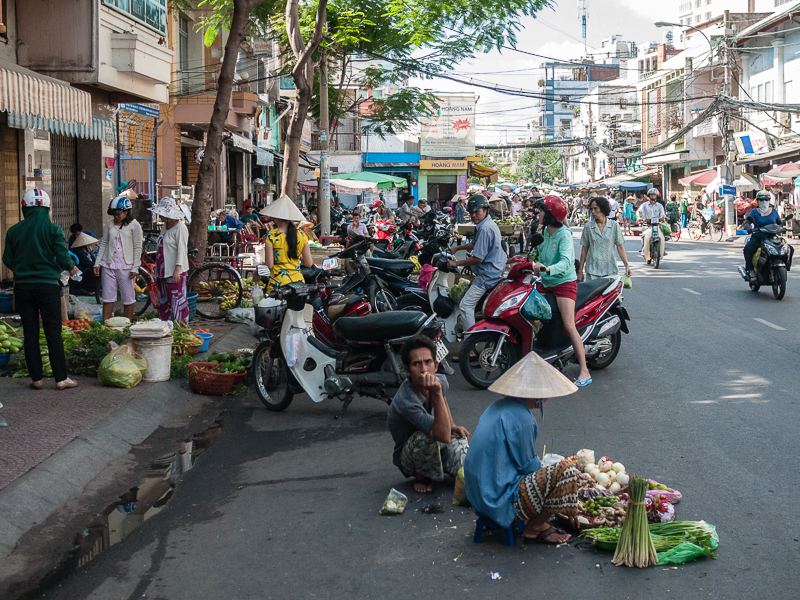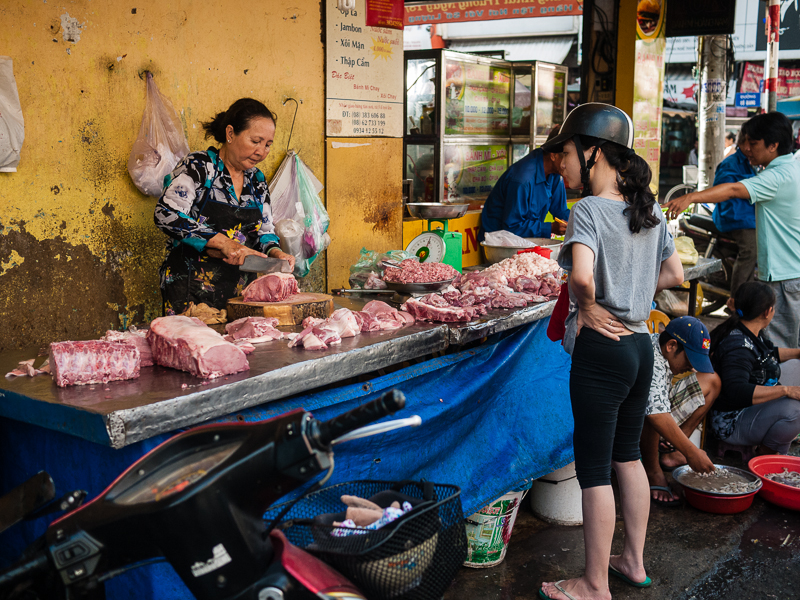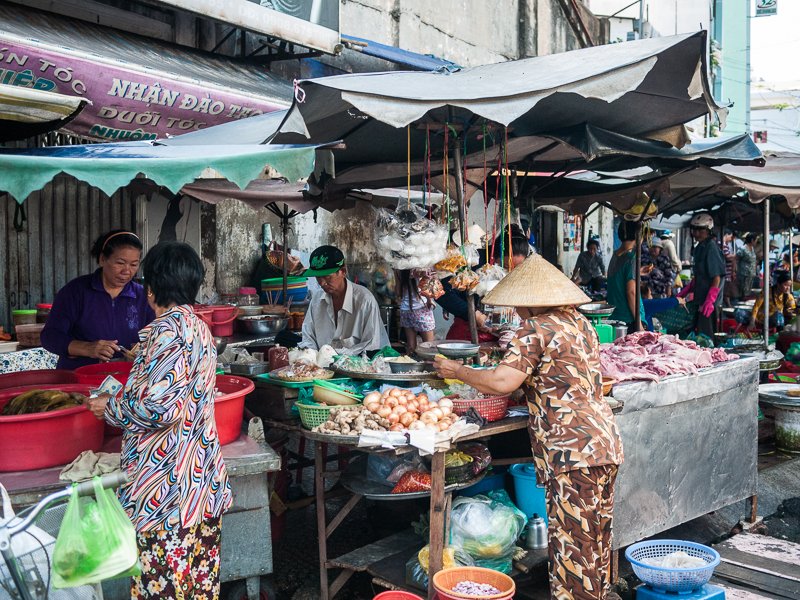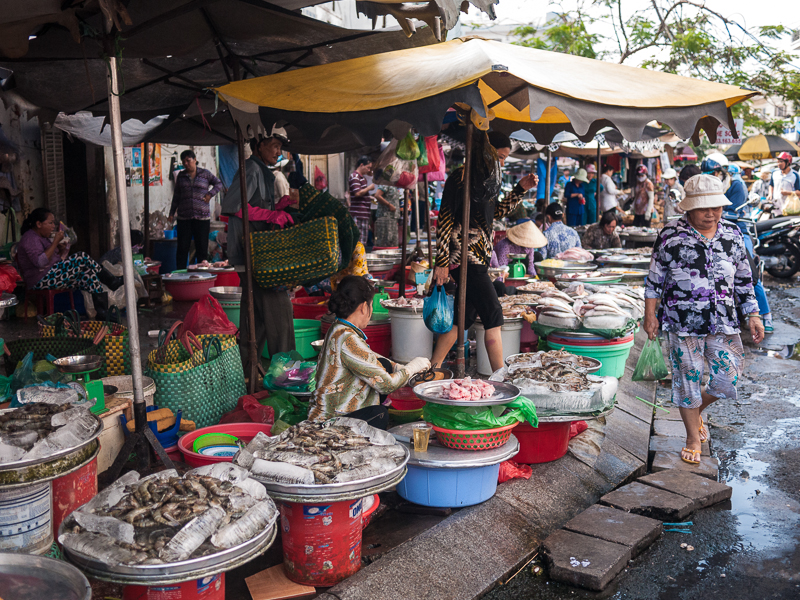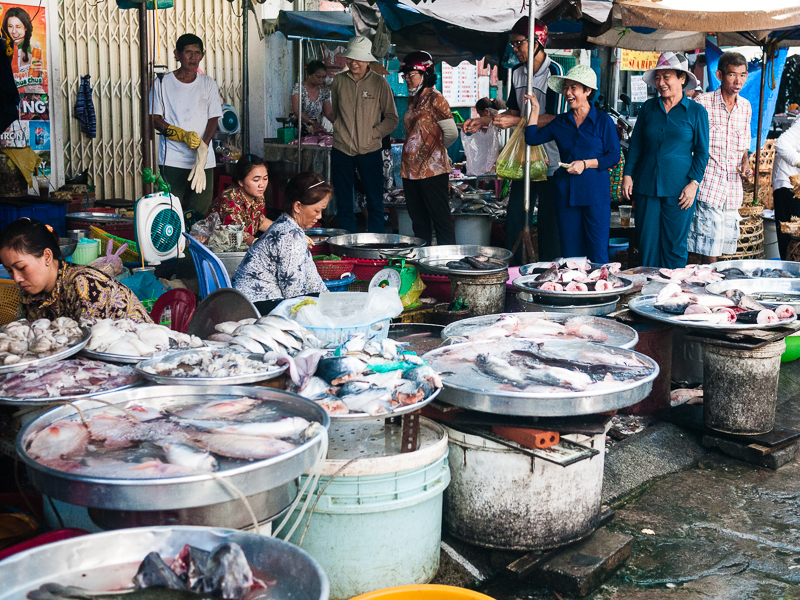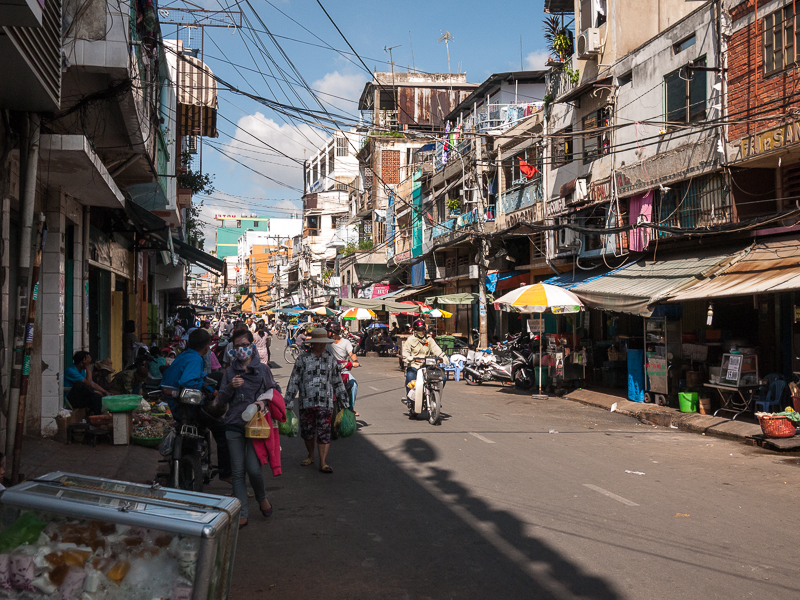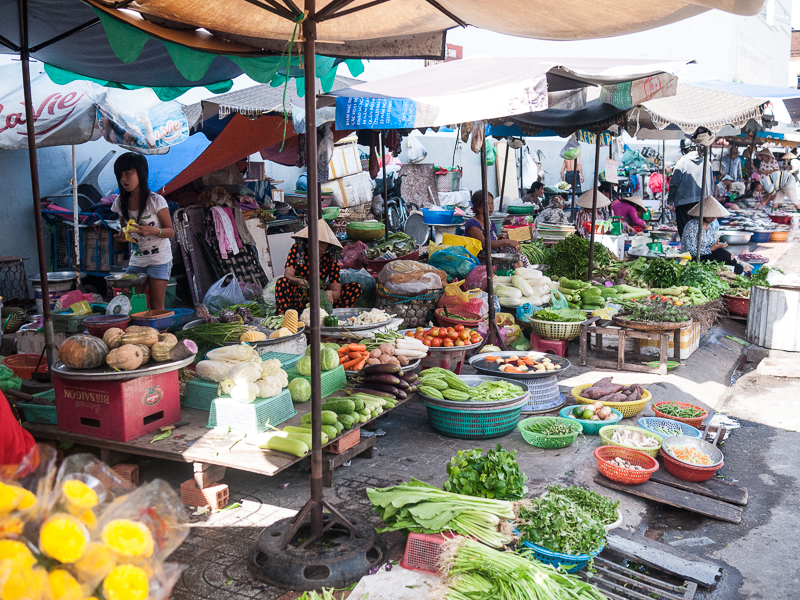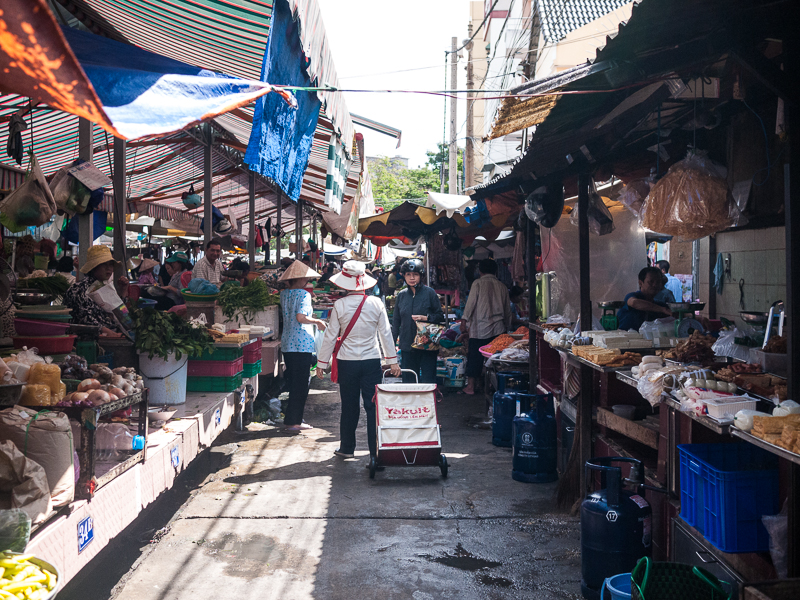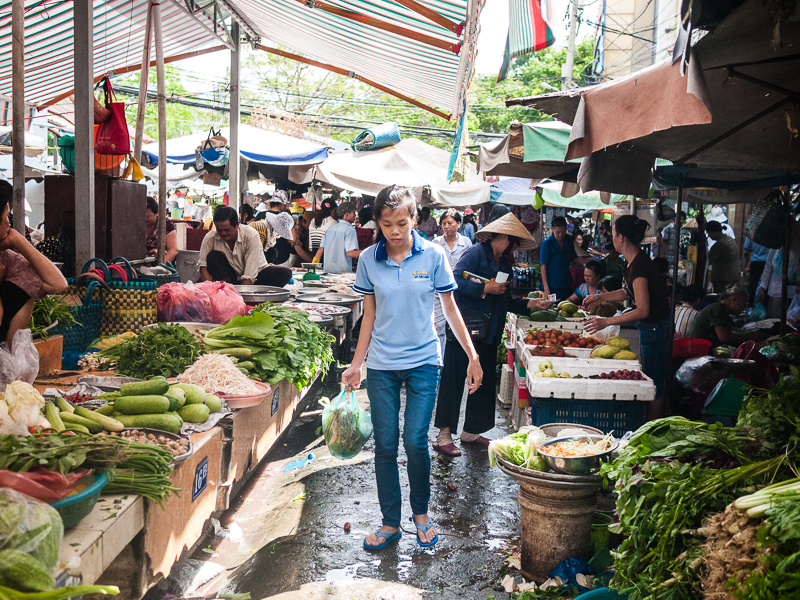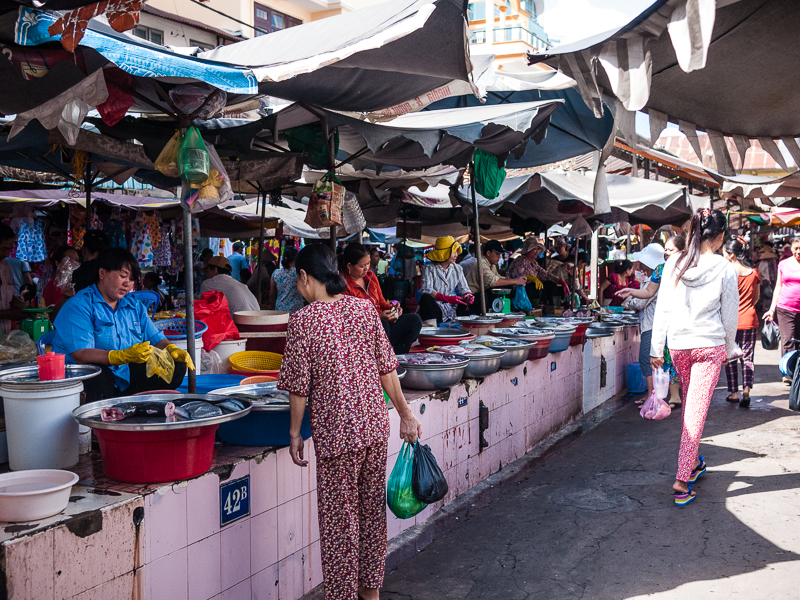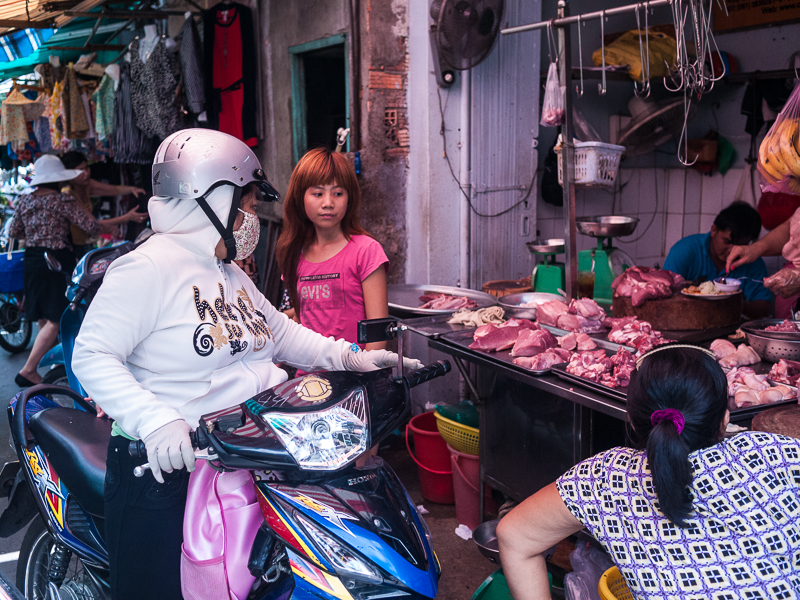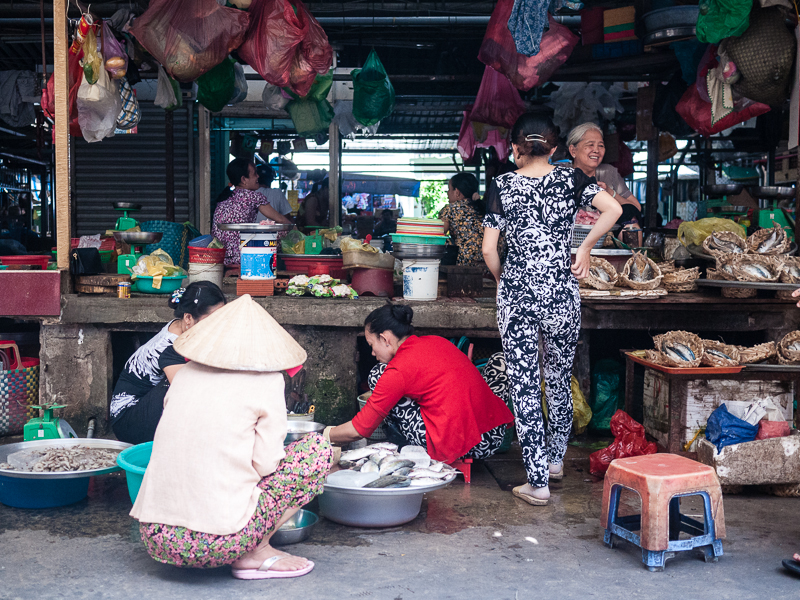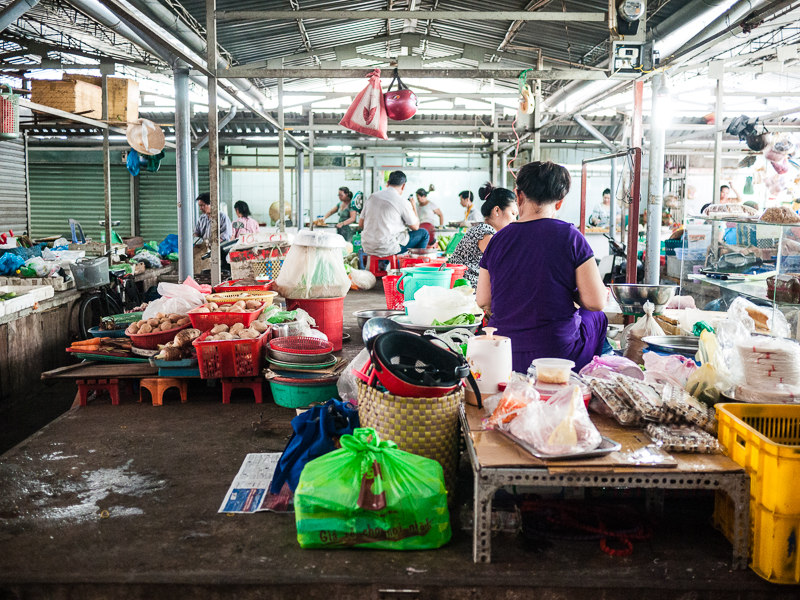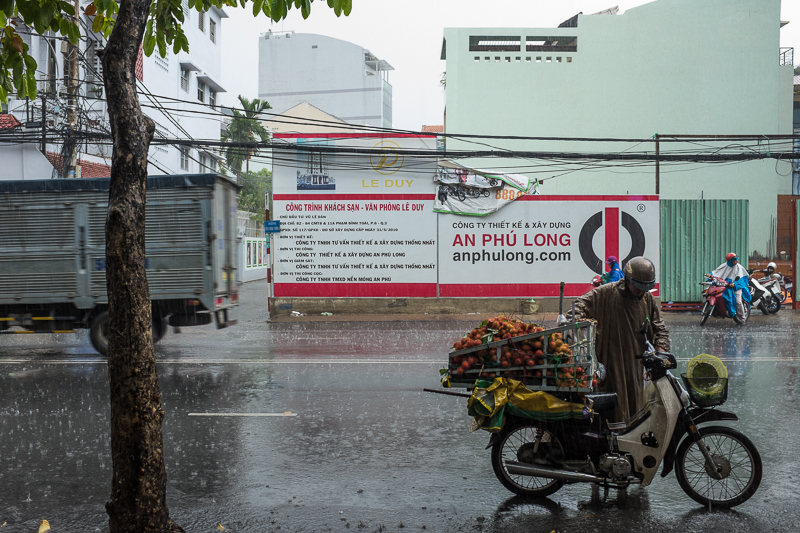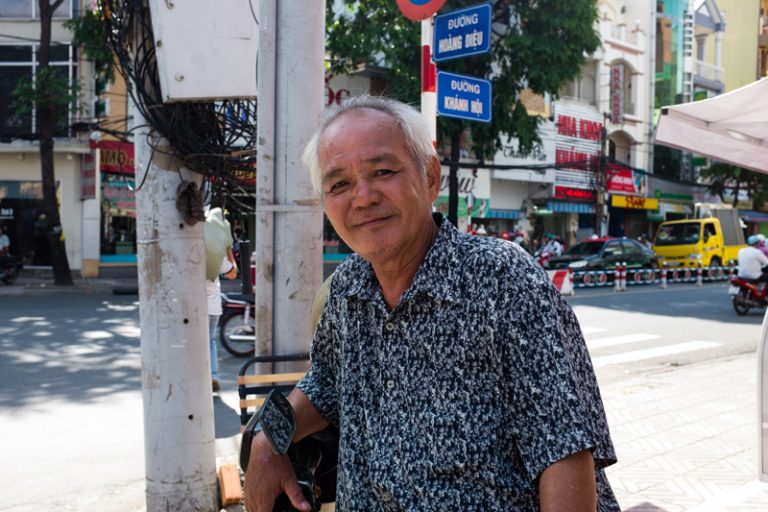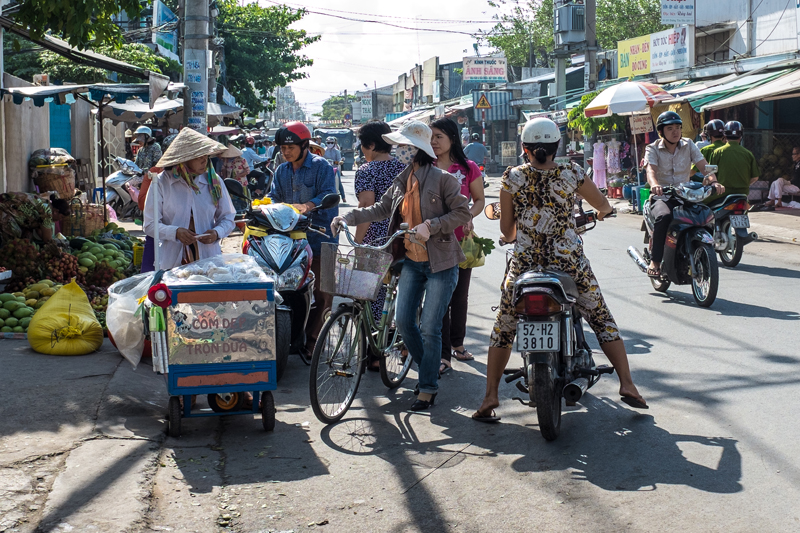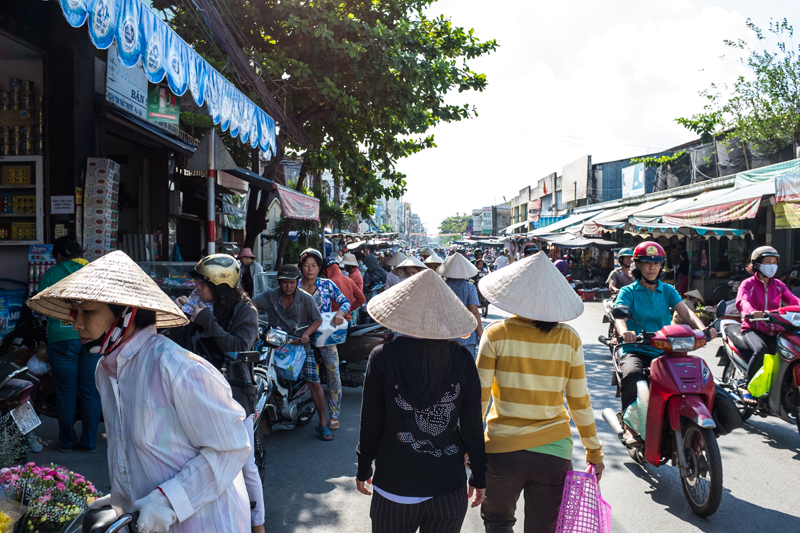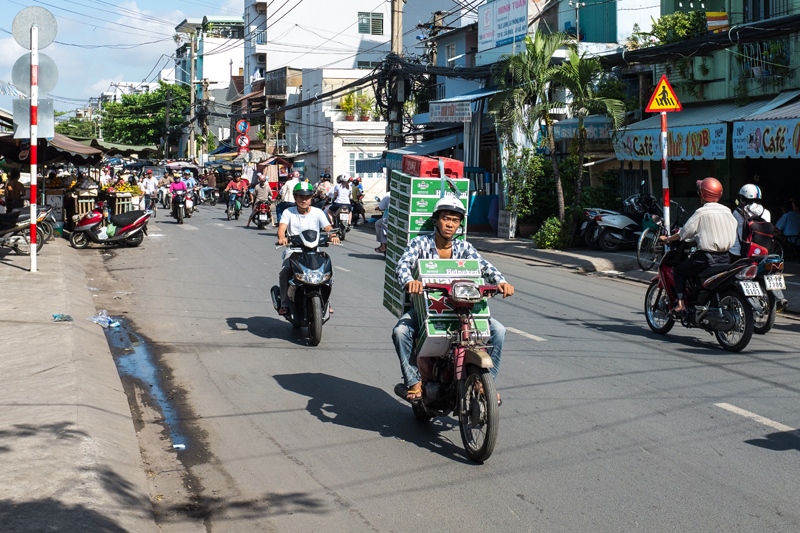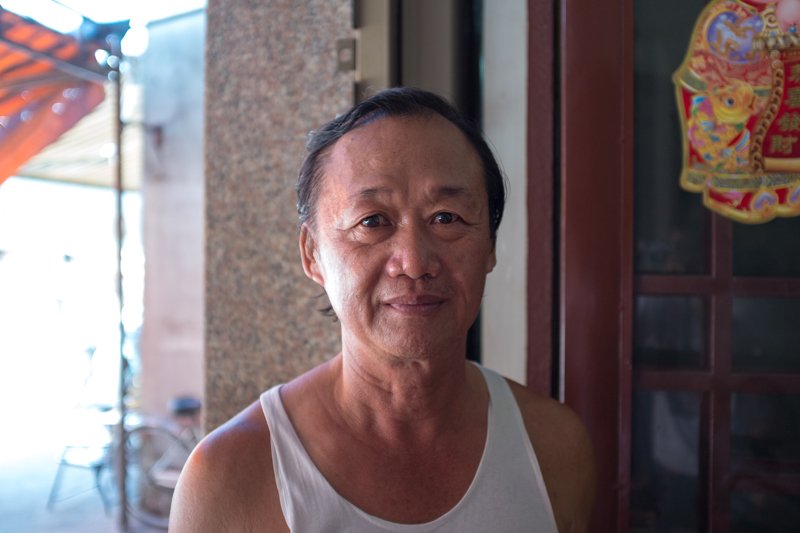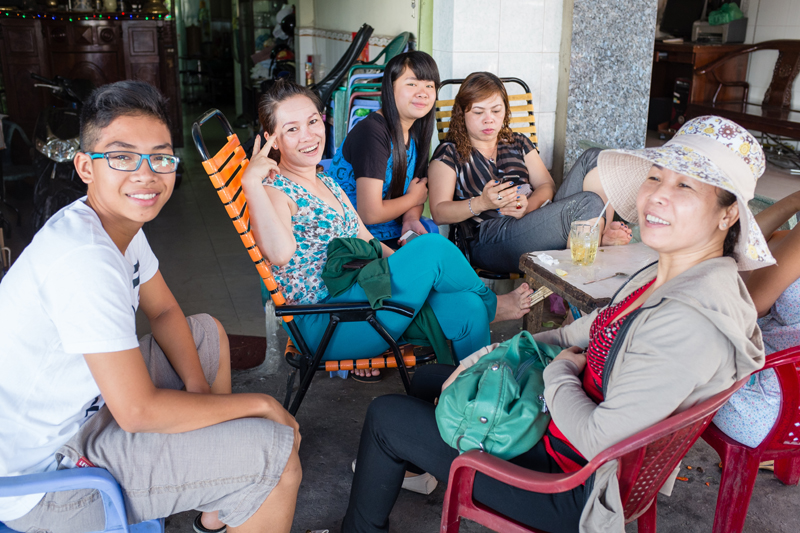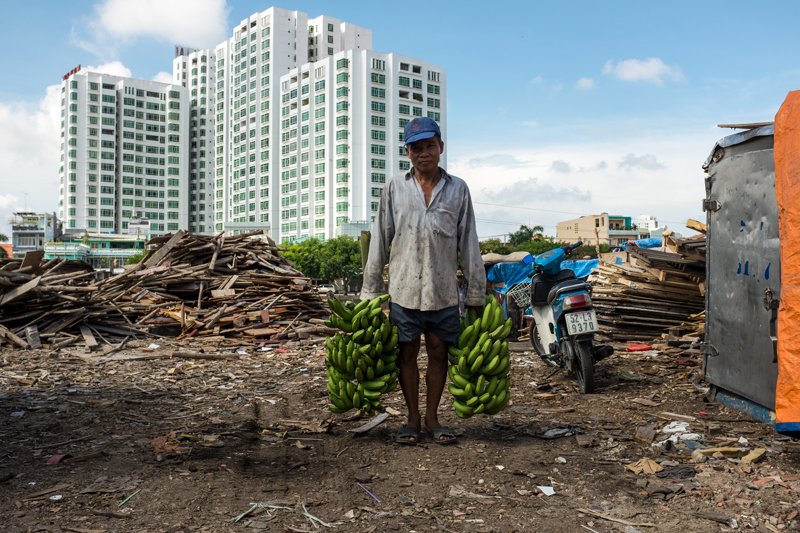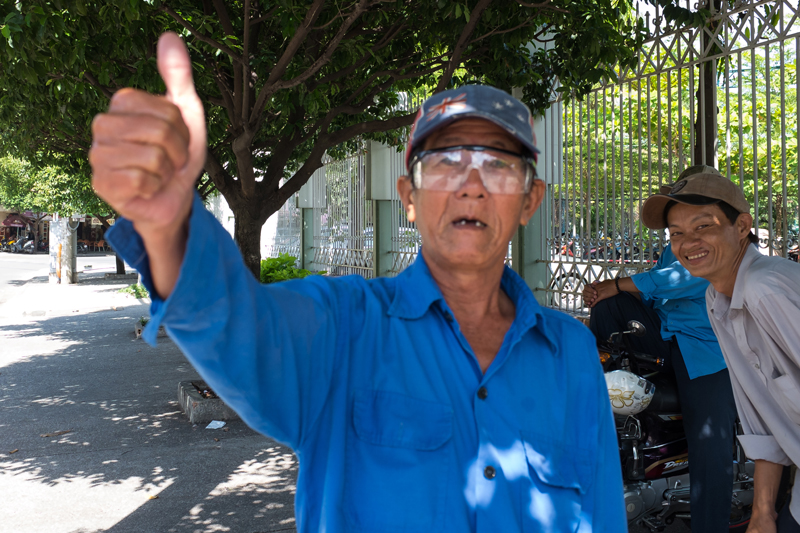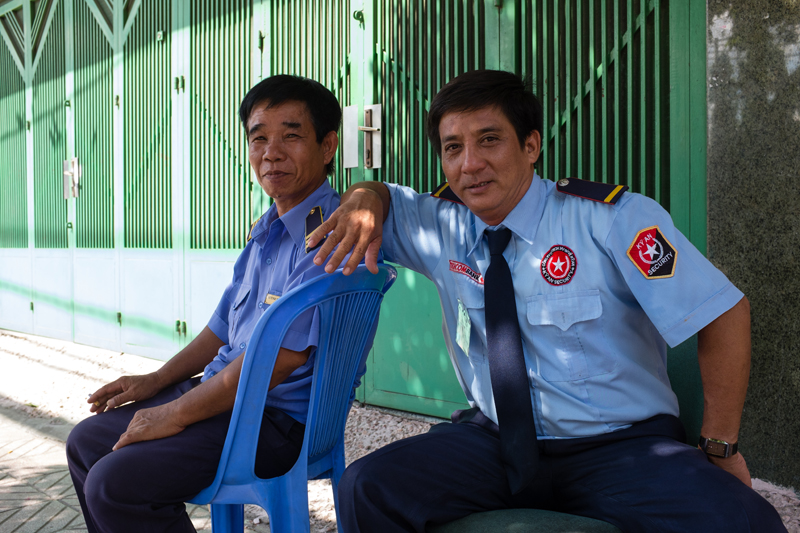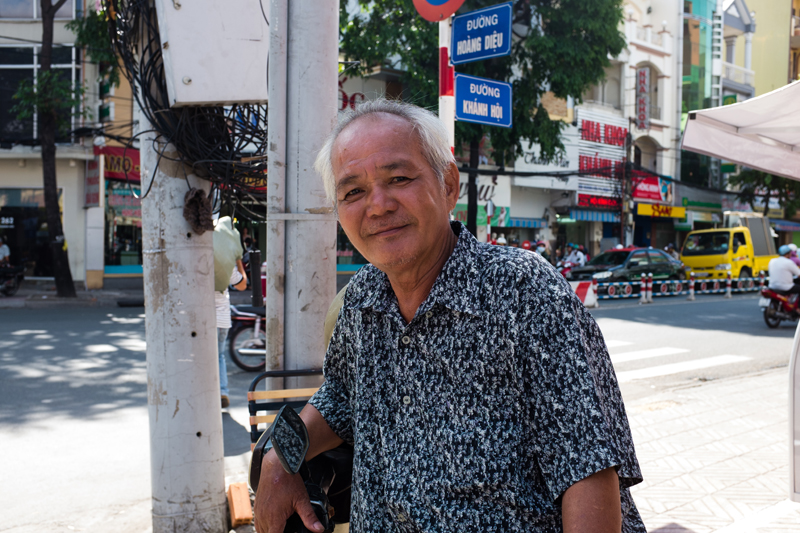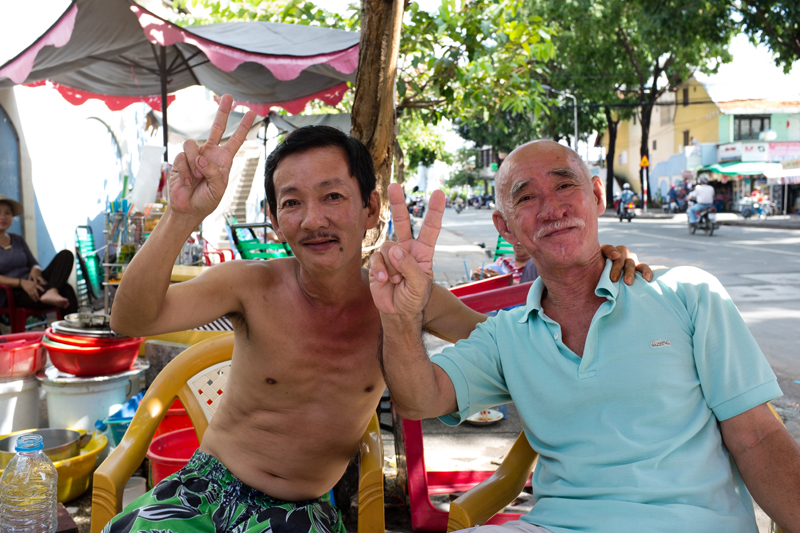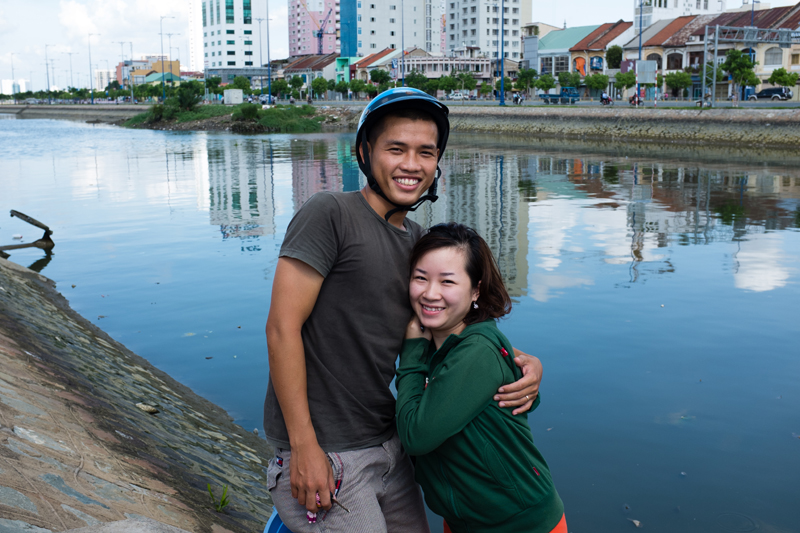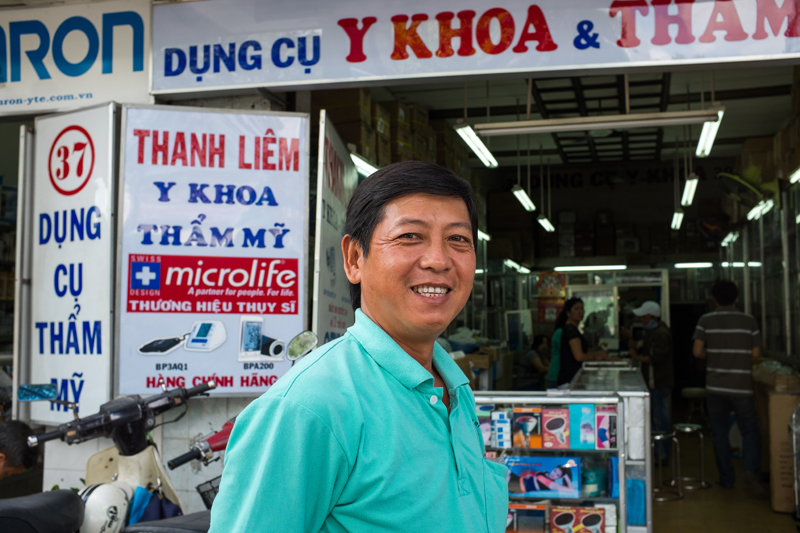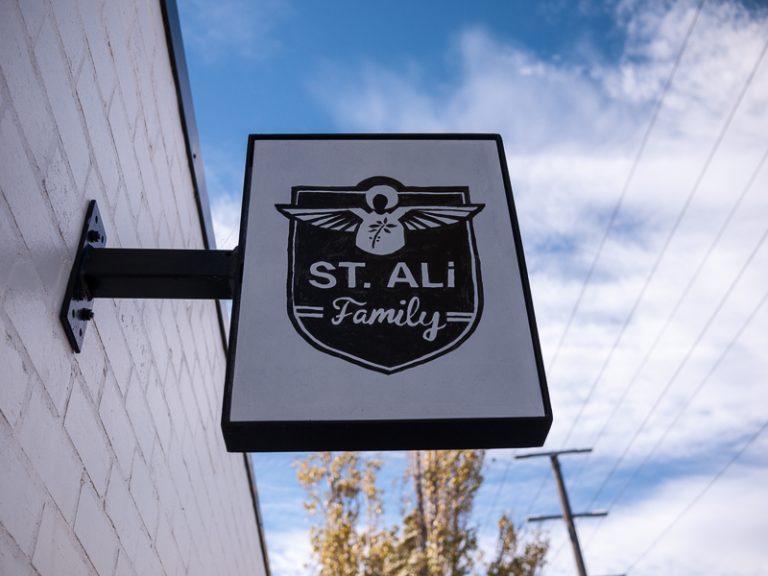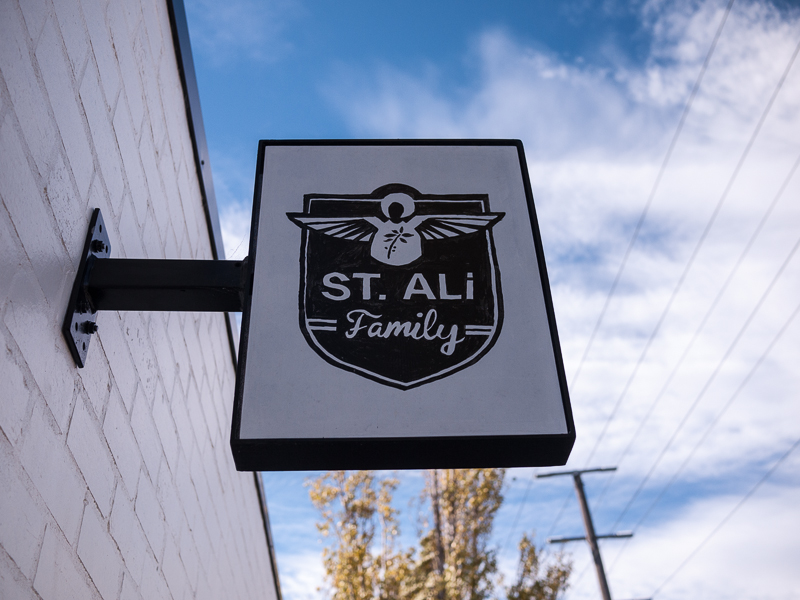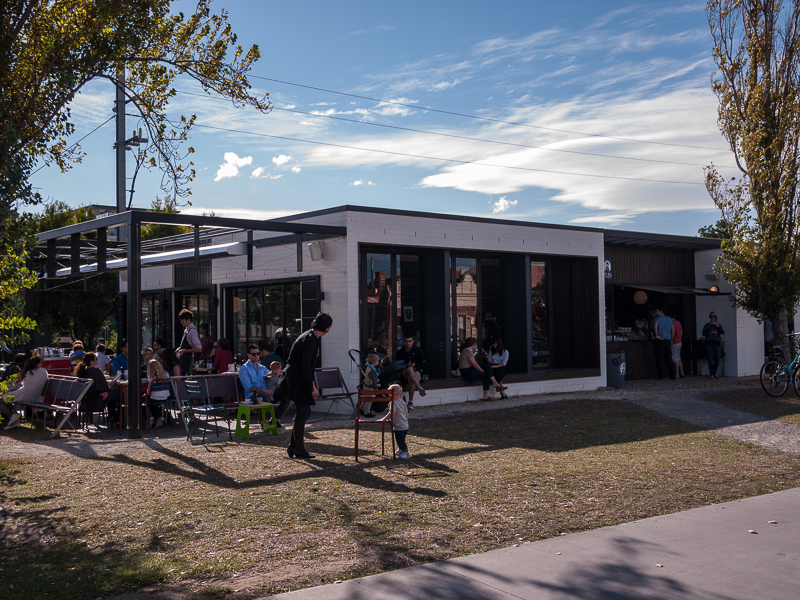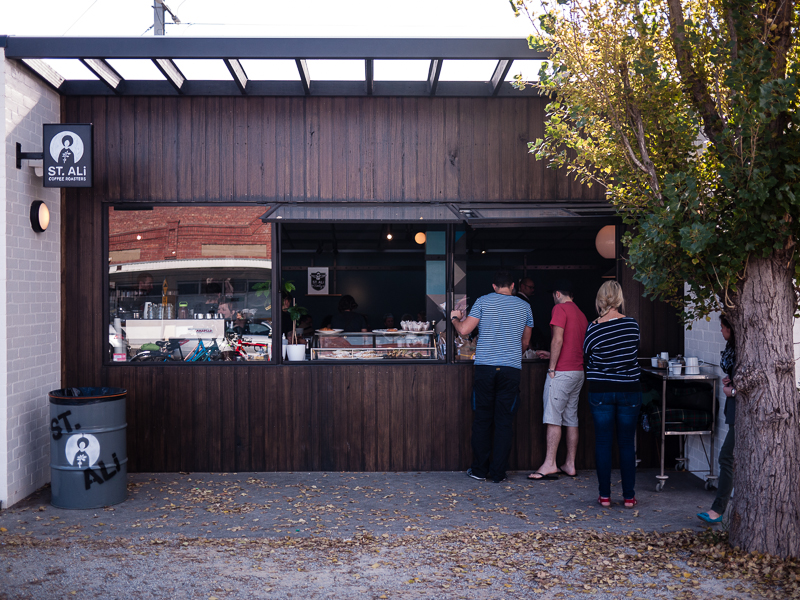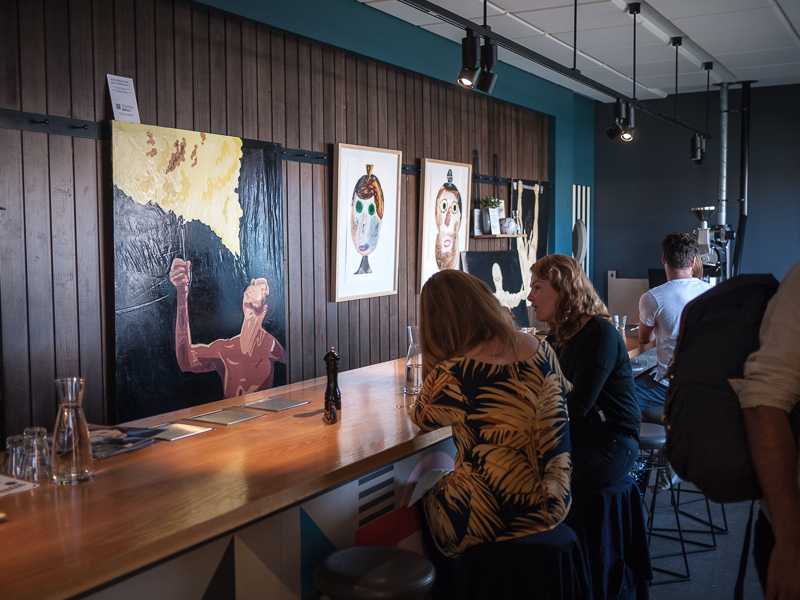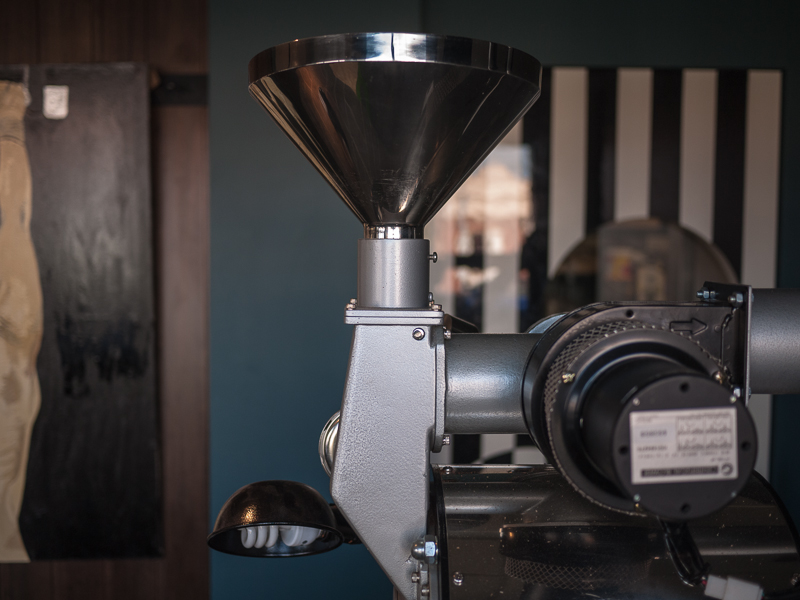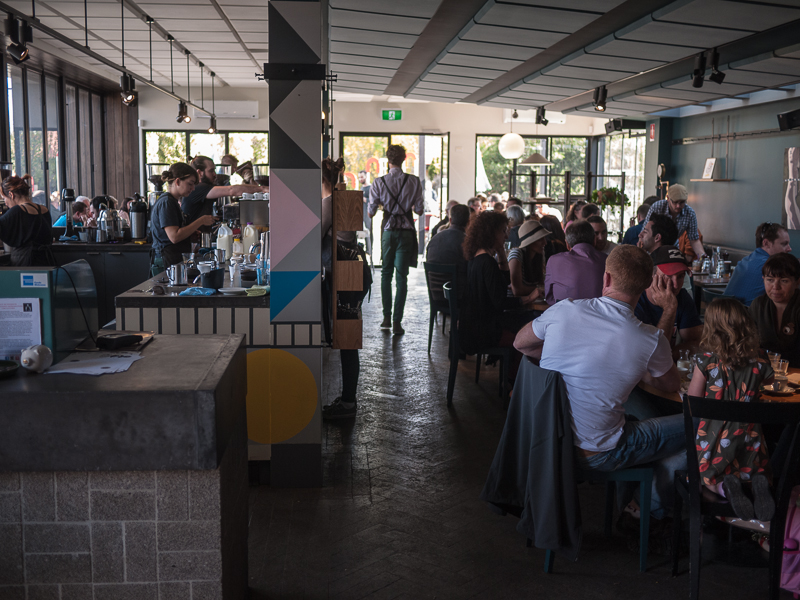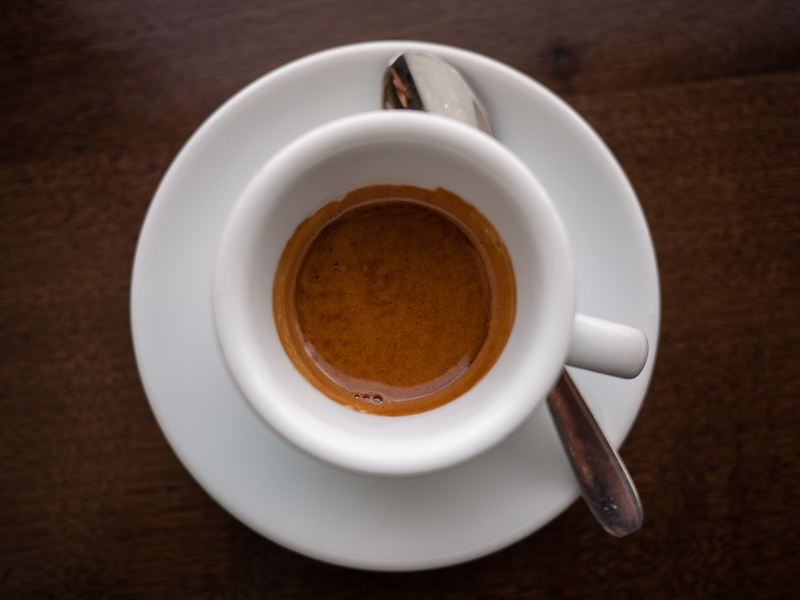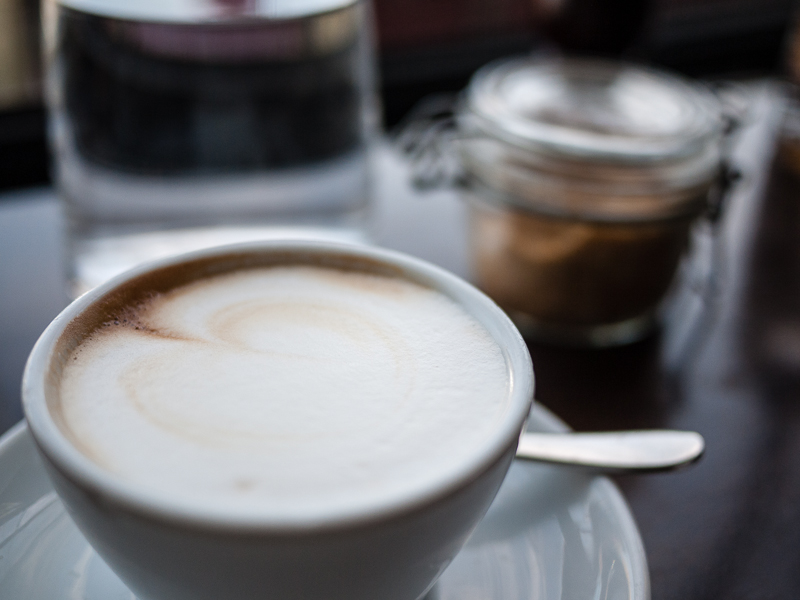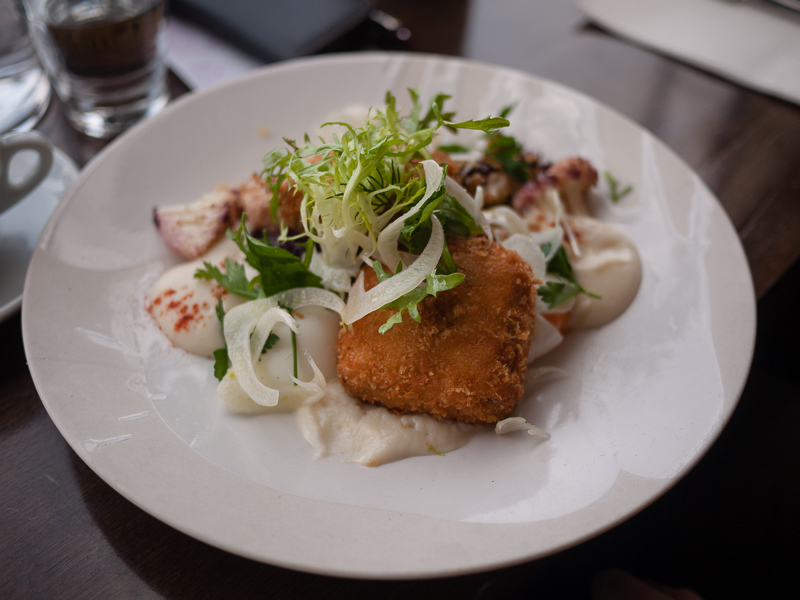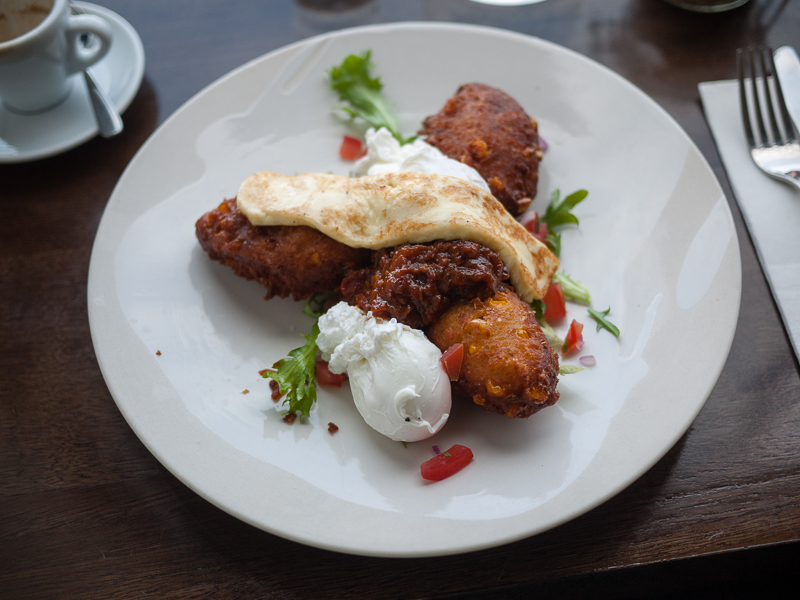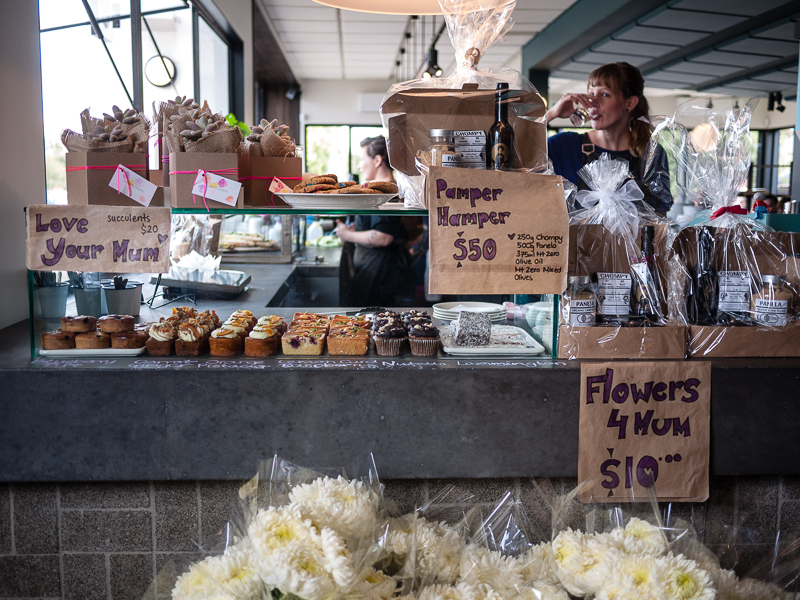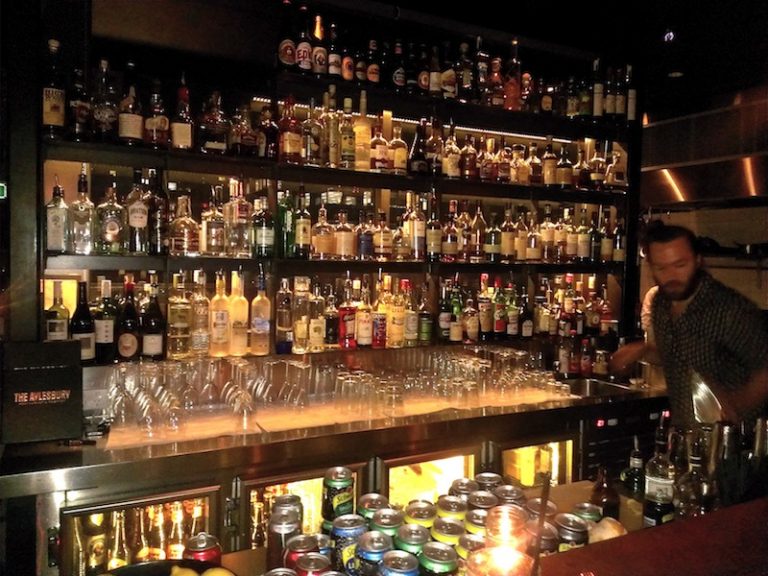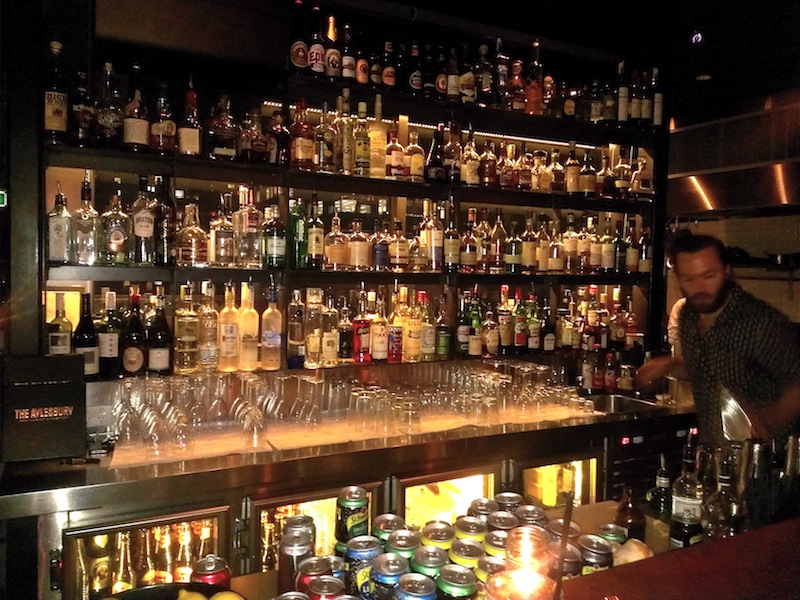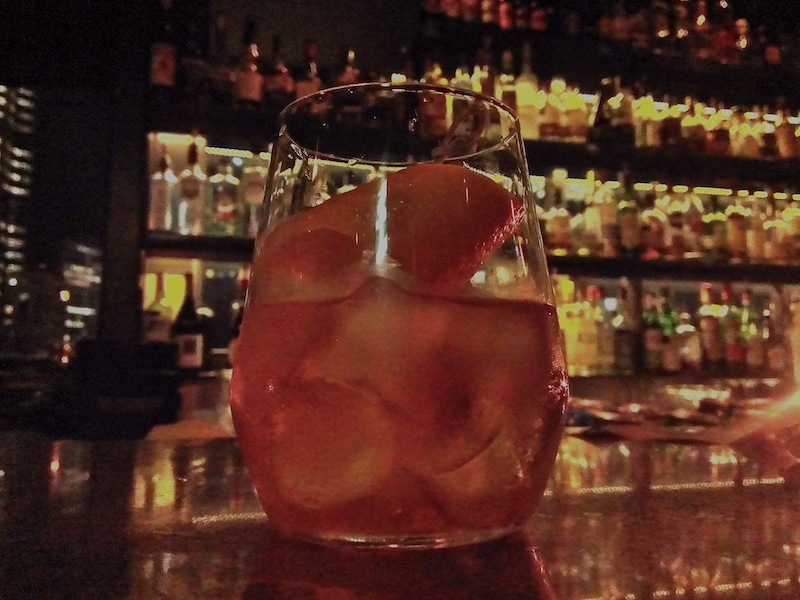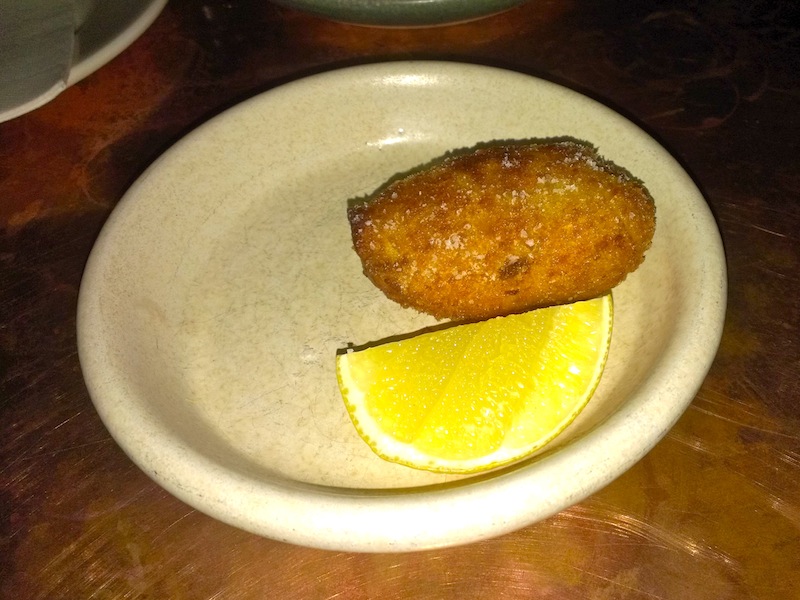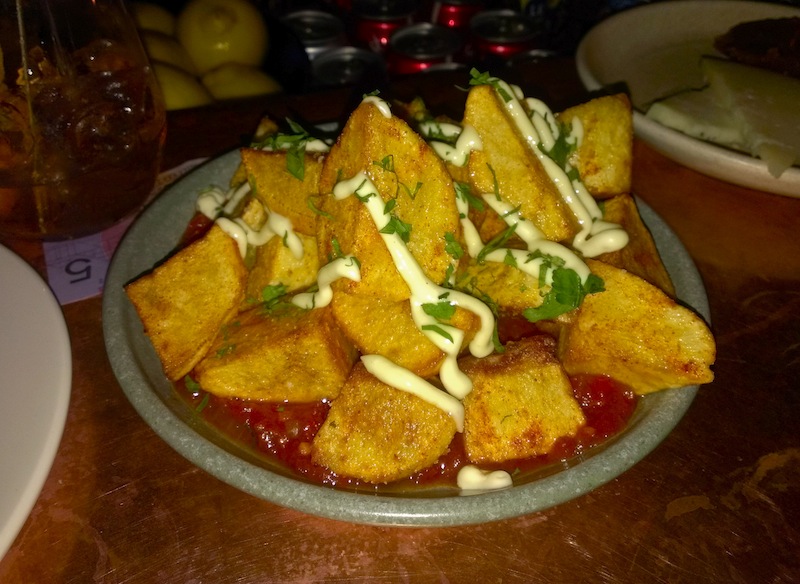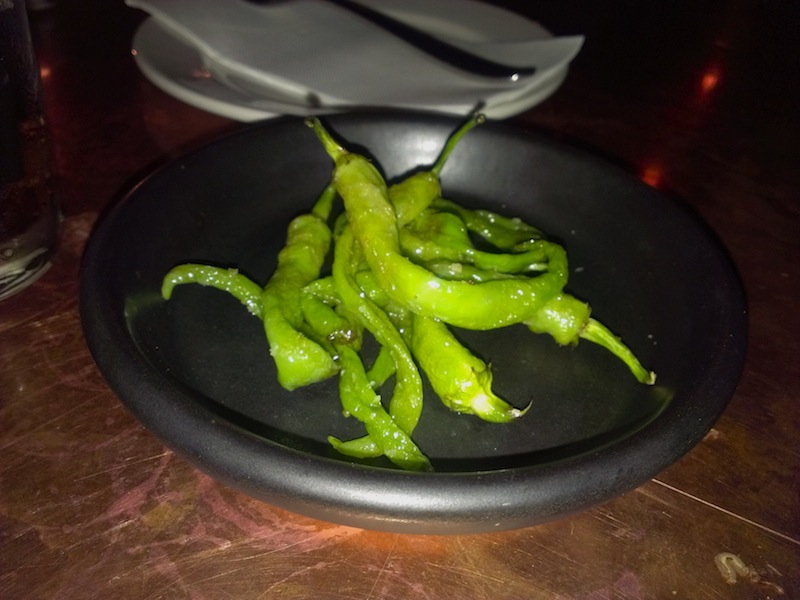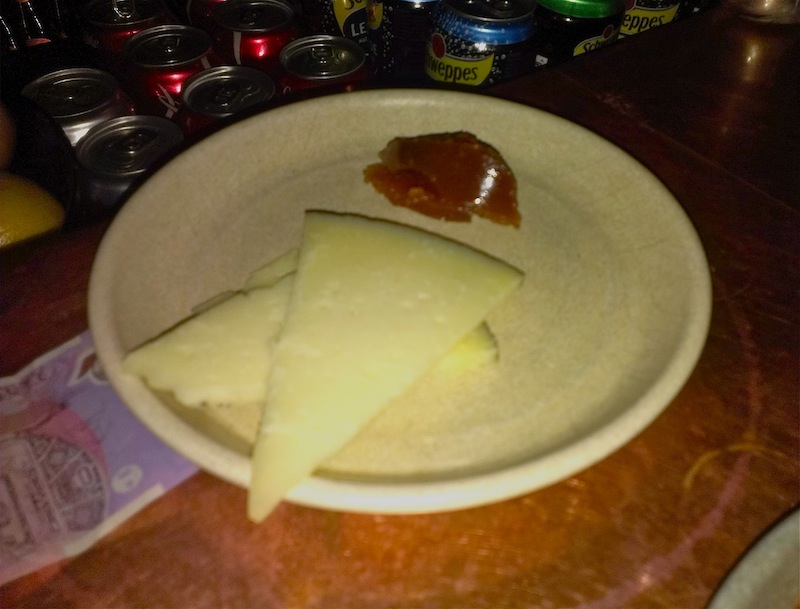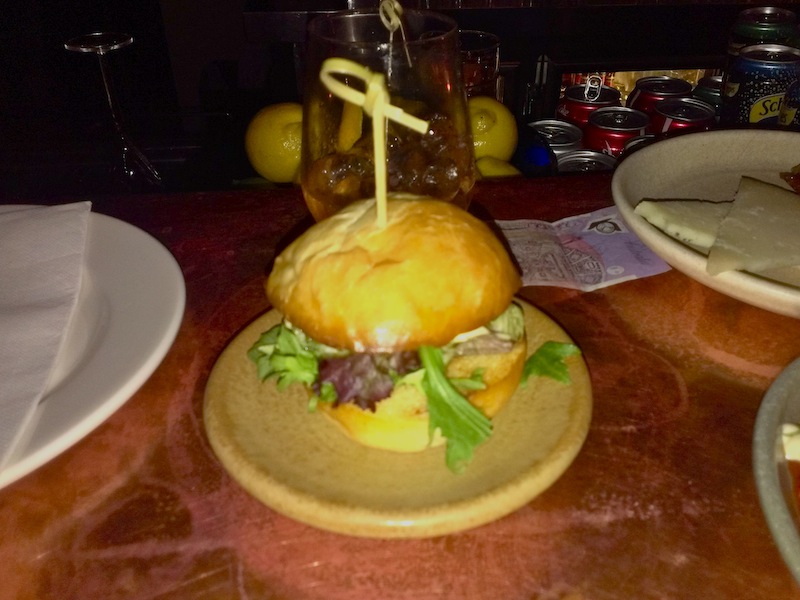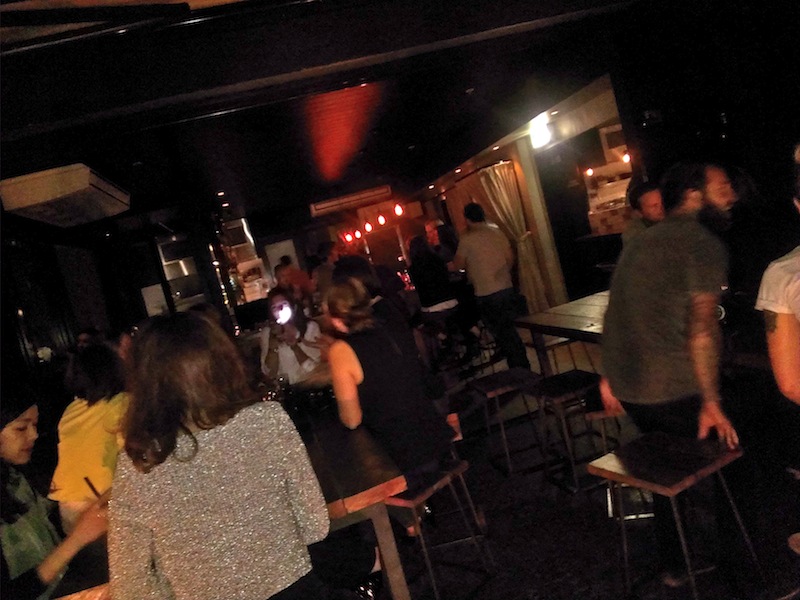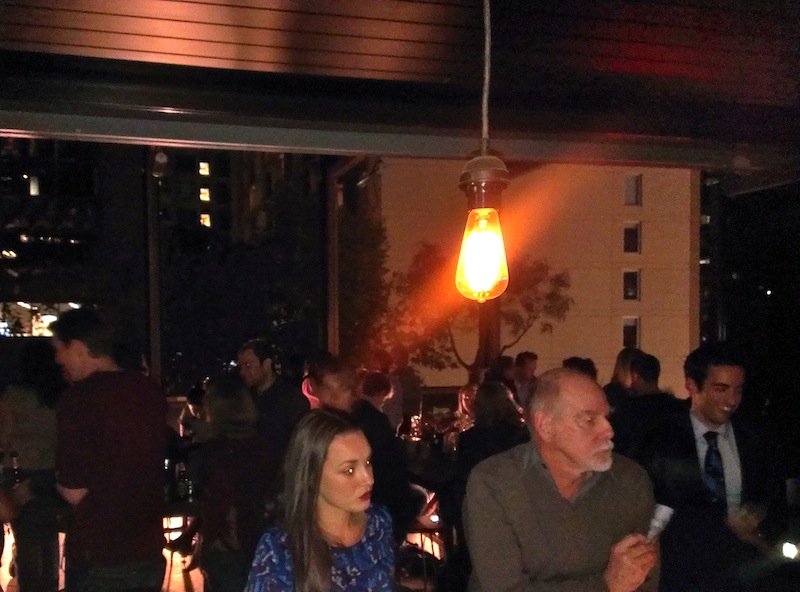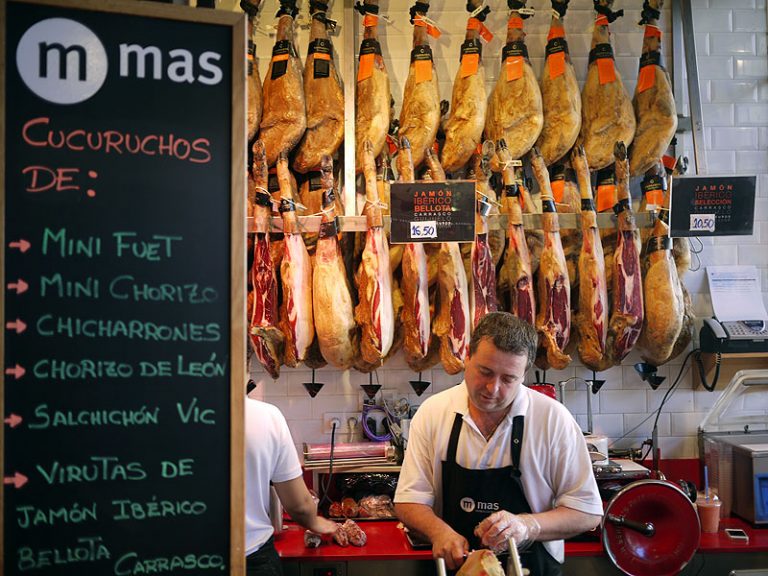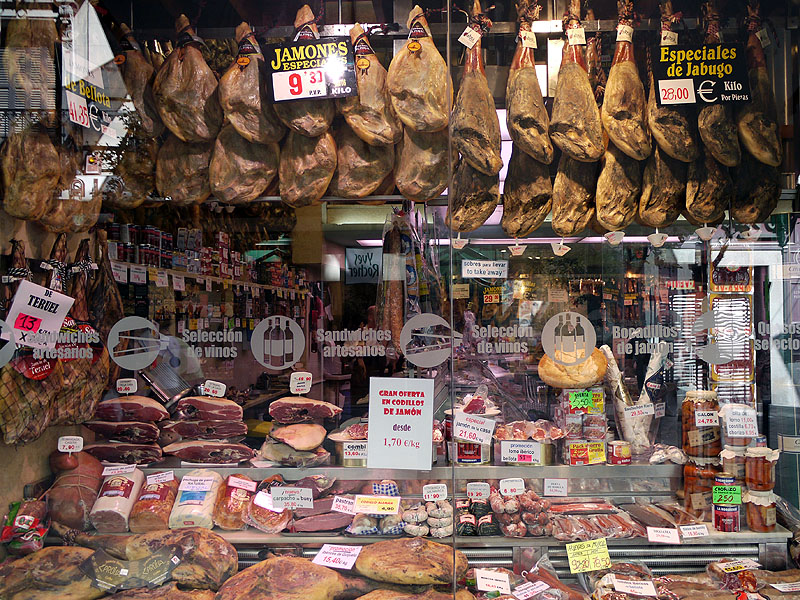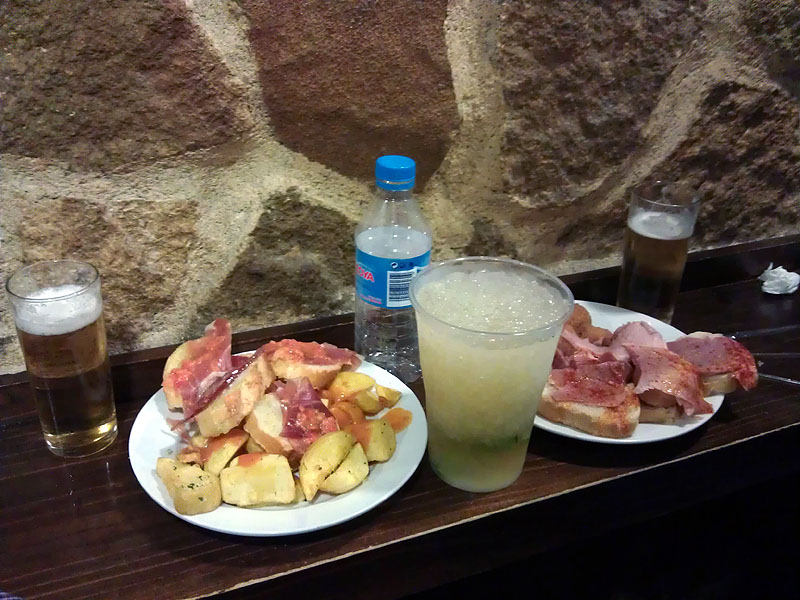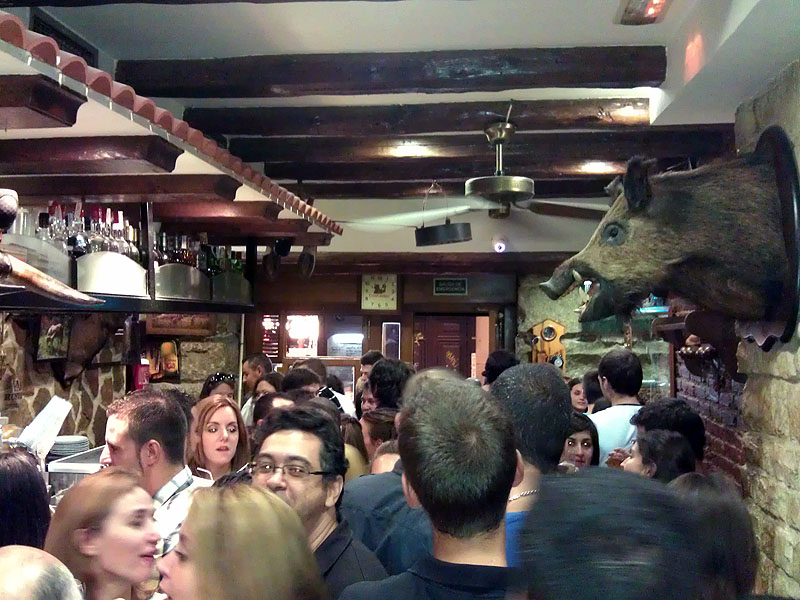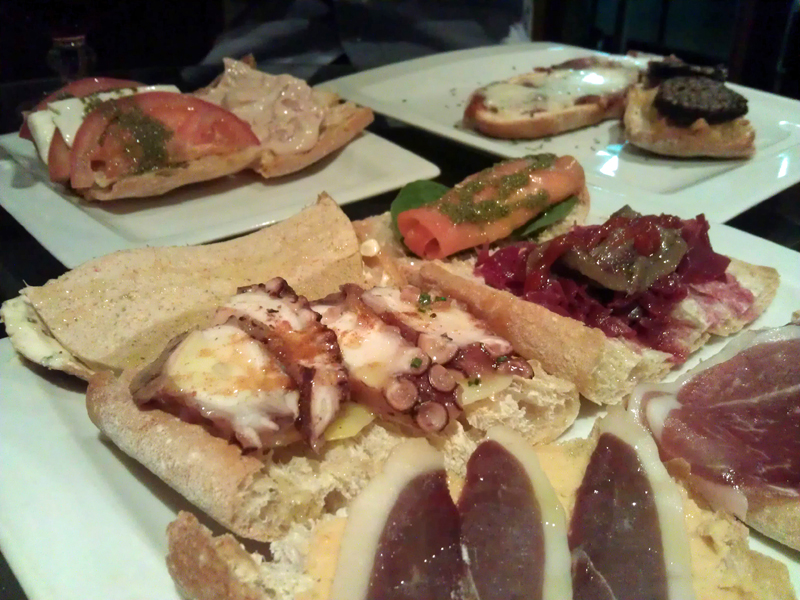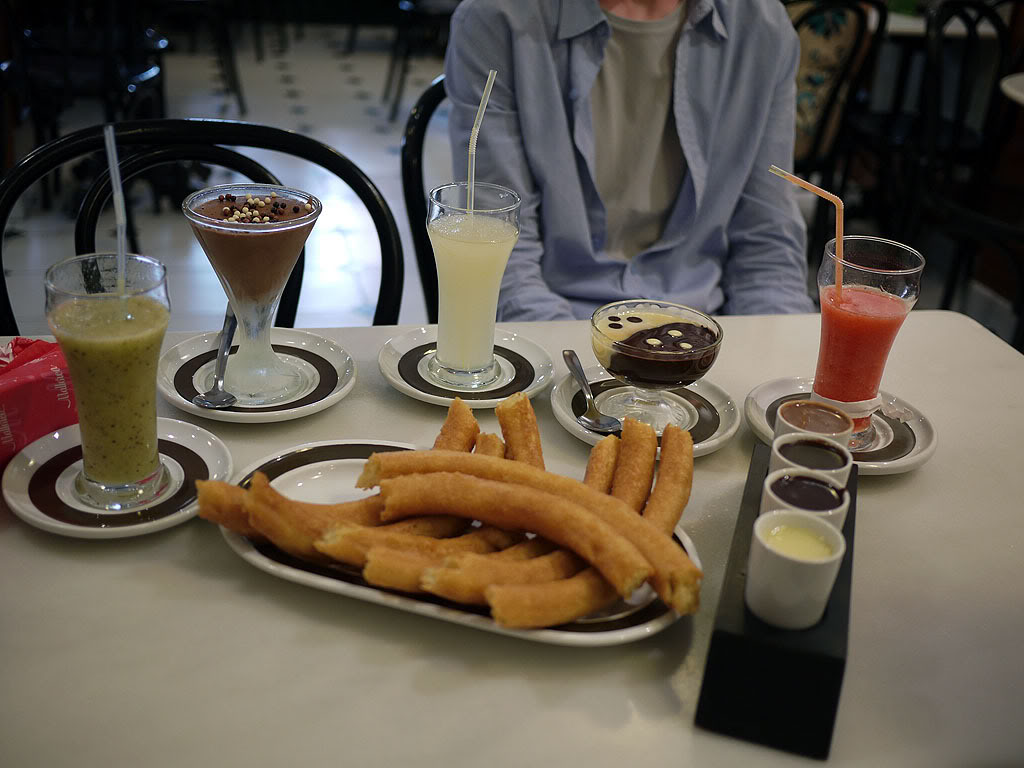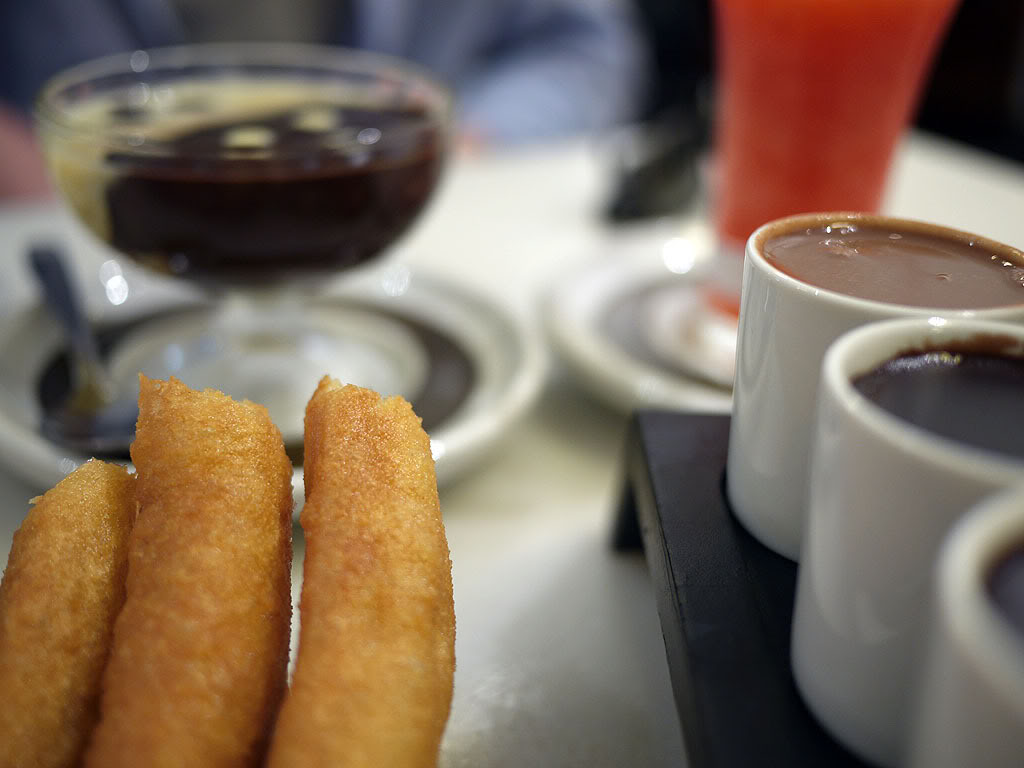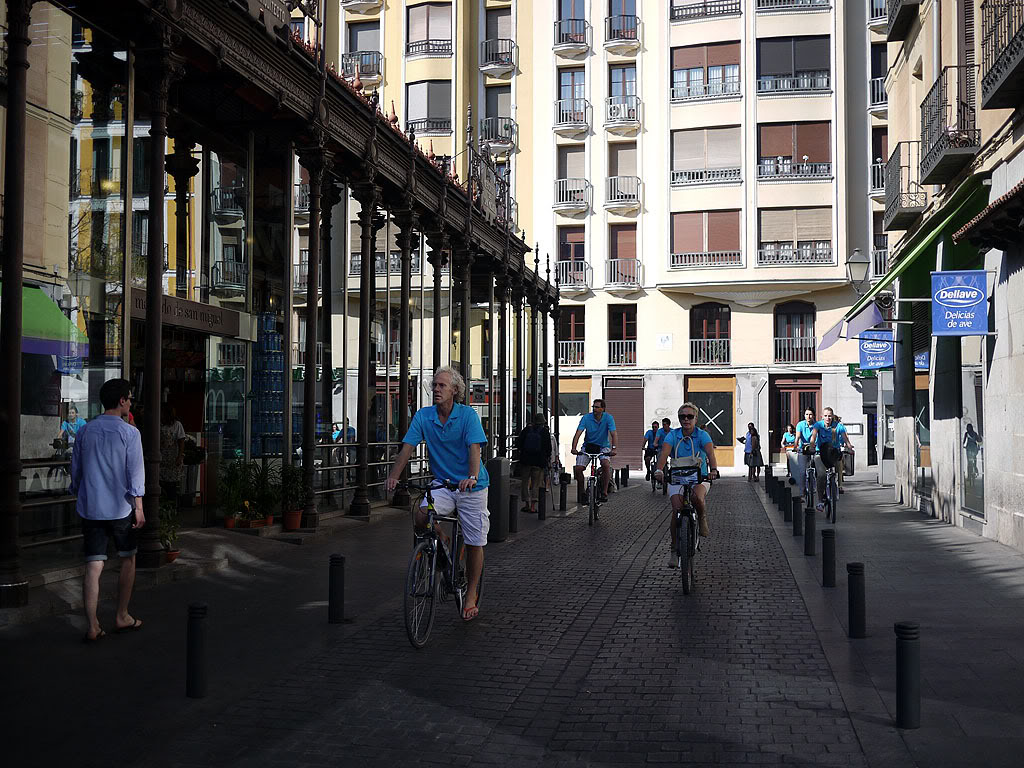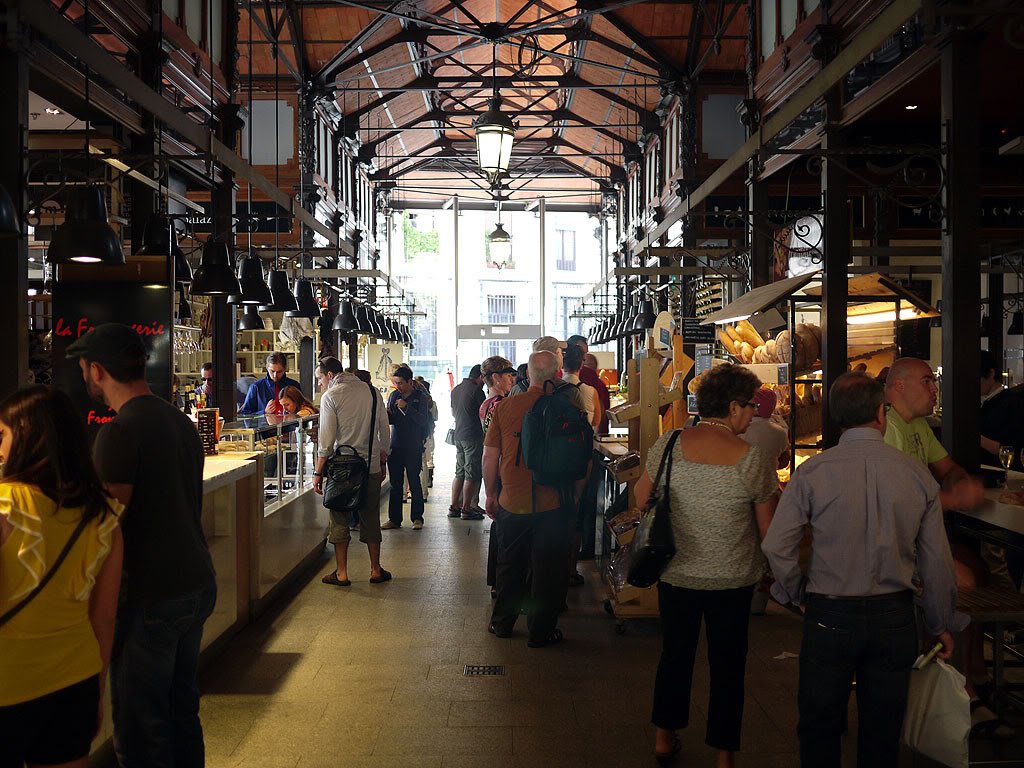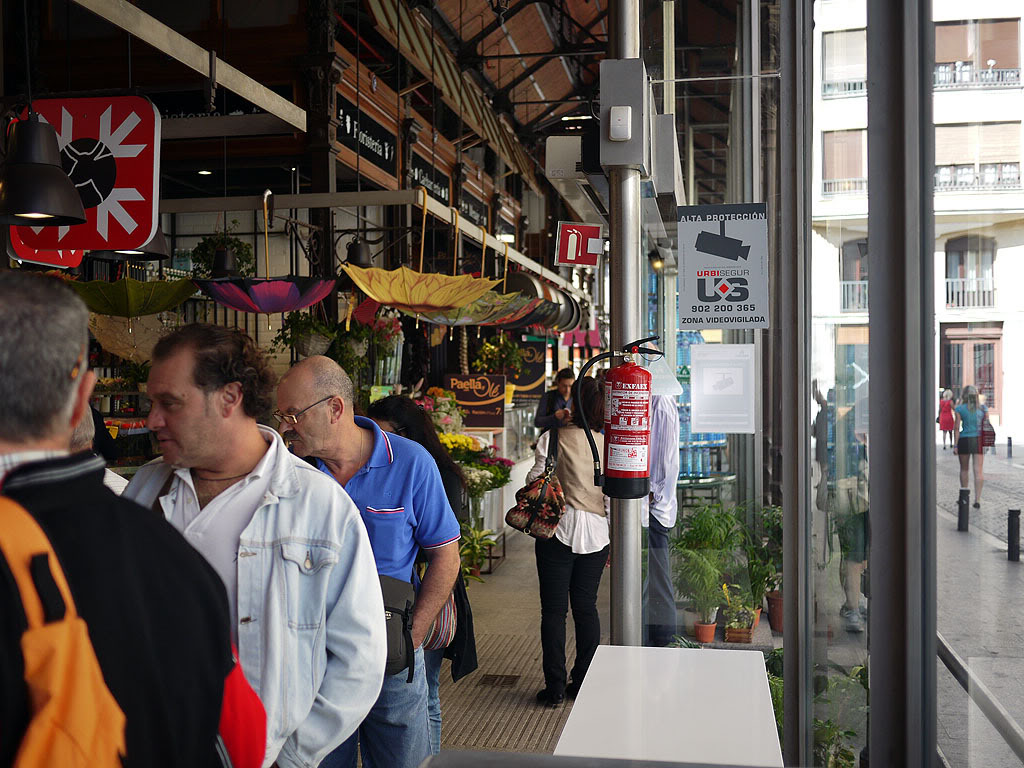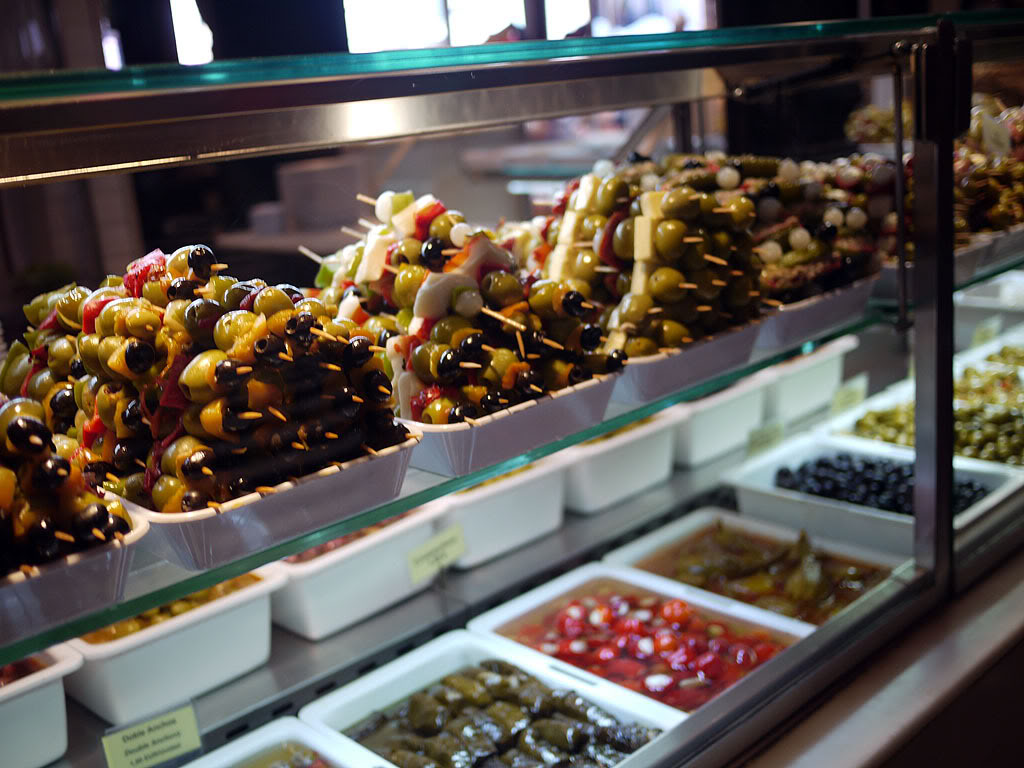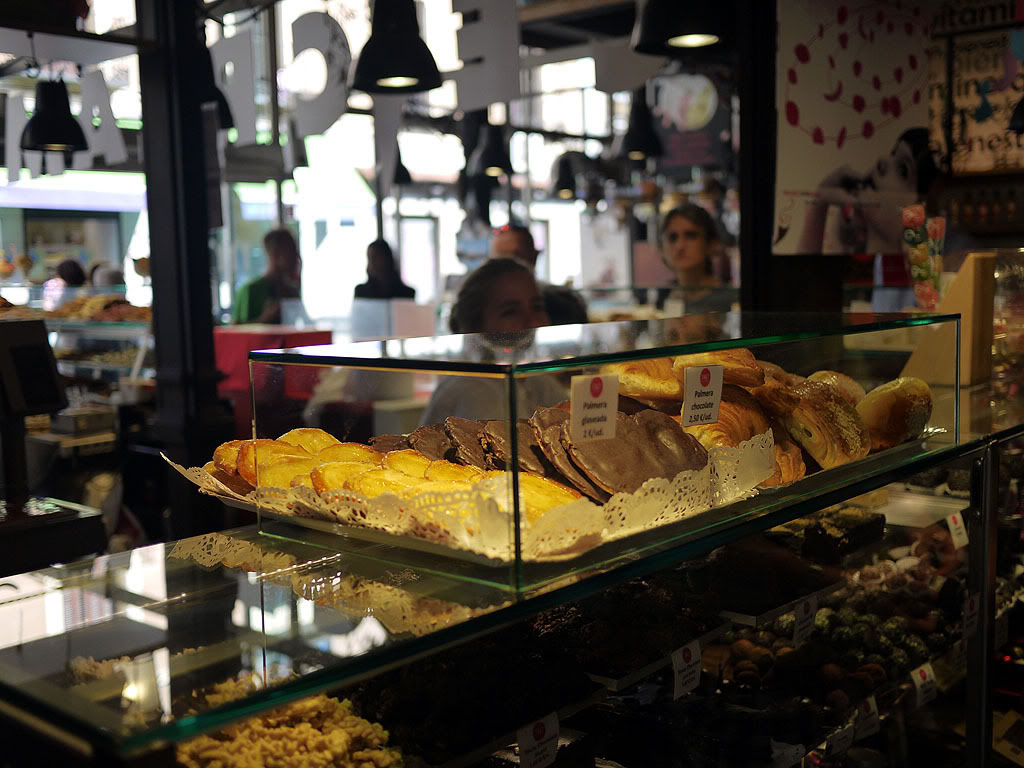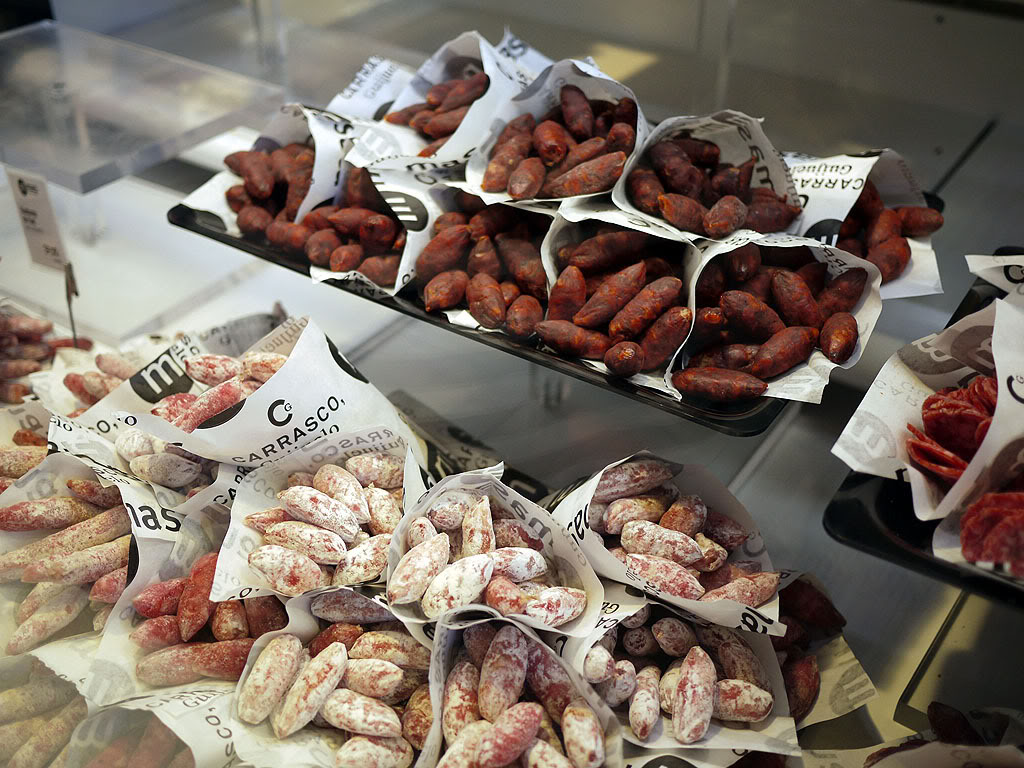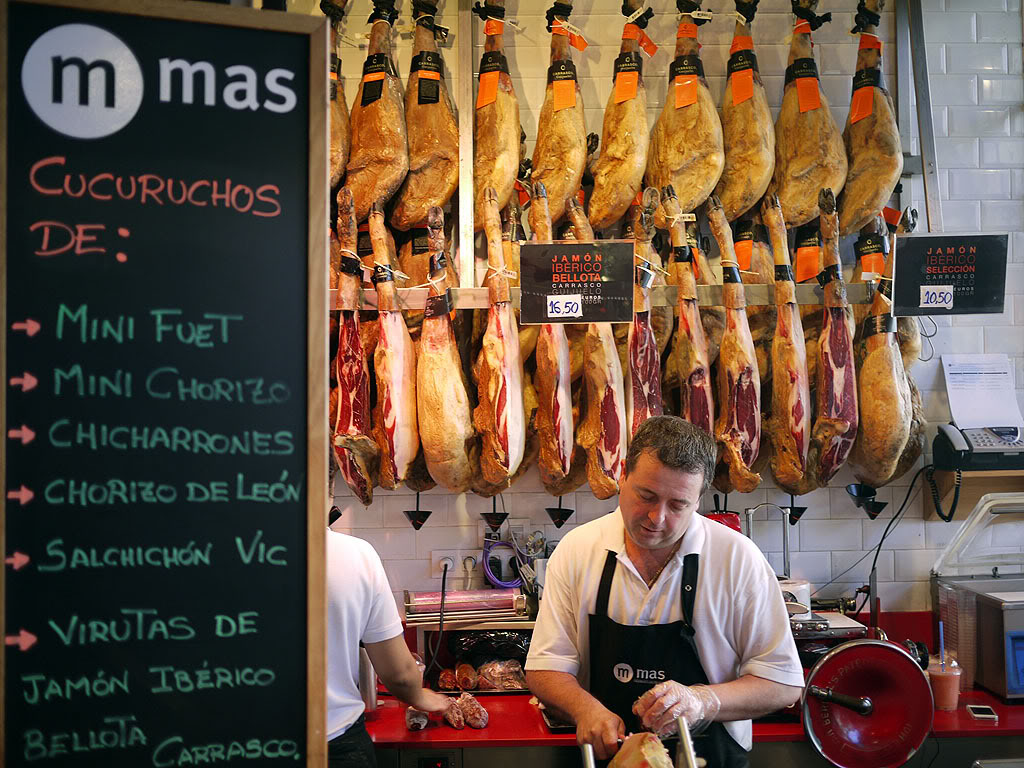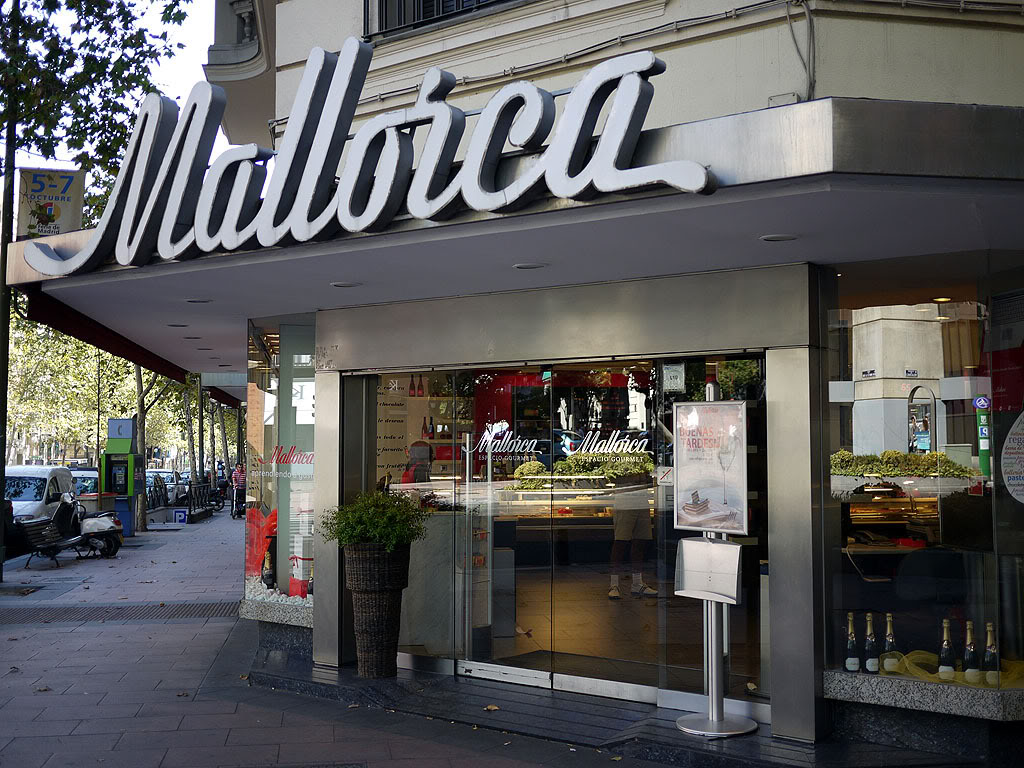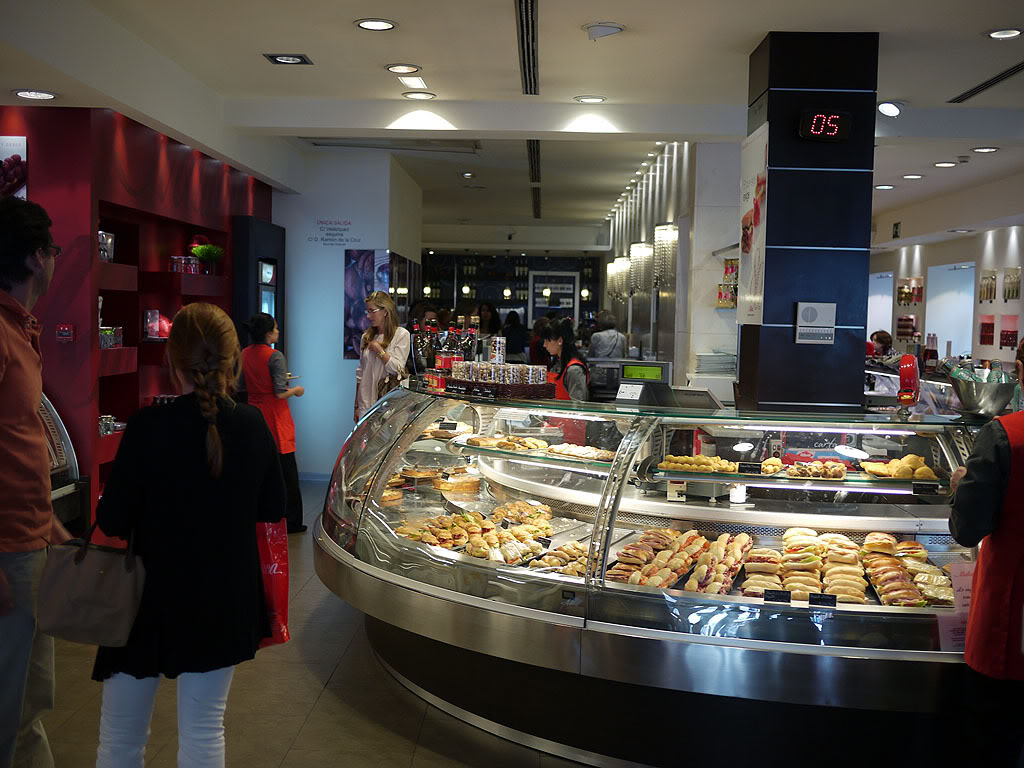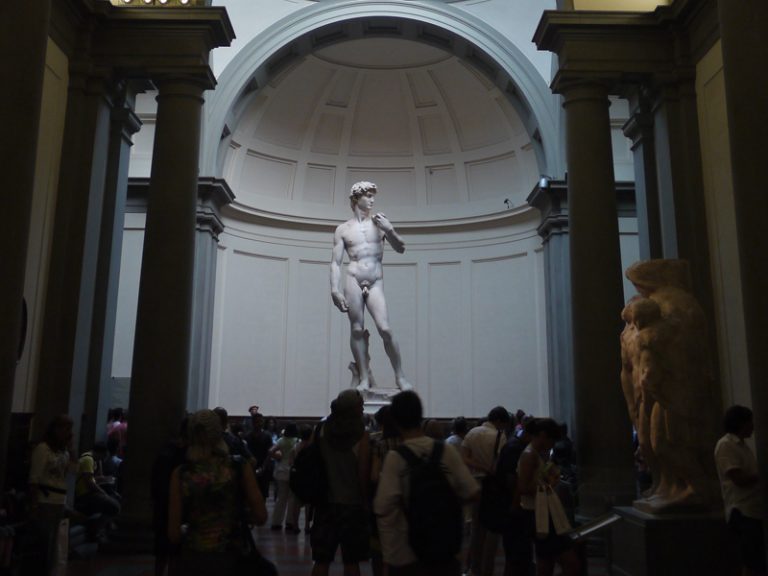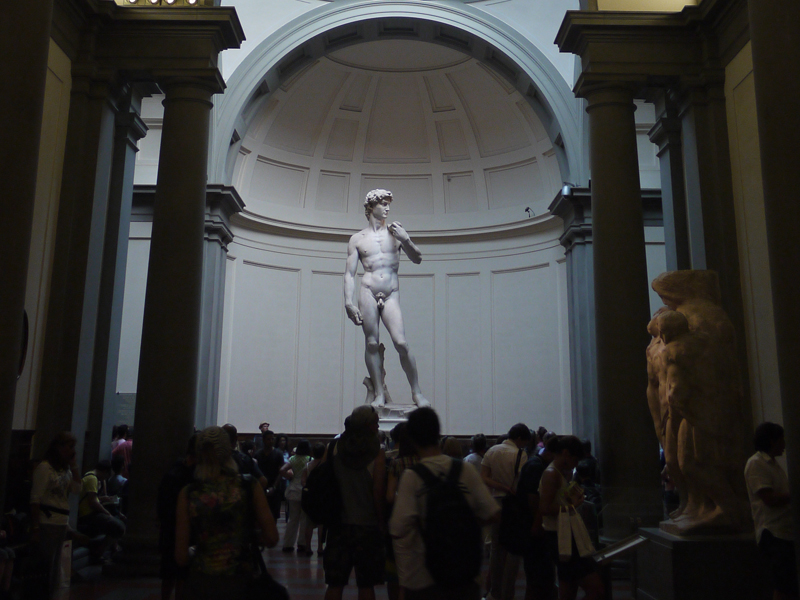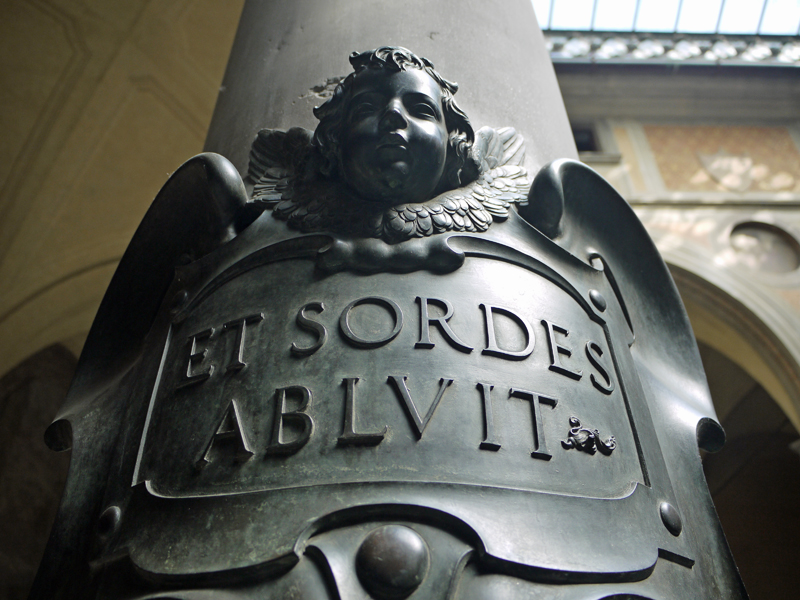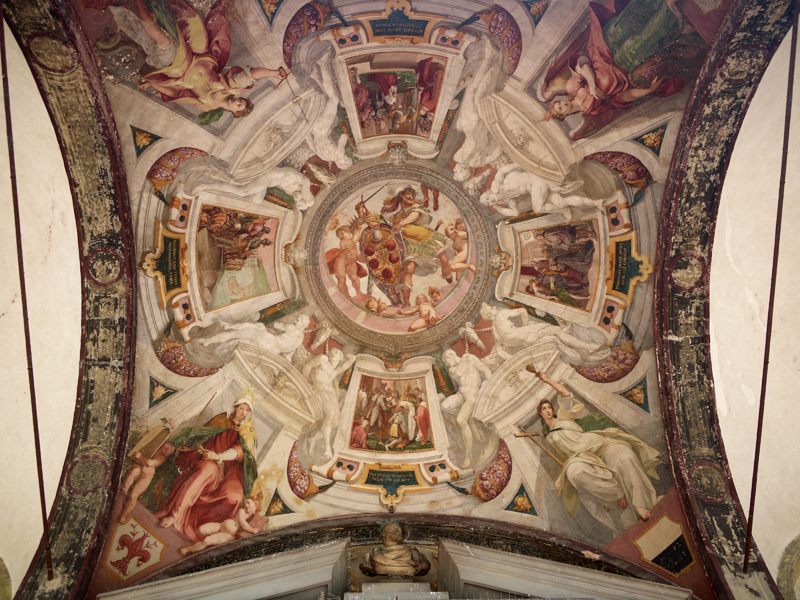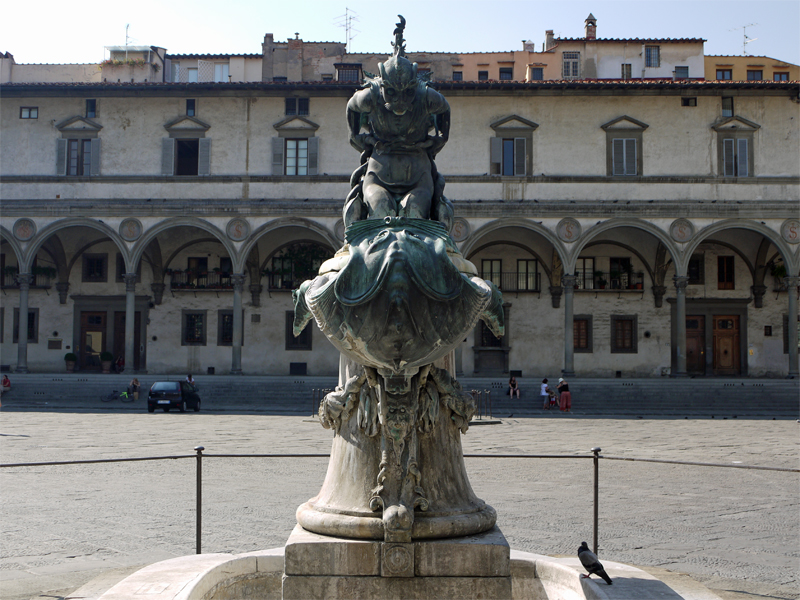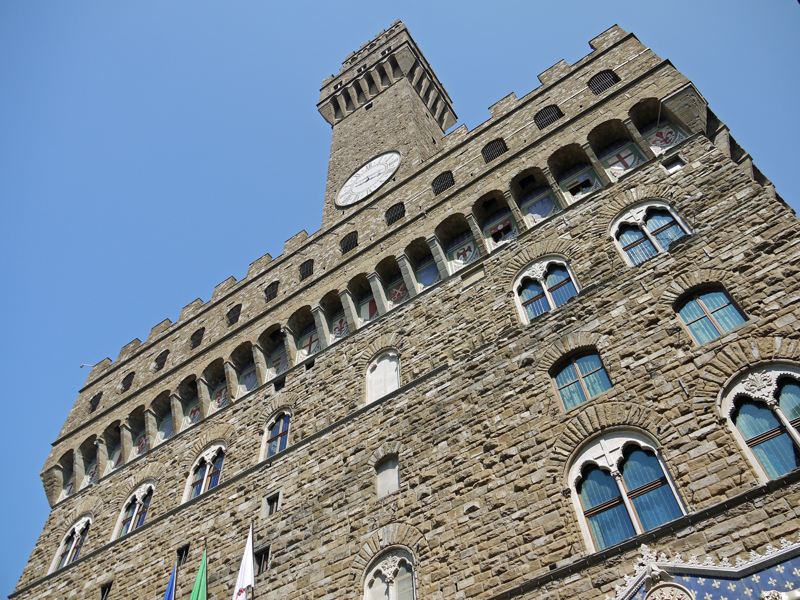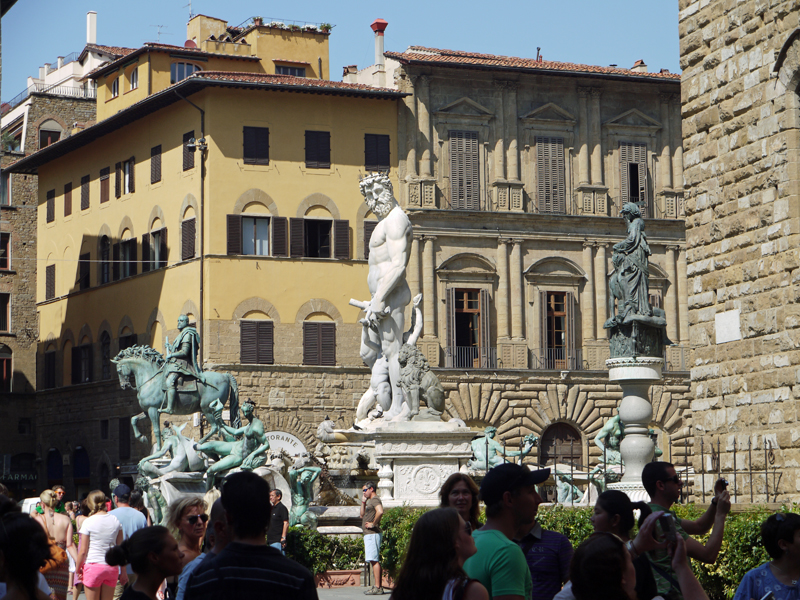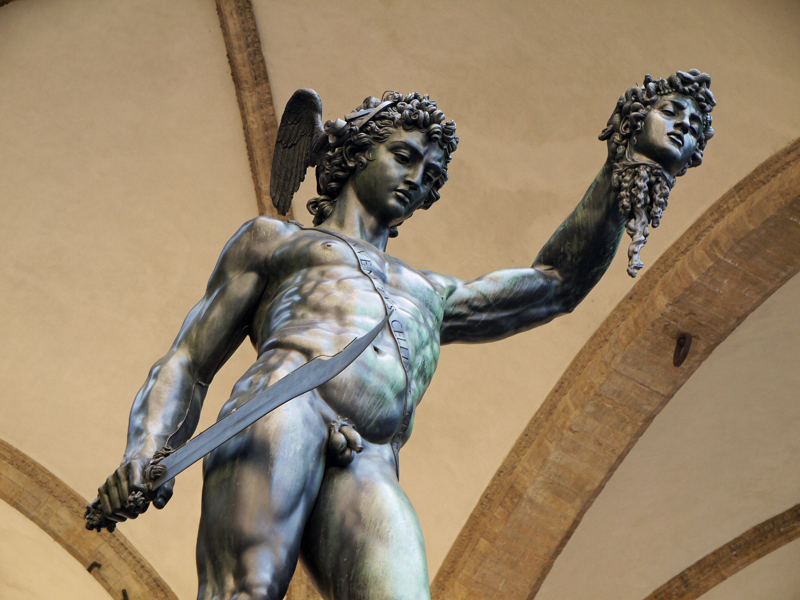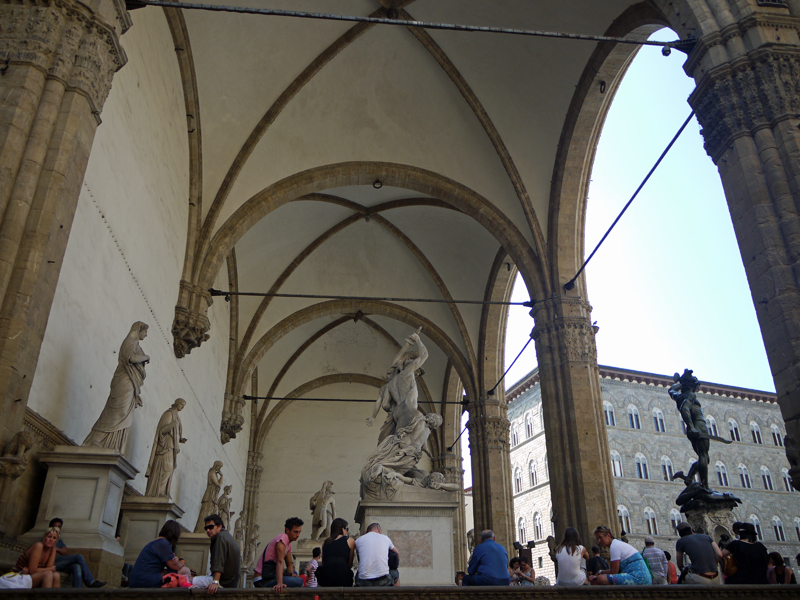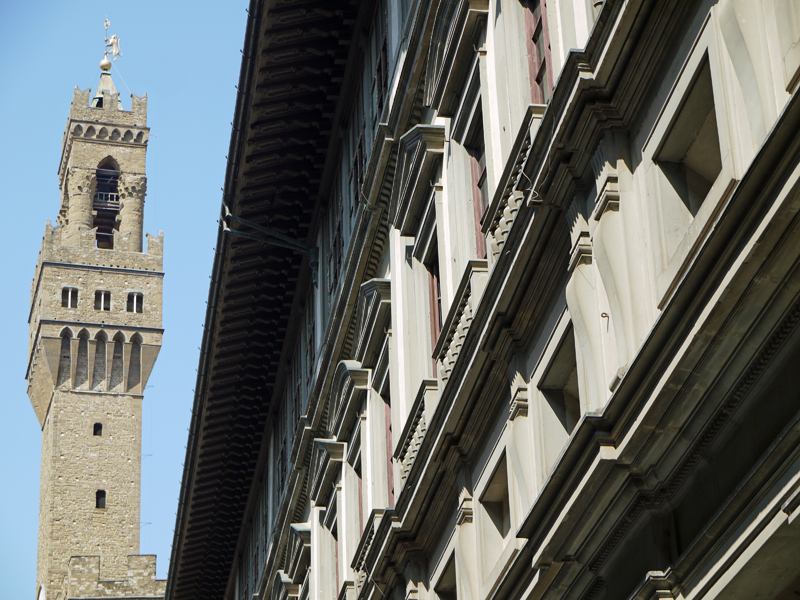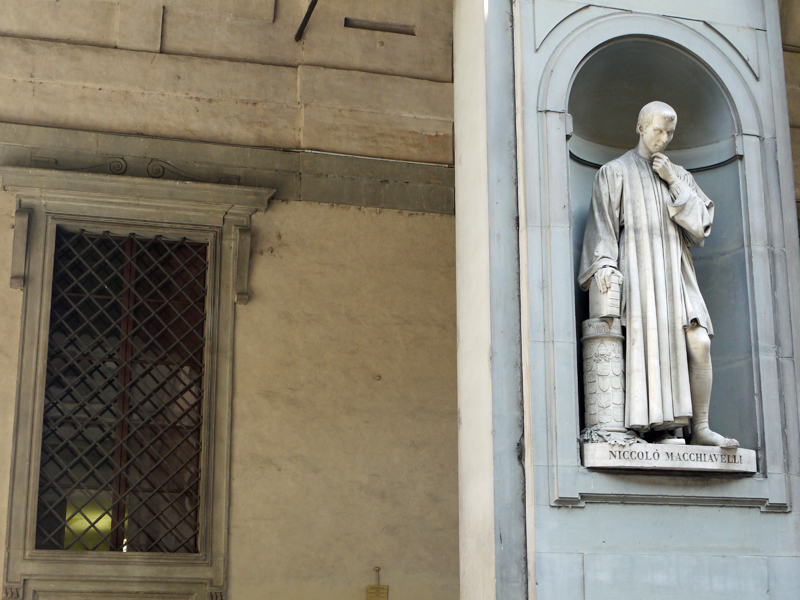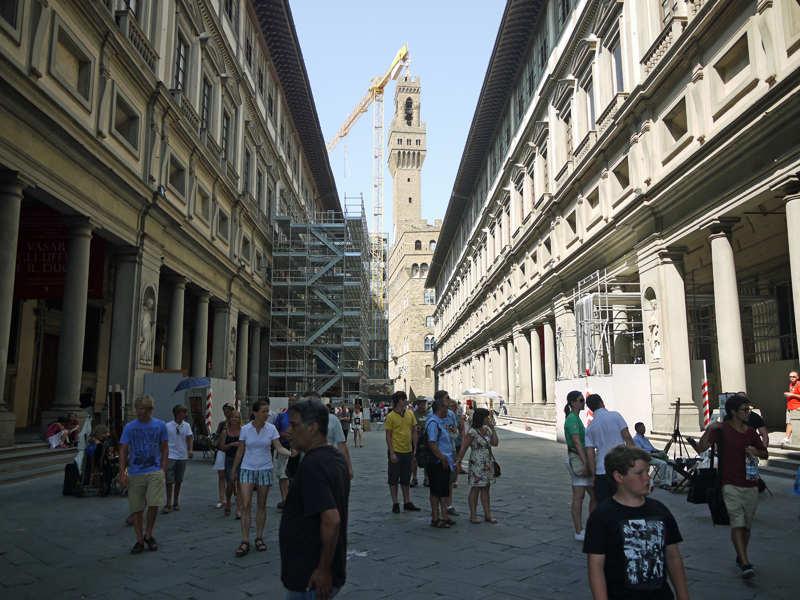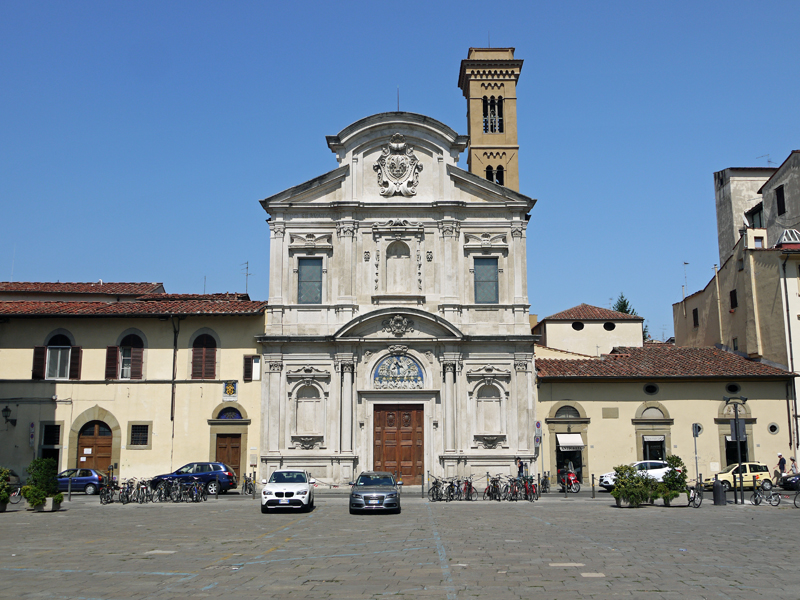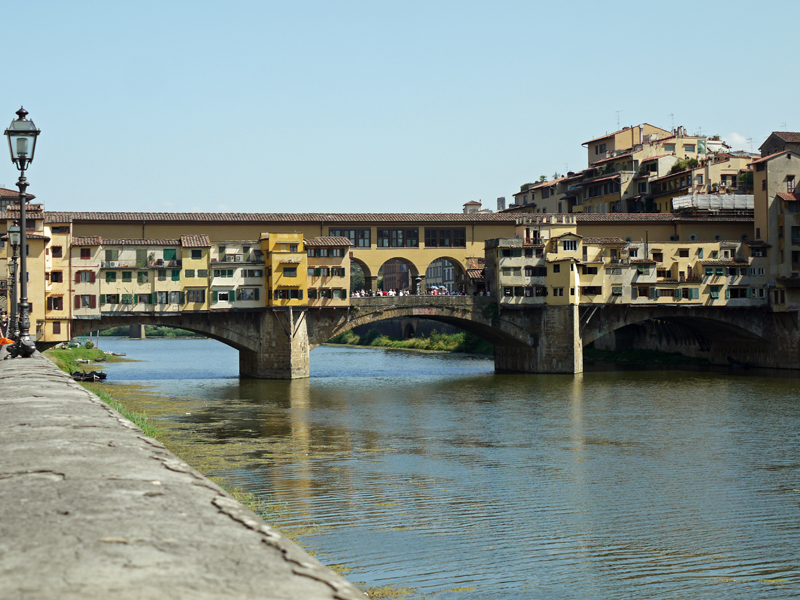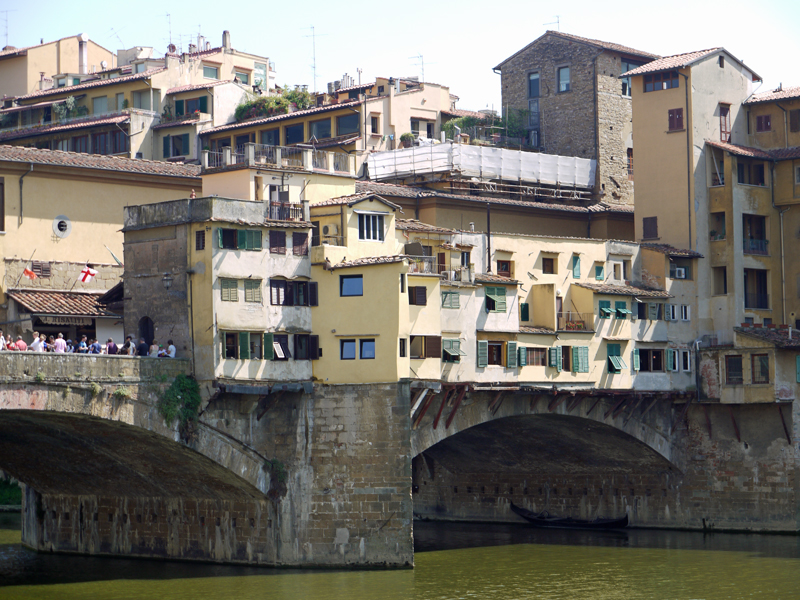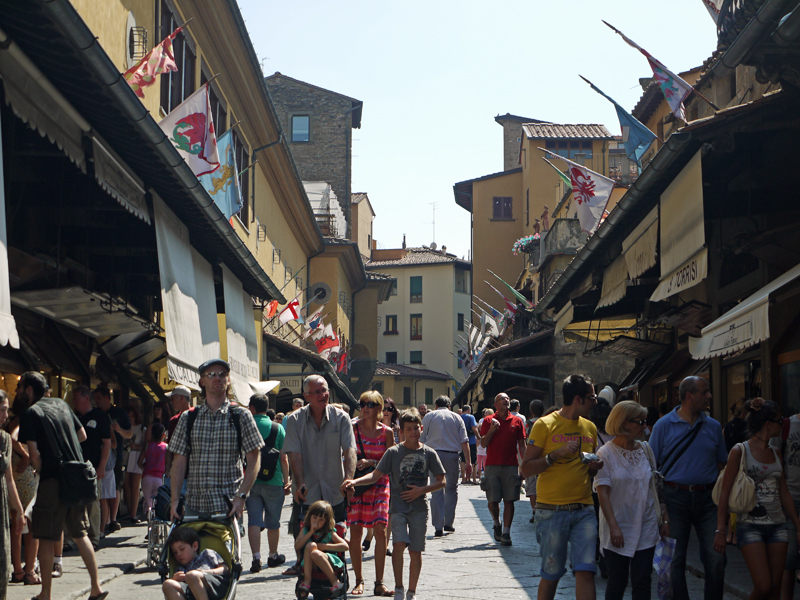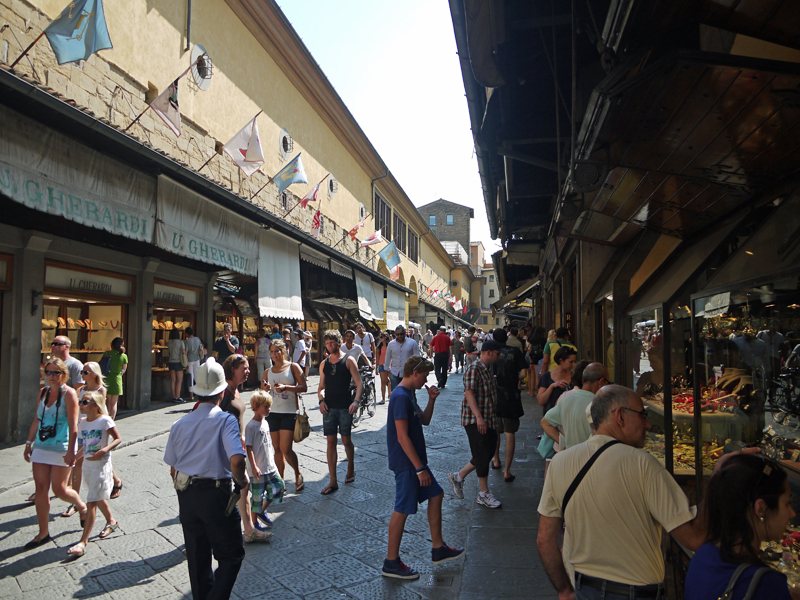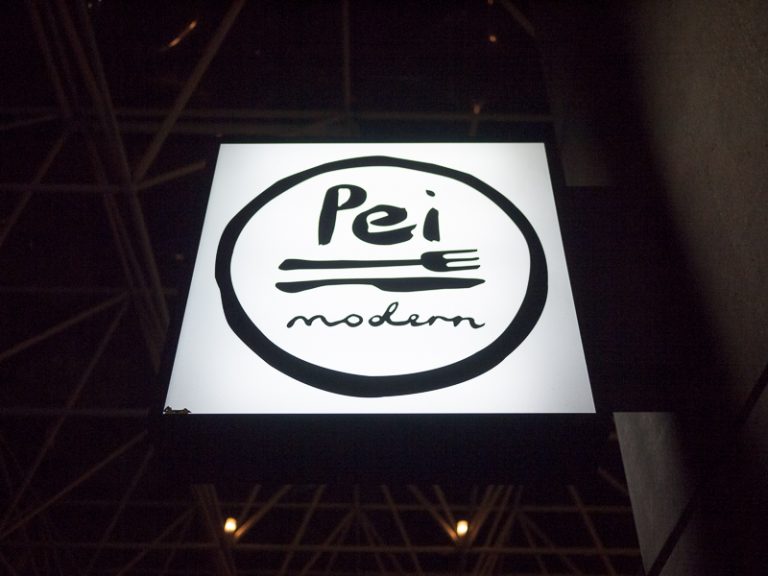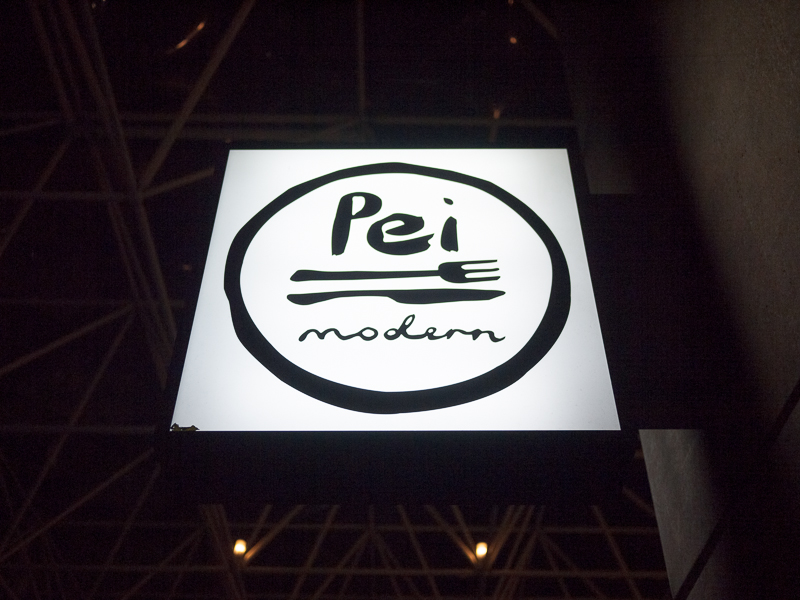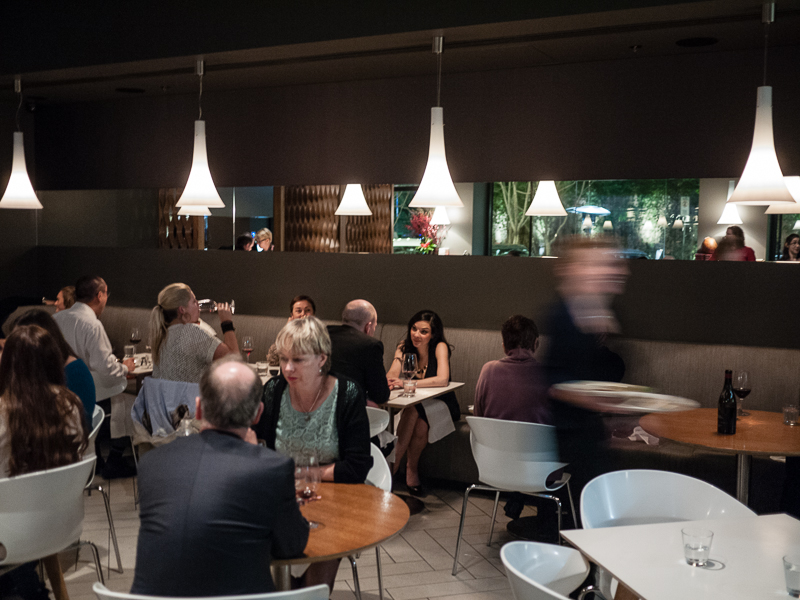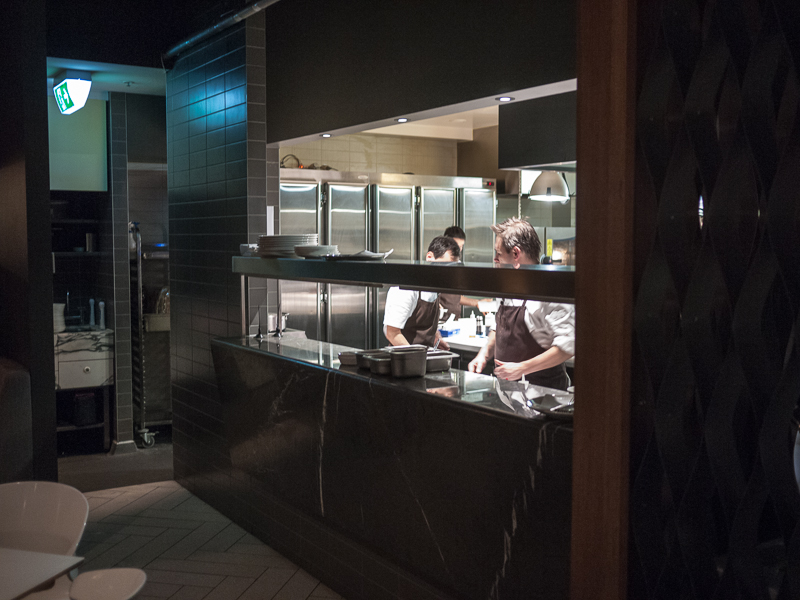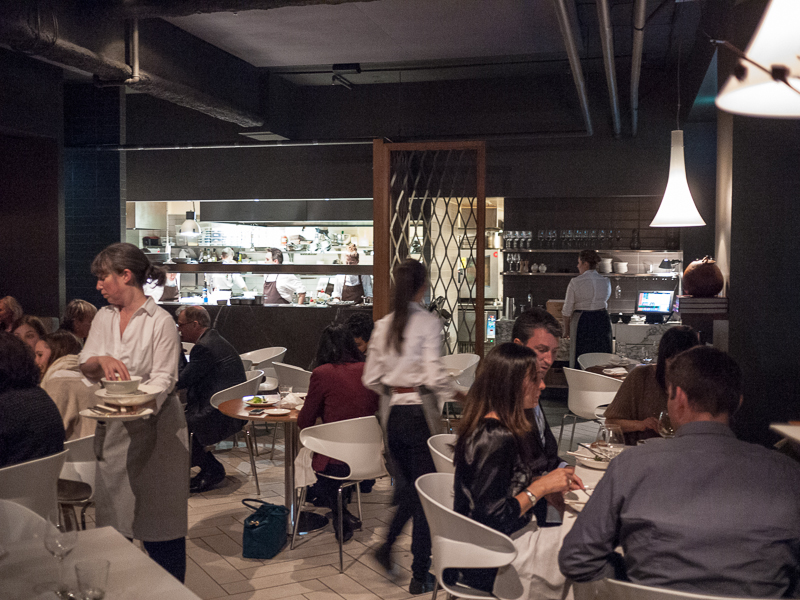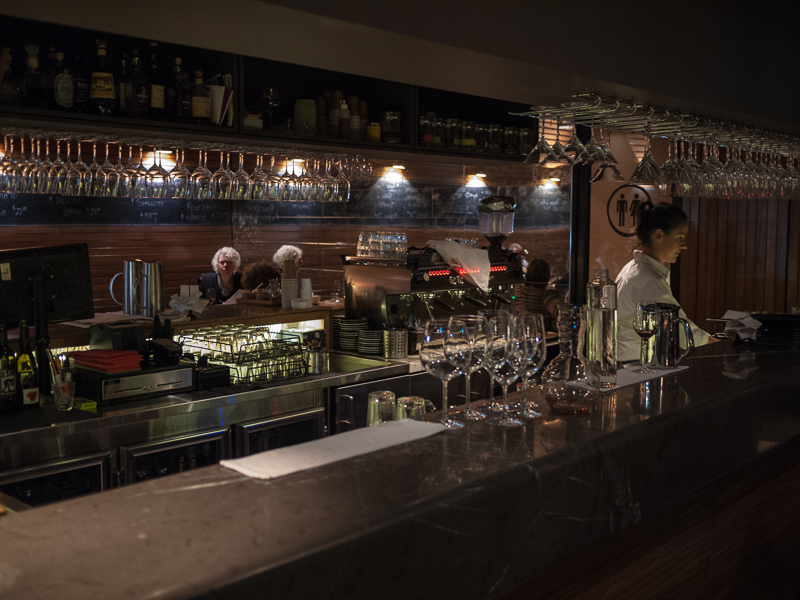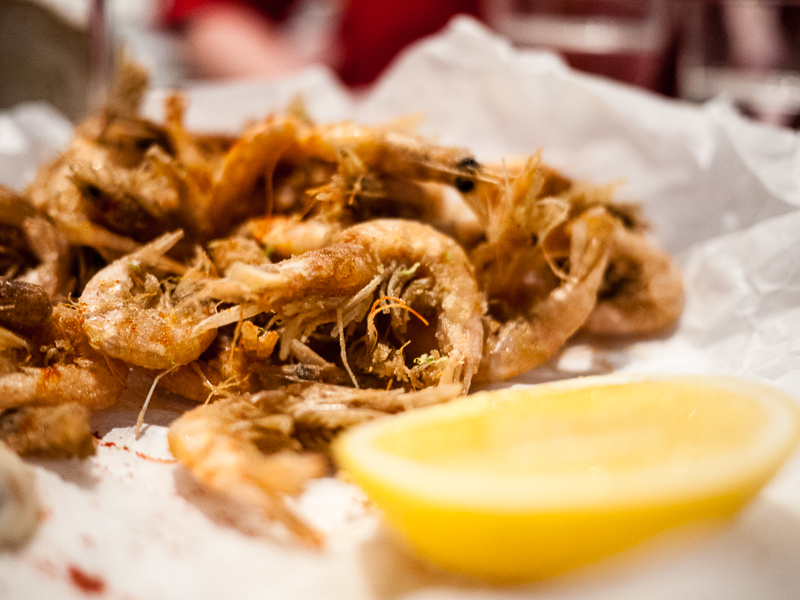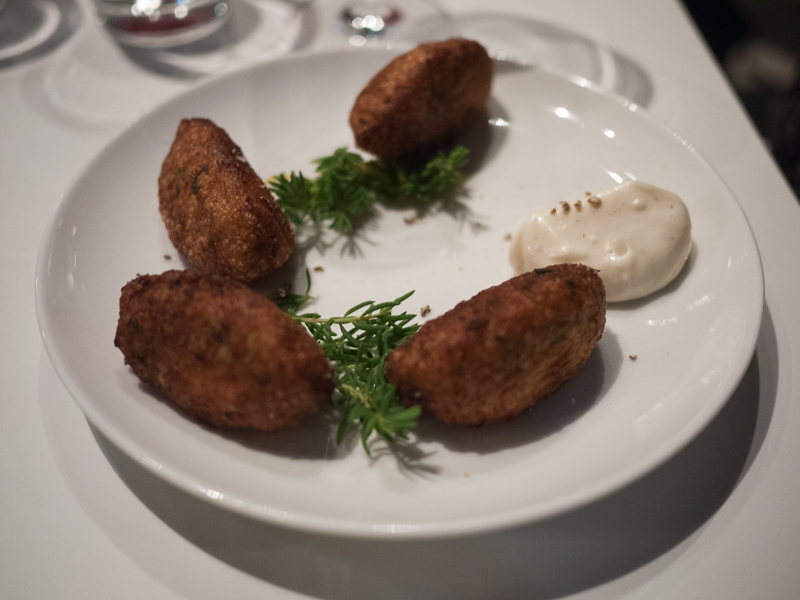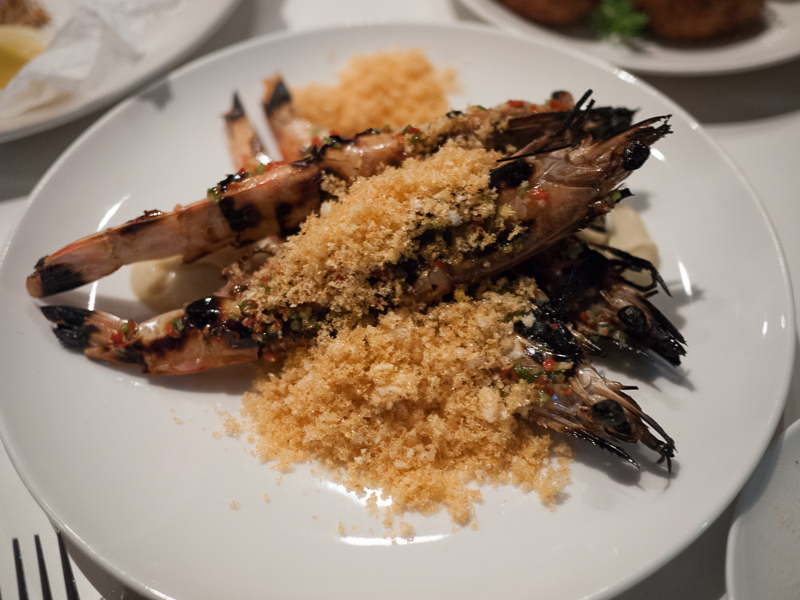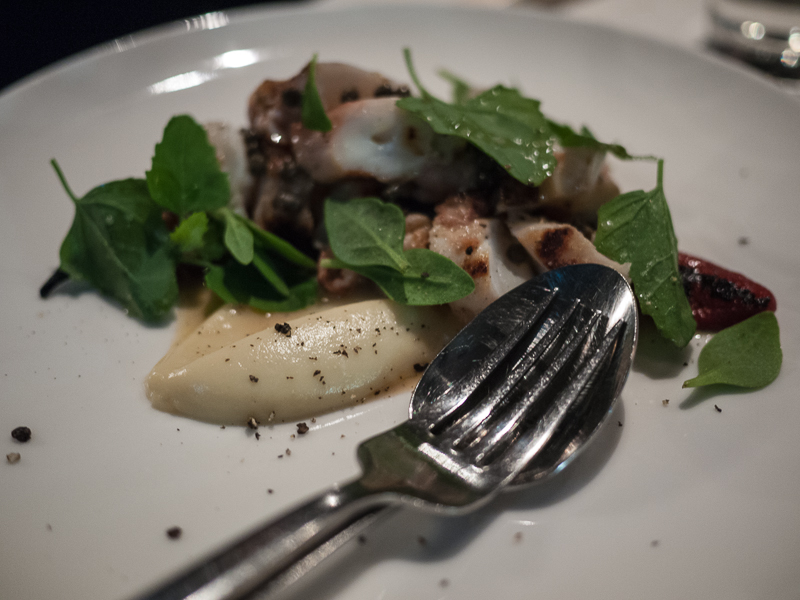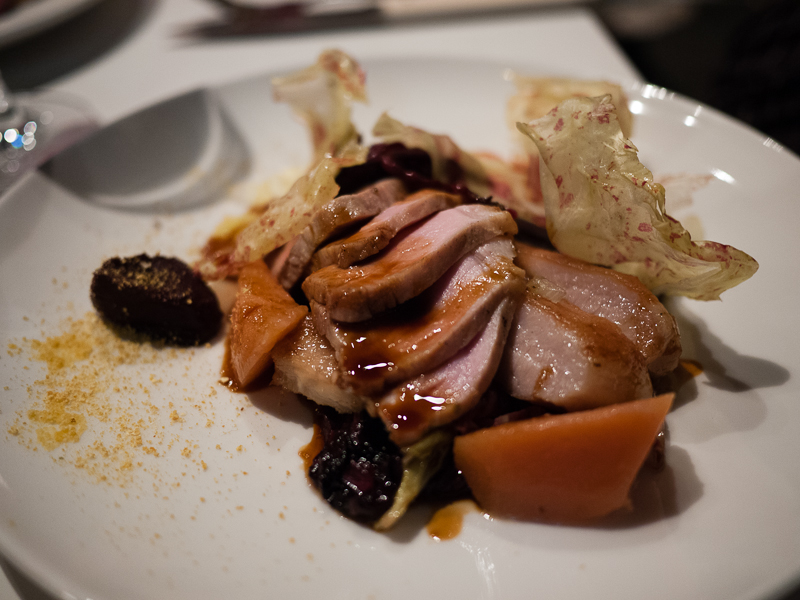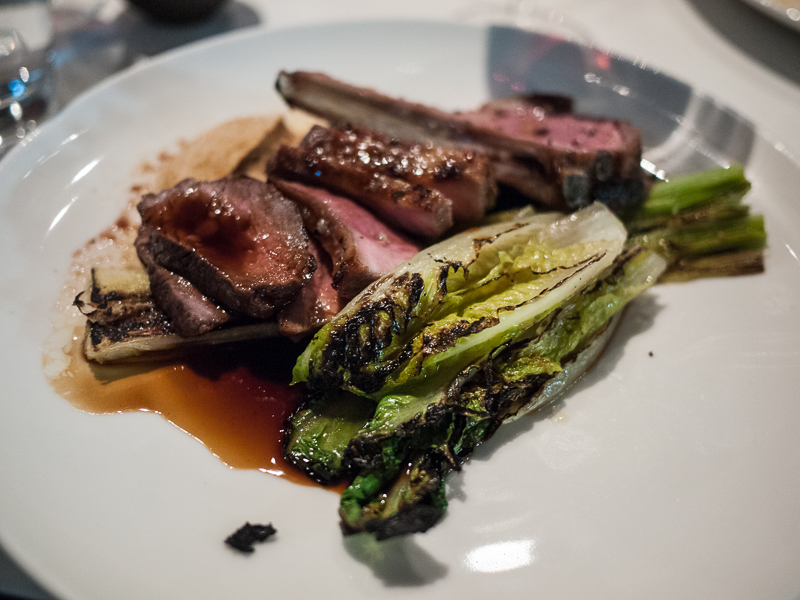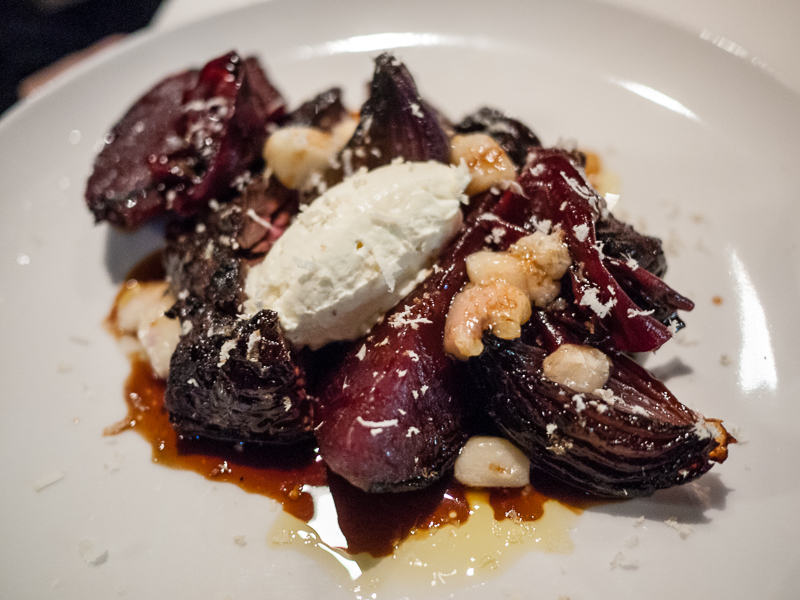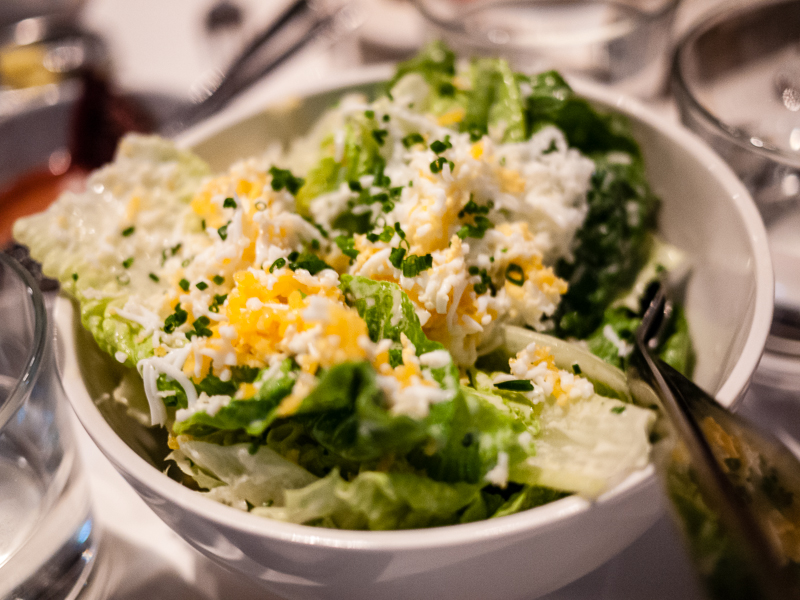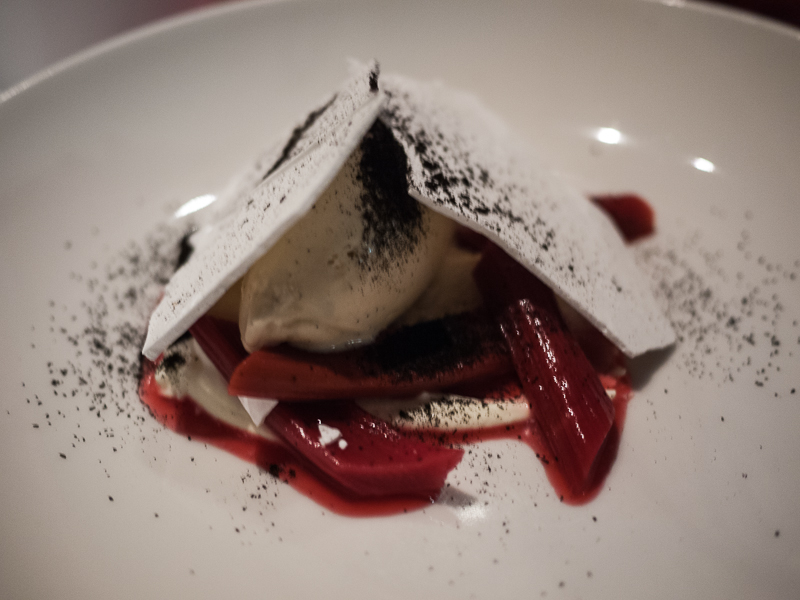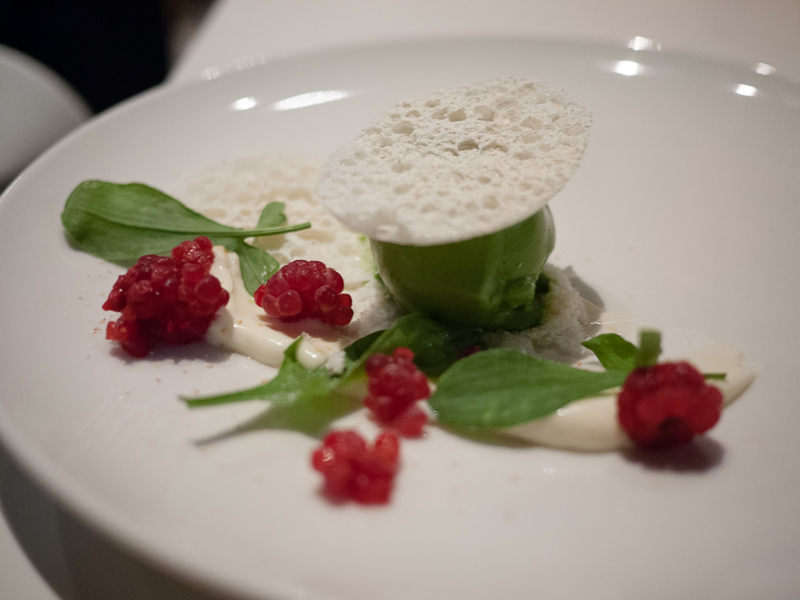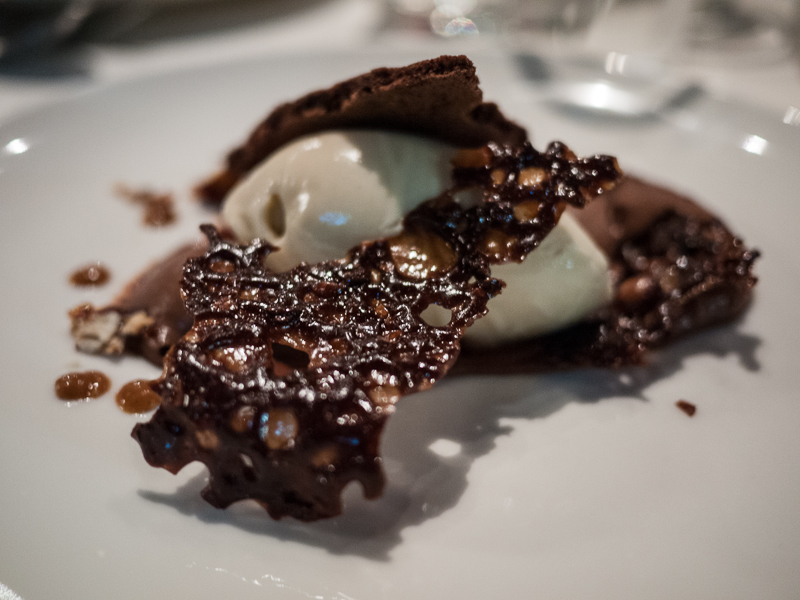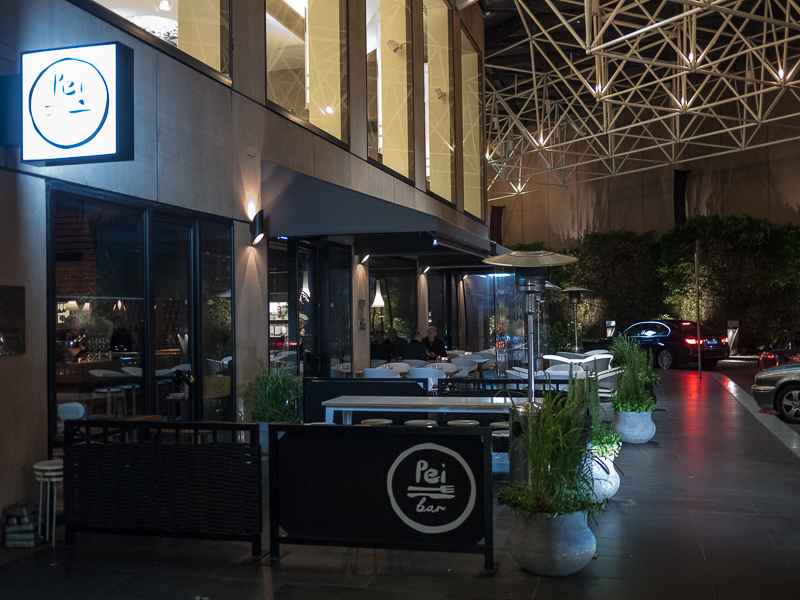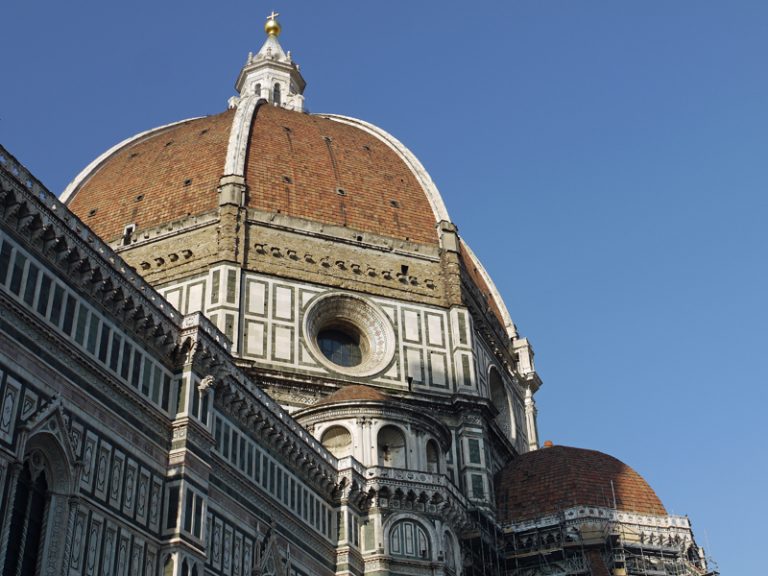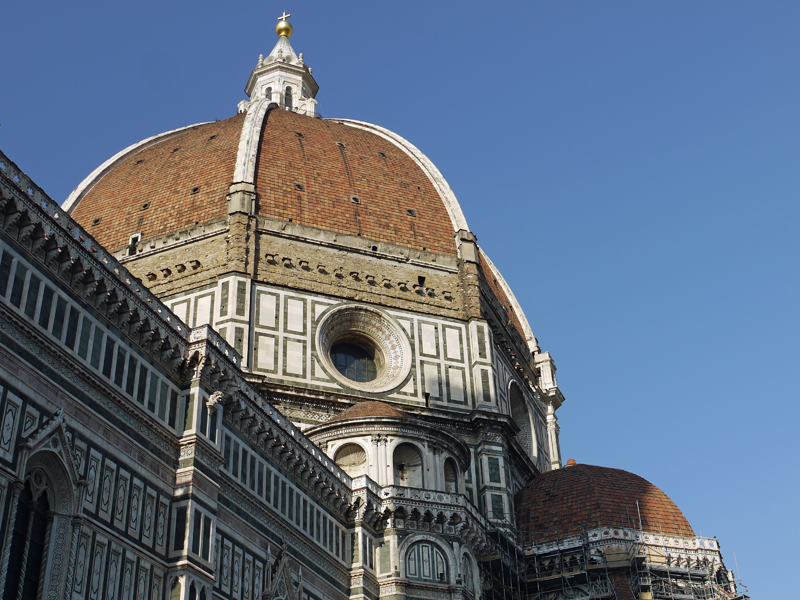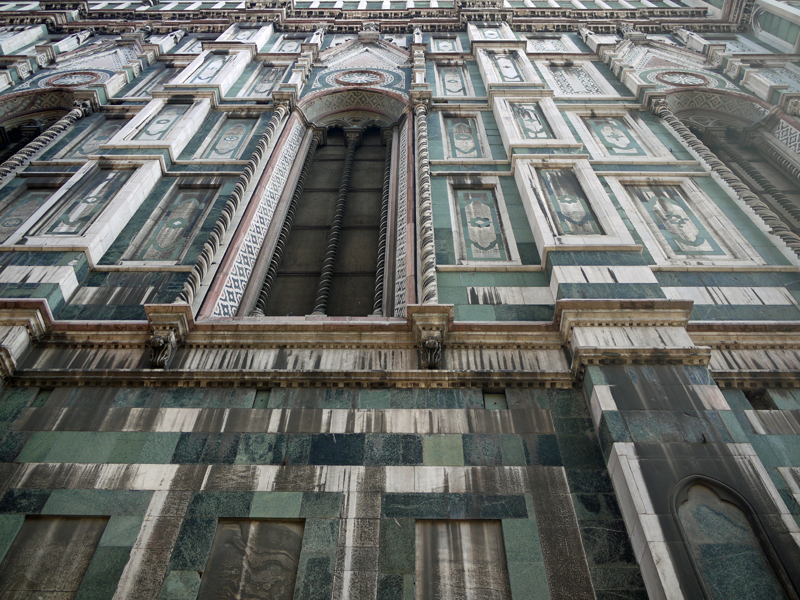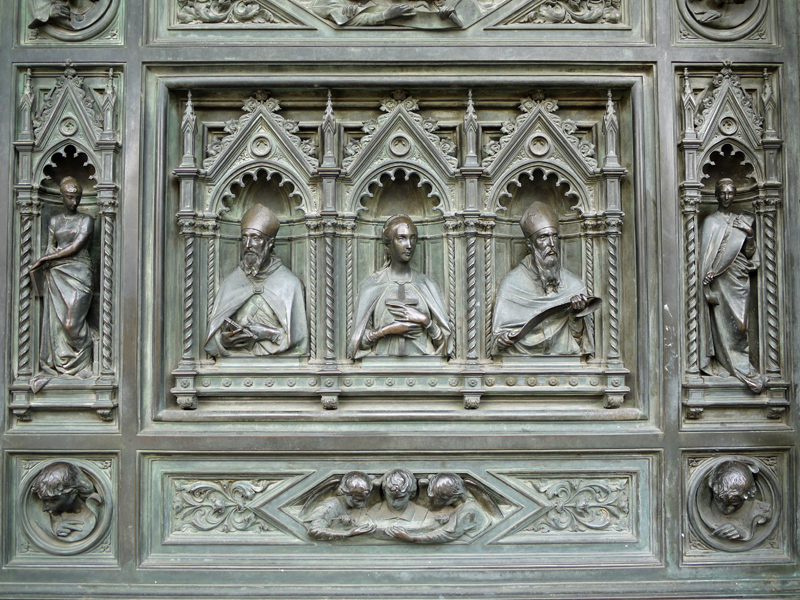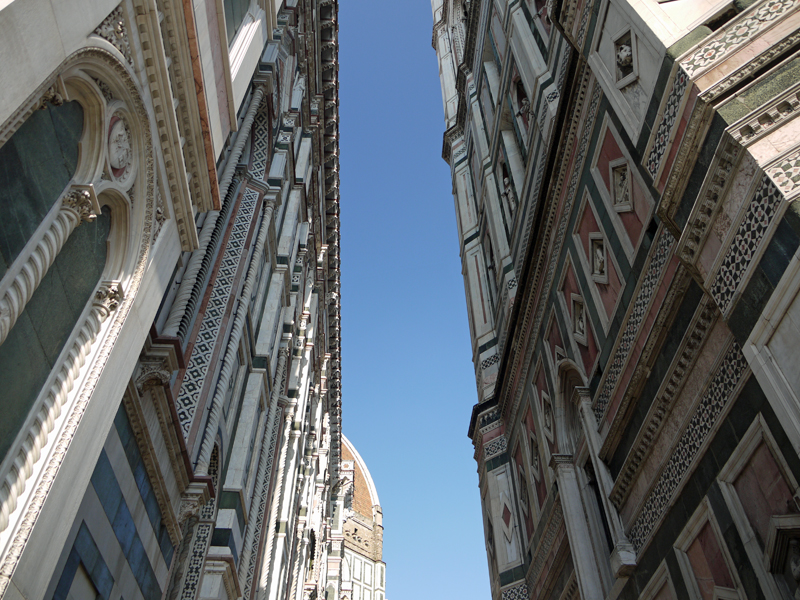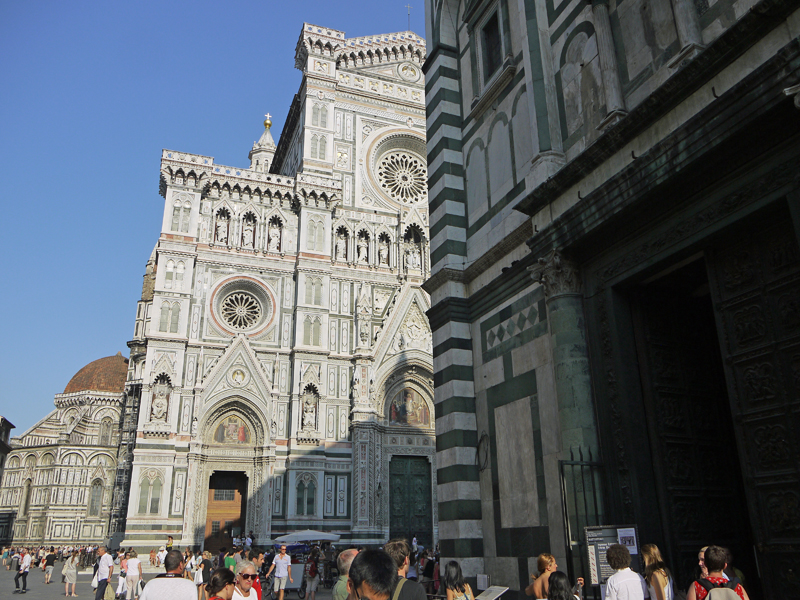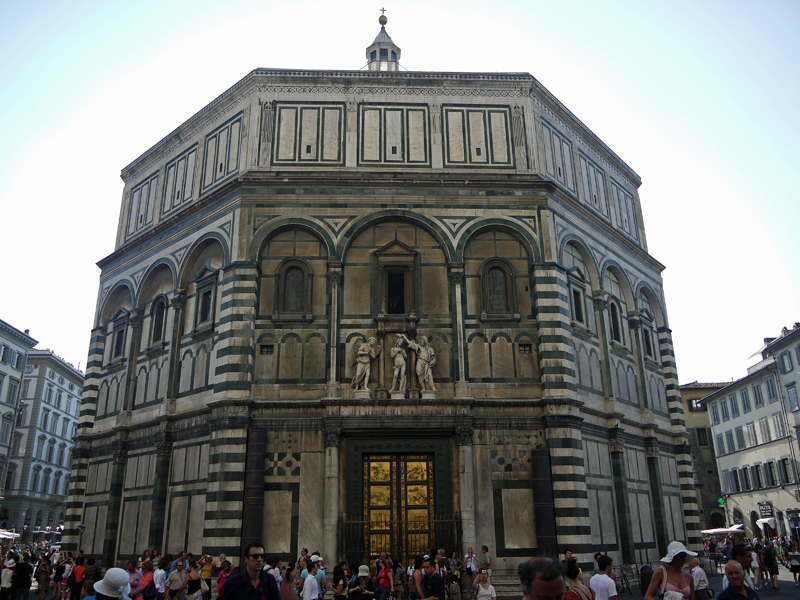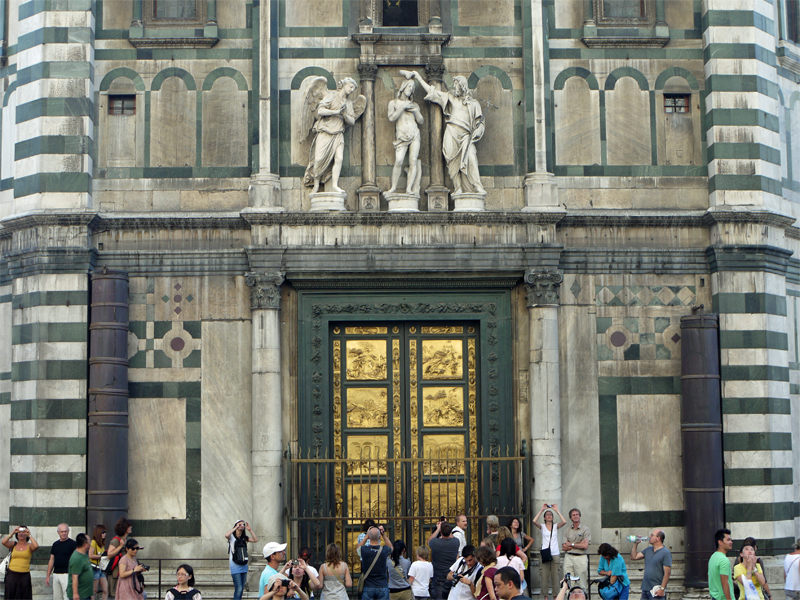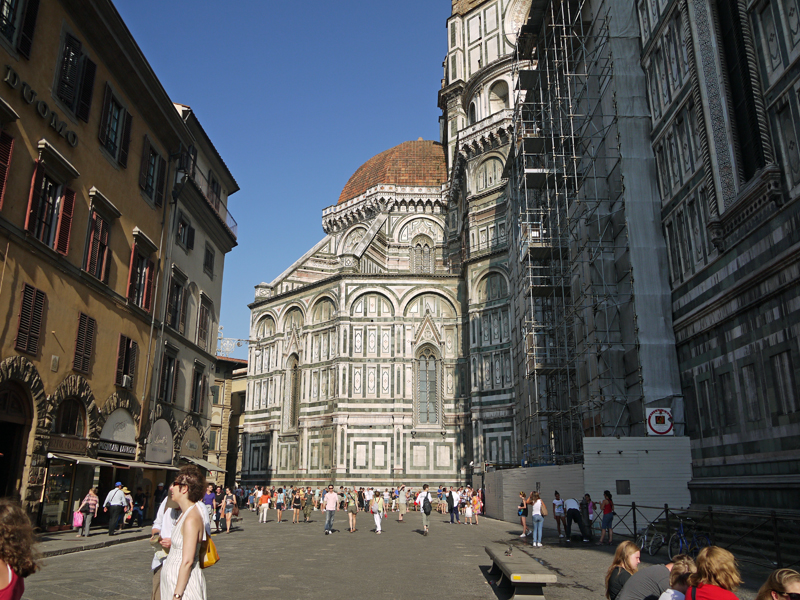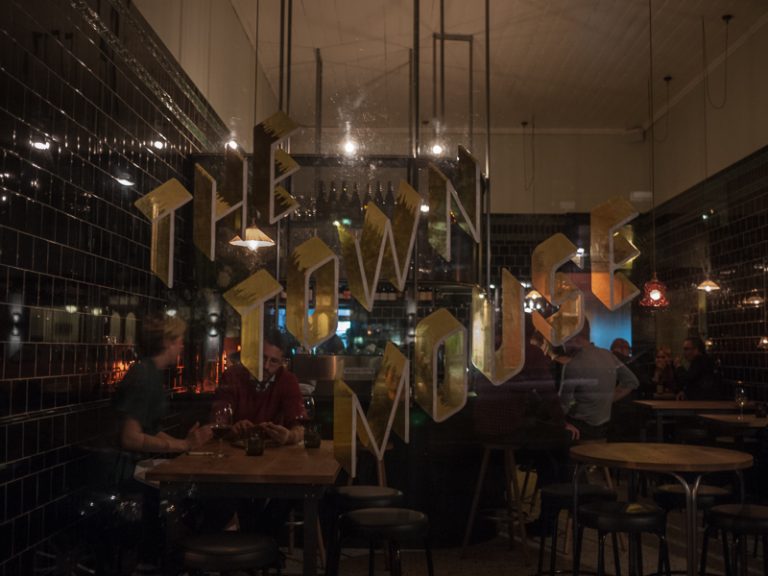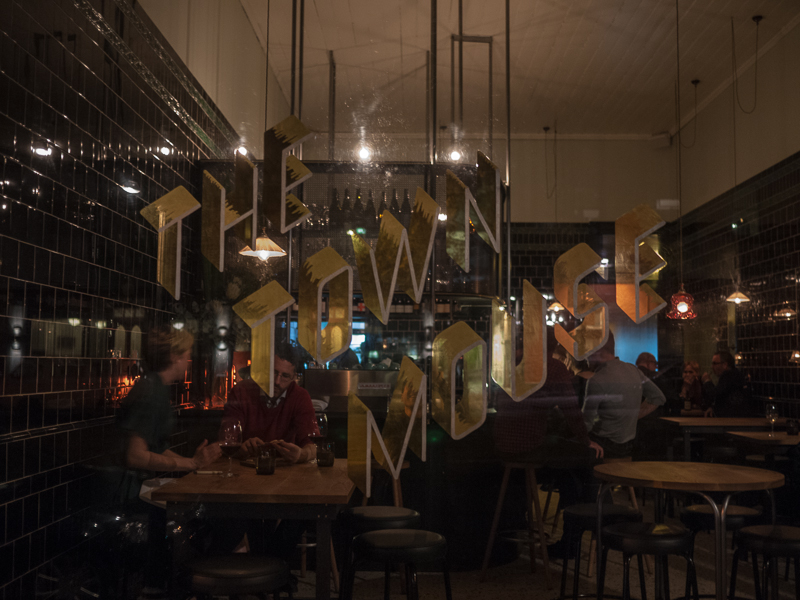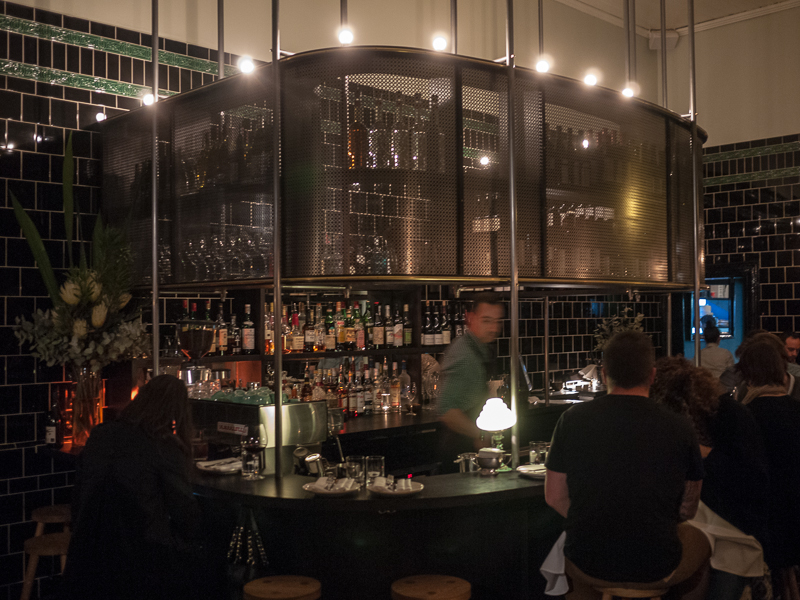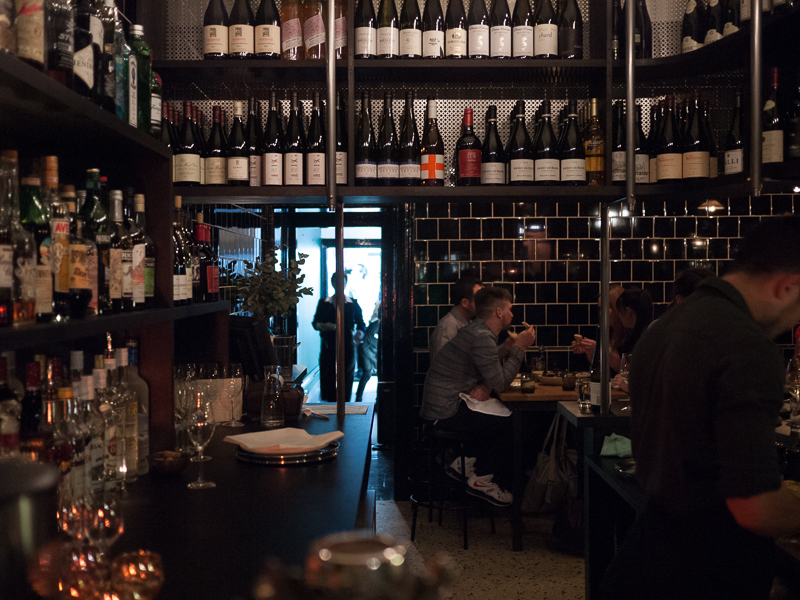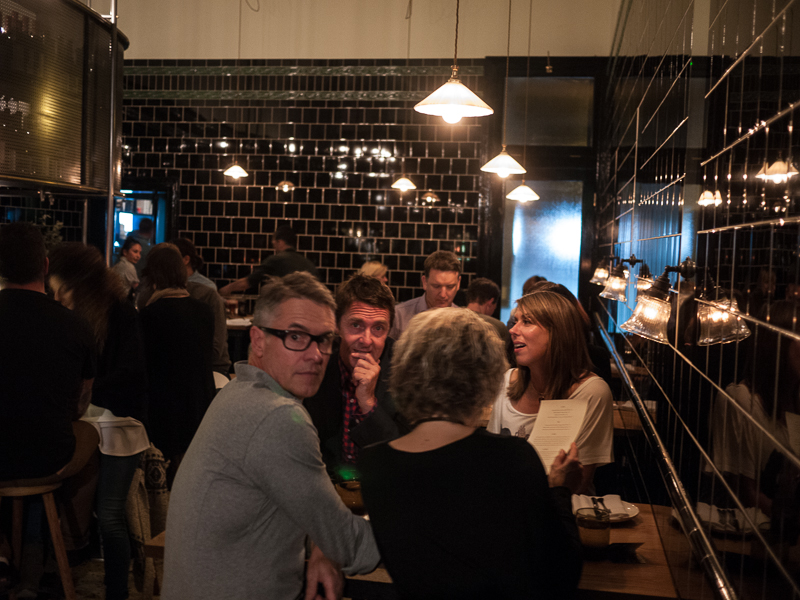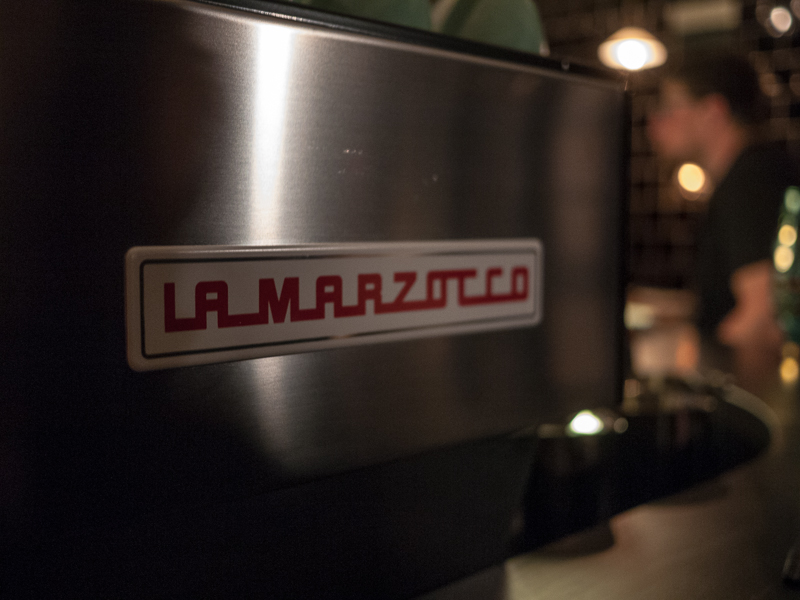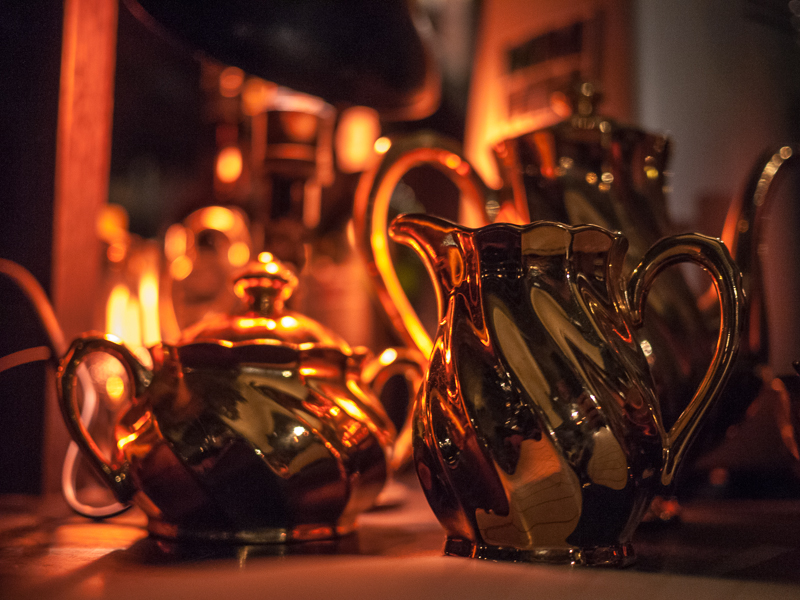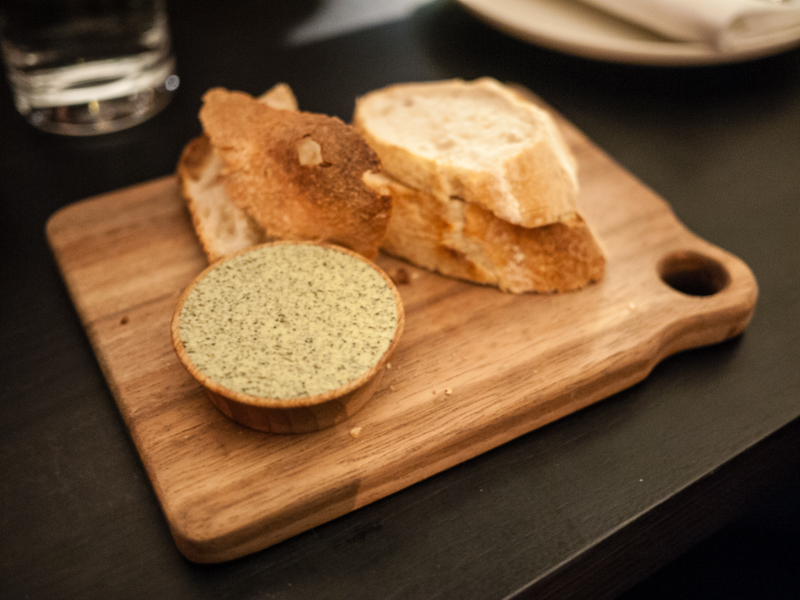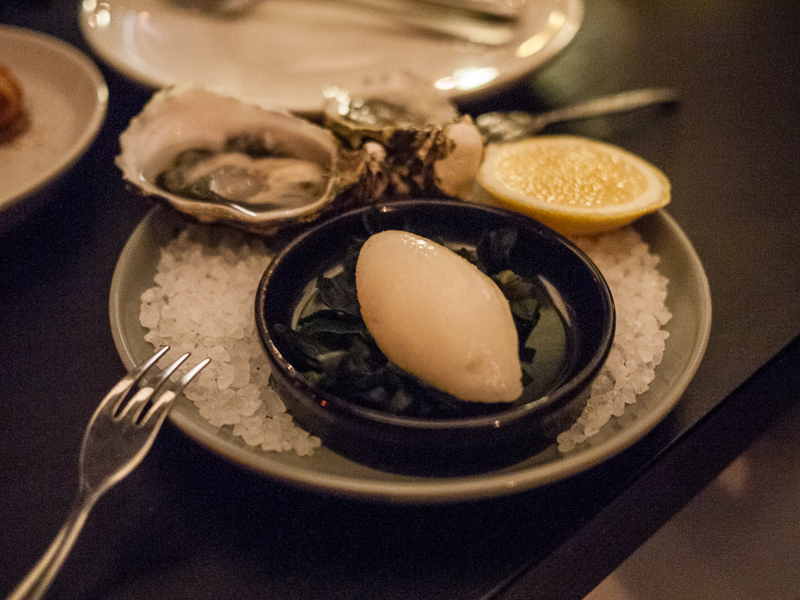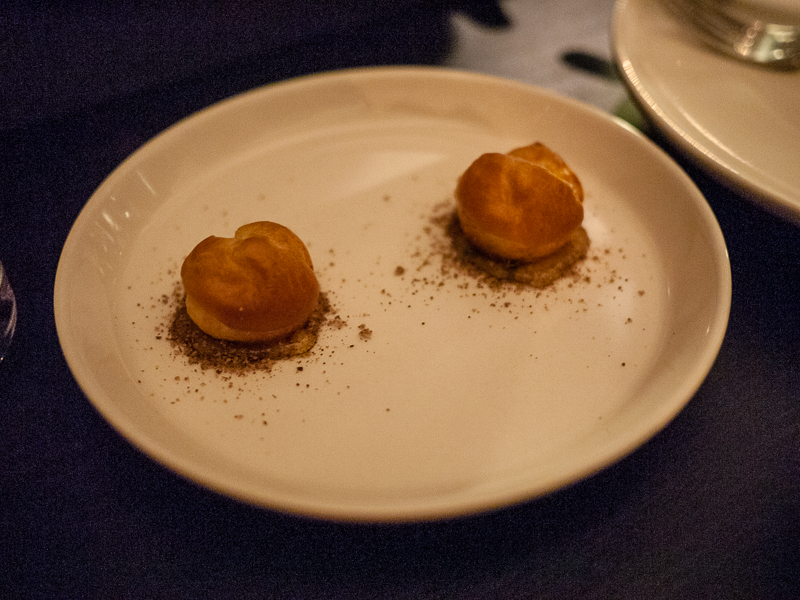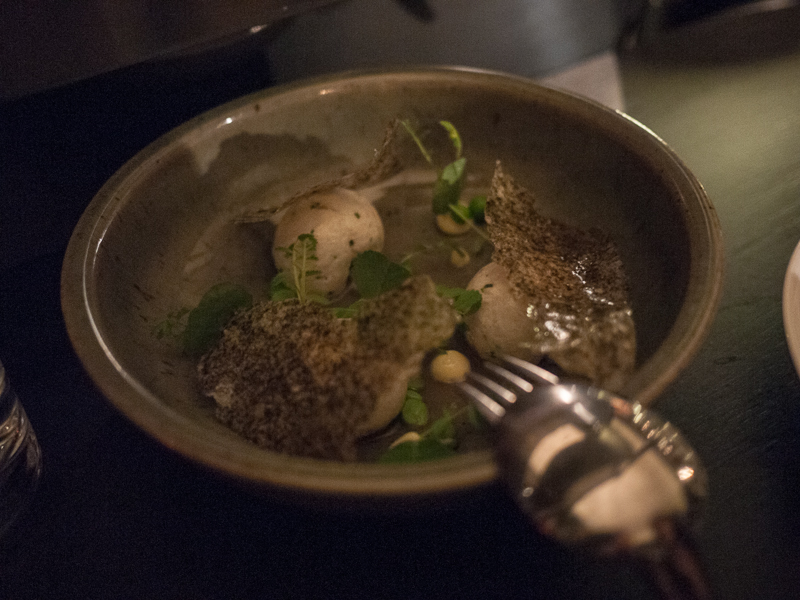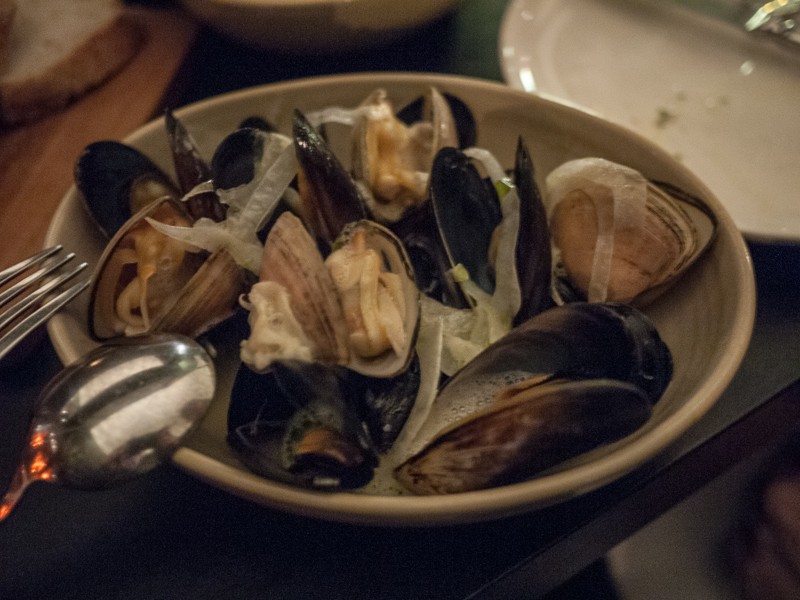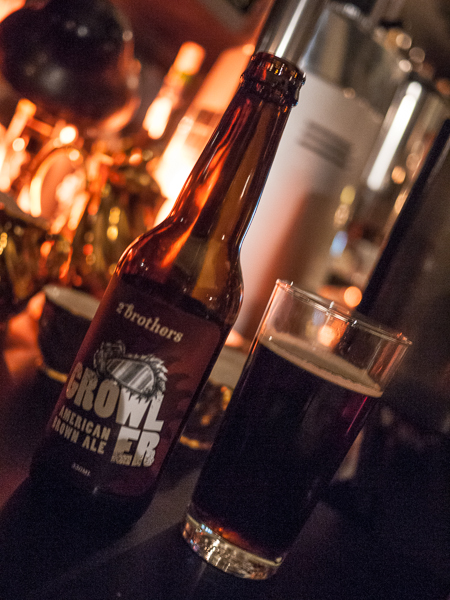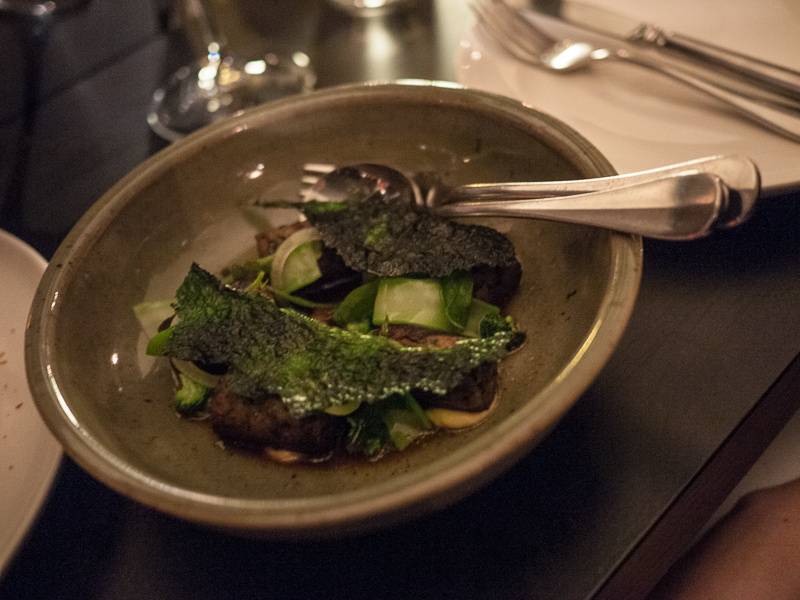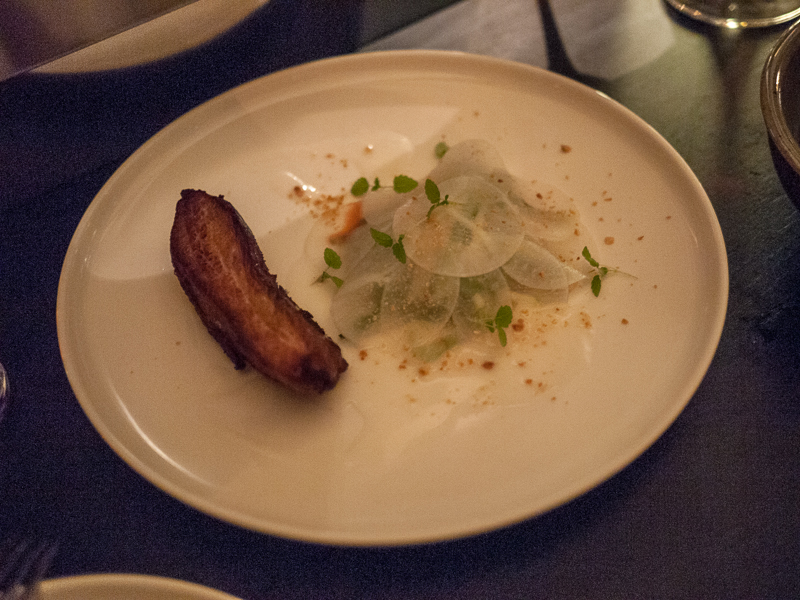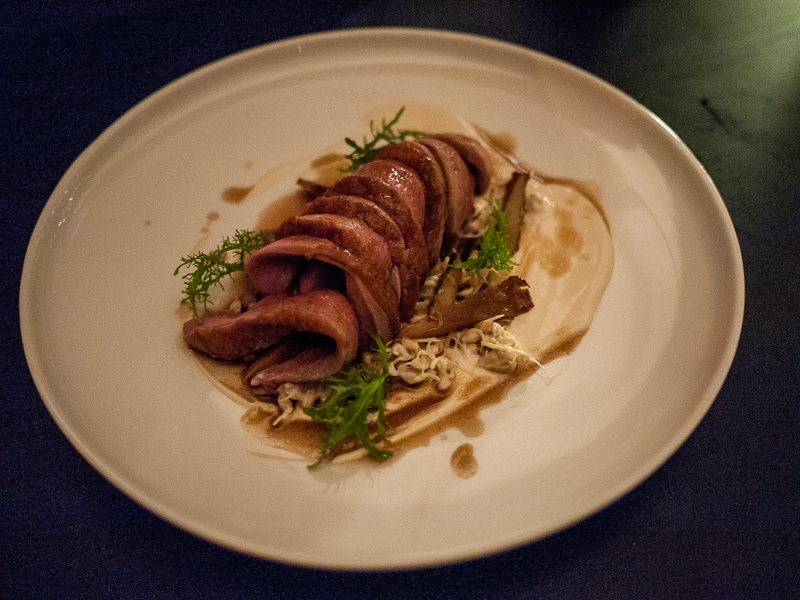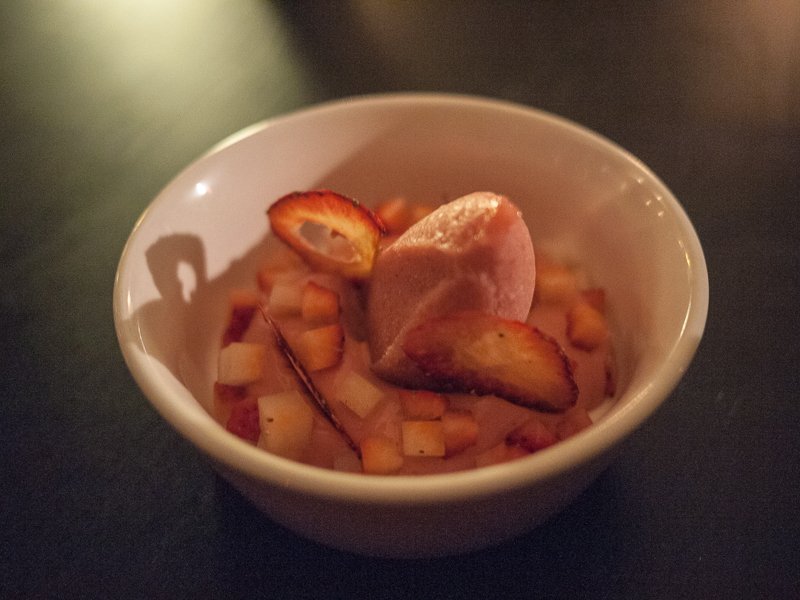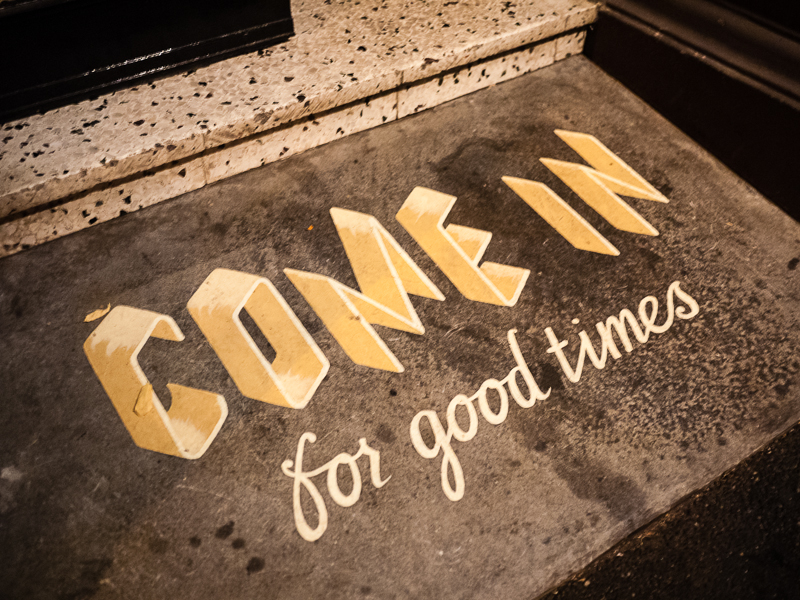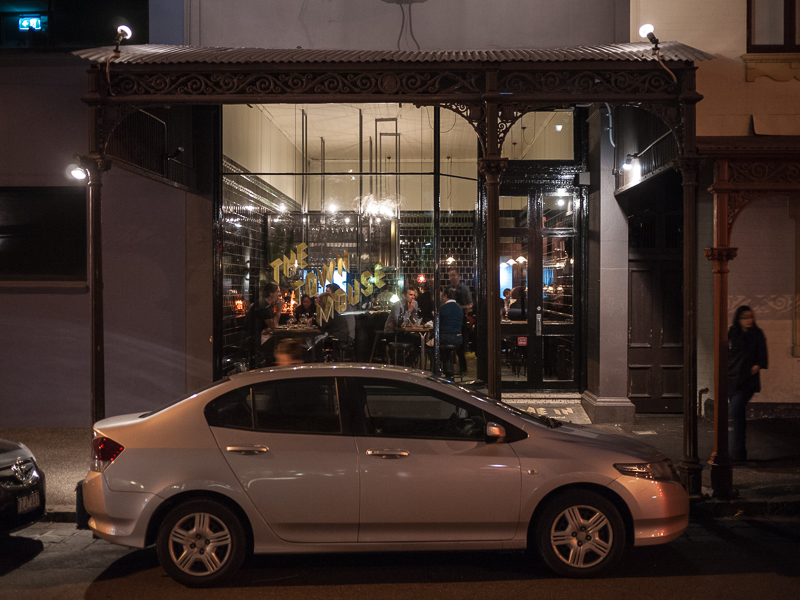Ho Chi Minh City (“HCMC”), Vietnam (or Saigon, as many still refer to it), offers an amazing array of food for visitors. As your read through my Ho Chi Minh City Food Guide, you’ll discover that there is a lot more to Vietnamese food than just Pho and Banh Mi, and discover the complexity of flavours that can come from the use of fresh, simple ingredients.
Everywhere you look, no matter what the time of day, there are people eating and preparing food. On the streets, down alleyways, and in every other “hole in the wall”, something food related is occurring.
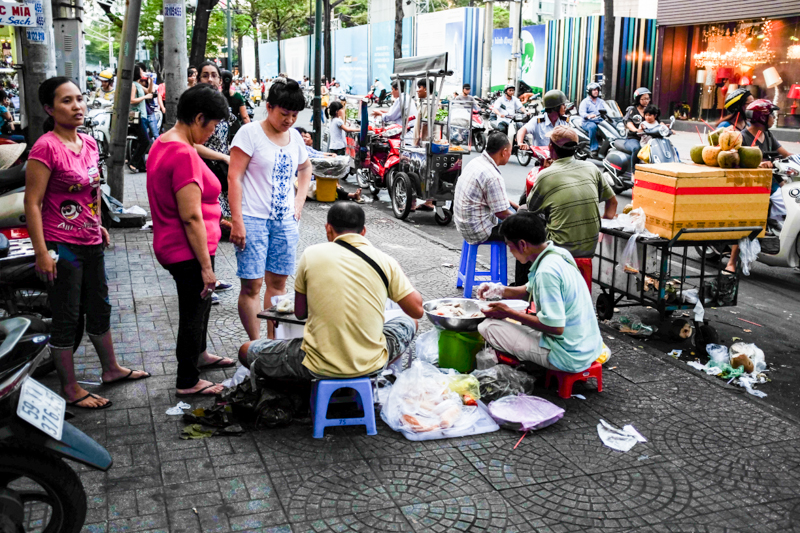
Walking through the streets of HCMC, you’ll smell all sorts of wondrous things (and, to be fair, some not so wondrous things) and it’s my hope that by reading through this food guide, you’ll be inspired to seek out those great smells and experience some of the real HCMC’s food scene.
Many people are afraid to try street food when travelling overseas. “How do I know it’s safe?”, “What if I get sick?”, “Is it hygienic?” are a few of the most common concerns that I hear when I discuss street food with people. I certainly understand why people unaccustomed to street food have these concerns, as the visual image presented to them is very different from what they perceive as being suitable dining conditions. Additionally, everyone knows someone who has had a bad experience.
Two tips that have kept me in good stead throughout my travels that I’d like to share with you are these:
- Eat where the locals are eating.
- Look for food that you can see being cooked.
Regarding the first tip, the logic is simple. Generally speaking, food establishments stay in business not because of the tourist trade, but because of the locals that eat there day in and day out. If you come across a place that is busy and full of locals, chances are it’s good. If it was making people sick, it would be neither busy nor full of locals.
In relation to the second tip, most of the street carts and hole in the wall restaurants in Vietnam have the raw ingredients and cooking stations in clear view. If something is being cooked fresh in front of your eyes, you can see for yourself exactly what’s going on. Contrast this to a restaurant with a closed kitchen that you can’t see.
Due to the sheer volume of street food in HCMC, I won’t try to provide you with a fixed guide of establishments, but rather a guide to some of the dishes you’ll find, with a few establishments listed where possible. HCMC is a city that rewards the adventurous eater, and as long as you follow my 2 tips above, you should feel comfortable trying some new things.
Food is being prepared or eaten constantly in Vietnam. These boys were on a side street in an area that was full of mechanics and hardware stores cooking up a soup of some sort.
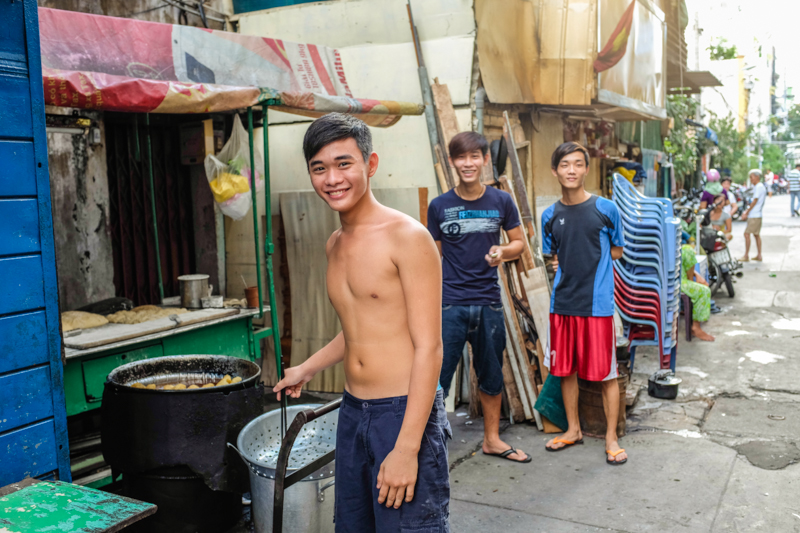
Rice
Not far from where the boys were cooking, my wife and I saw this man working his magic with the wok. The smell coming from the wok was beautiful and we knew that the only option we had was to try whatever it was that he was cooking up.
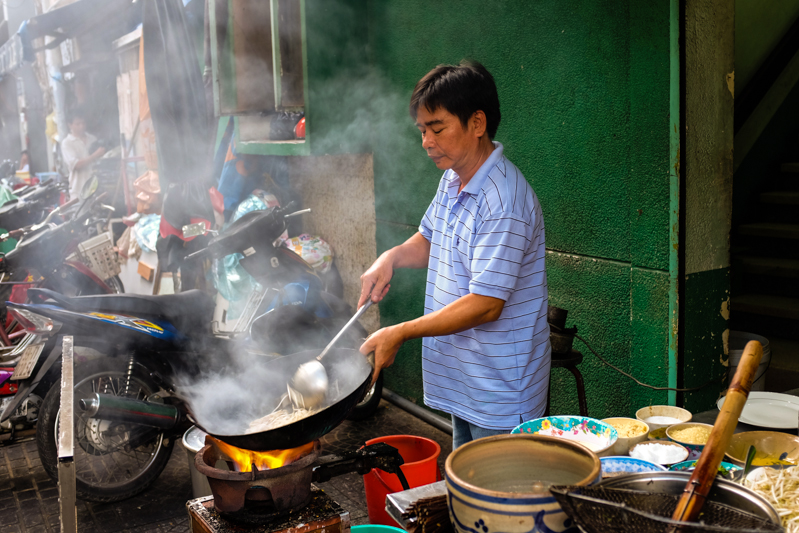
One of the things that I love about Vietnamese food is that there’s no set way to eat many of the dishes. What you will find is that you’ll get a main dish, and then a variety of sauces and condiments to add as you please.
Something that will come as a relief to those of you that don’t like spicy food is that most Vietnamese dishes are mild to begin with. It’s up to you to either keep it mild or make it as spicy as you’d like. The yellow, red and orange chillies below are one of the more common condiments that you’ll find in HCMC.
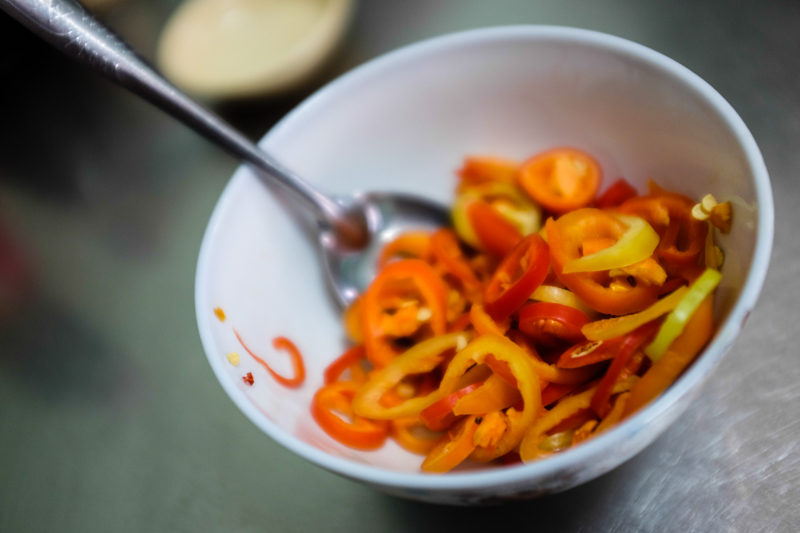
As is often the case with some of the best street food establishments in Vietnam, the menu is not in English. A mixture of pointing at pictures, or something that looks good on another table is the way to go. In this case, there was one dish that clearly stood out on the menu as being the speciality so that is what we ordered. Broken rice with greens, pork and seafood was what came out and it was delicious.
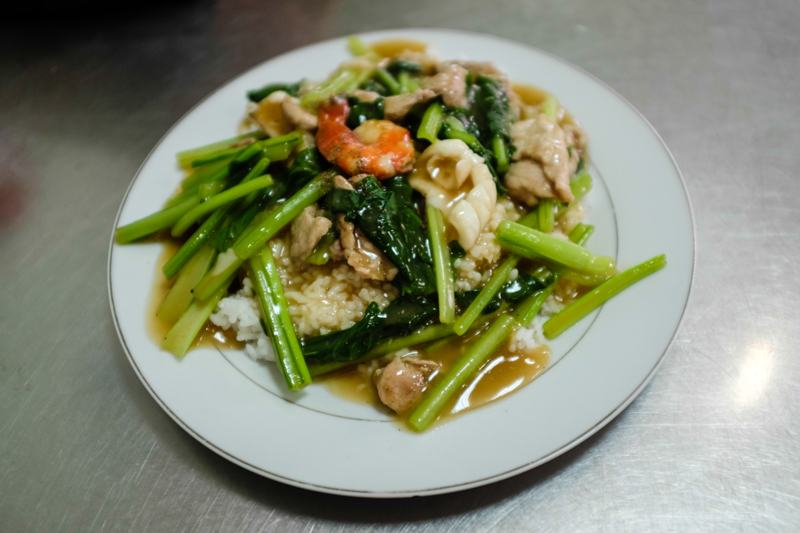
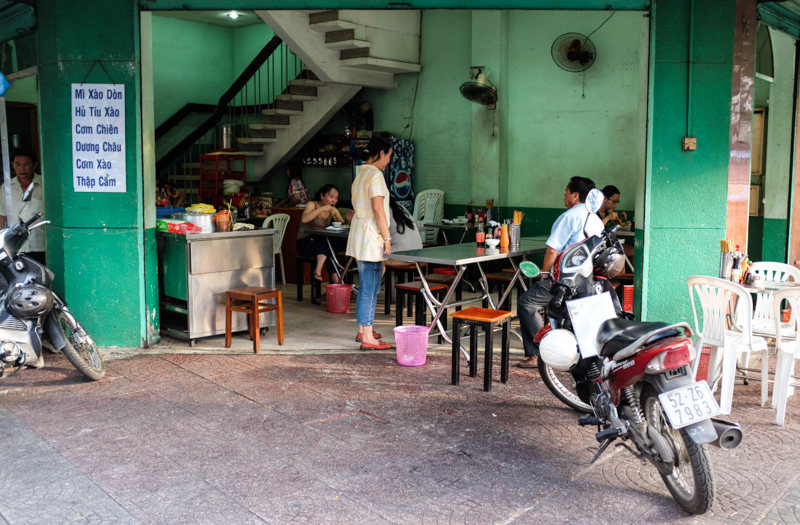
Com Tam Moc
Com Tam is a simple broken rice dish that is very popular in Vietnam. Com Tam Moc is a chain, and their broken rice is delicious. The menu is in English.
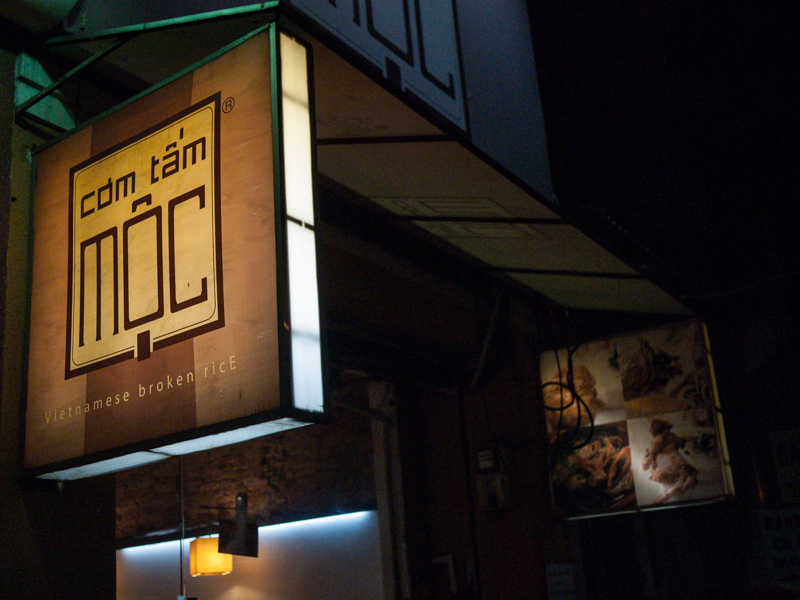
I ordered the Com Tam Bi Cha Thit Nuong Trung Opla, which is broken rice with 3 types of pork and a fried egg. It was very tasty, with my favourite type of pork being the one in the foreground – a mixture of grilled skin and meat.
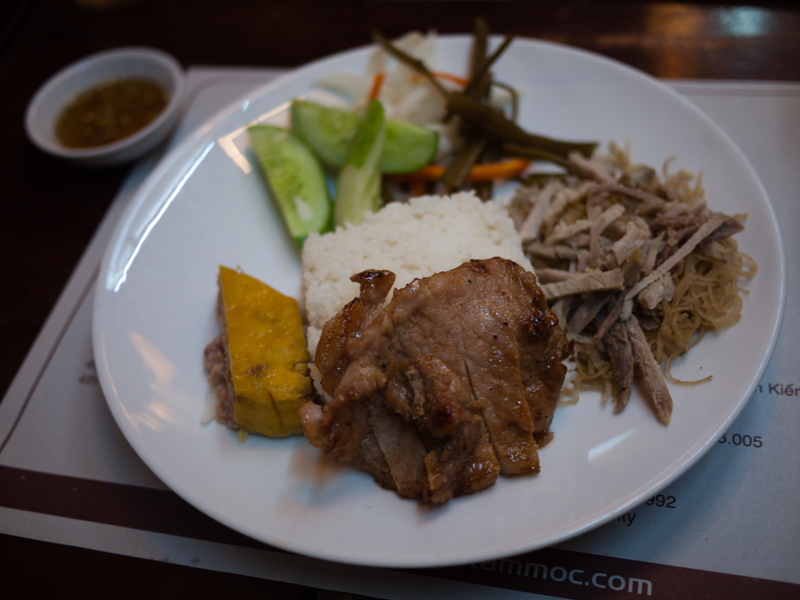
Coffee
Trung Nguyen
Trung Nguyen is the largest coffee chain in Vietnam, with over 1,000 cafes in the country. When in HCMC, you can’t go too long without stumbling across a branch. Despite being a chain, their coffee is excellent, with a variety of beans produced by sustainable methods, with full descriptions and differing flavour profiles available.
The cafes are very modern and nicely fit out, and free WiFi is available (I was surprised at the extent to which free WiFi is available in cafes in HCMC). Menus are in English and most of the staff speak basic English.
There are a variety of options available, but I always went for the traditional Vietnamese coffee.
When your coffee arrives, it has just begun the process of filtering. The ground beans are in the bottom compartment of the silver filter, with filter holes above, for the hot water to drip through, and filter holes below, for the coffee to drip into the cup.
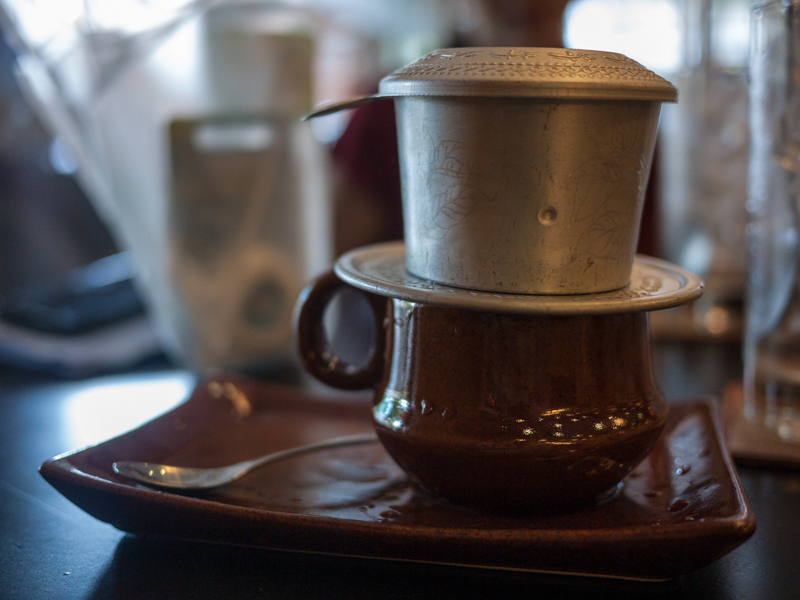
A few minutes later, the filtration process is complete. If you asked for your coffee with condensed milk, it is put into the coffee cup at the start.
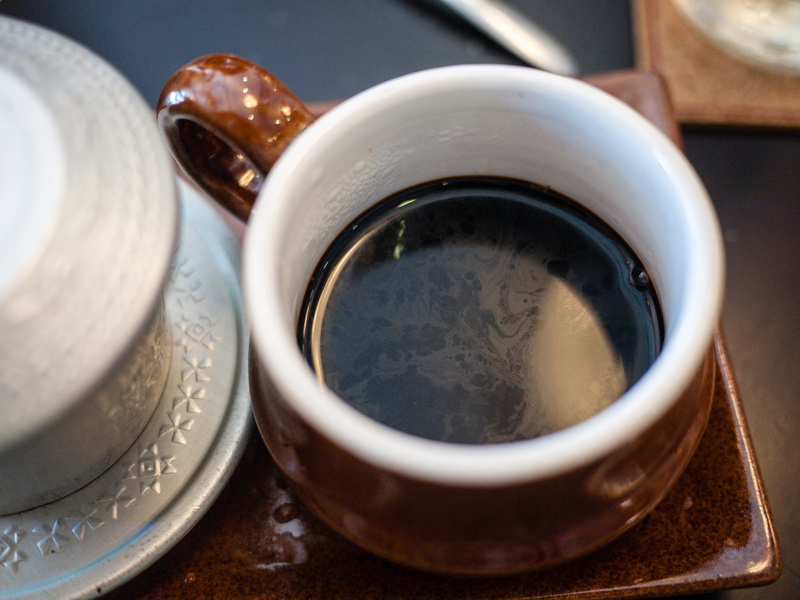
Next, you pour the coffee into your cup of ice, then stir and enjoy.
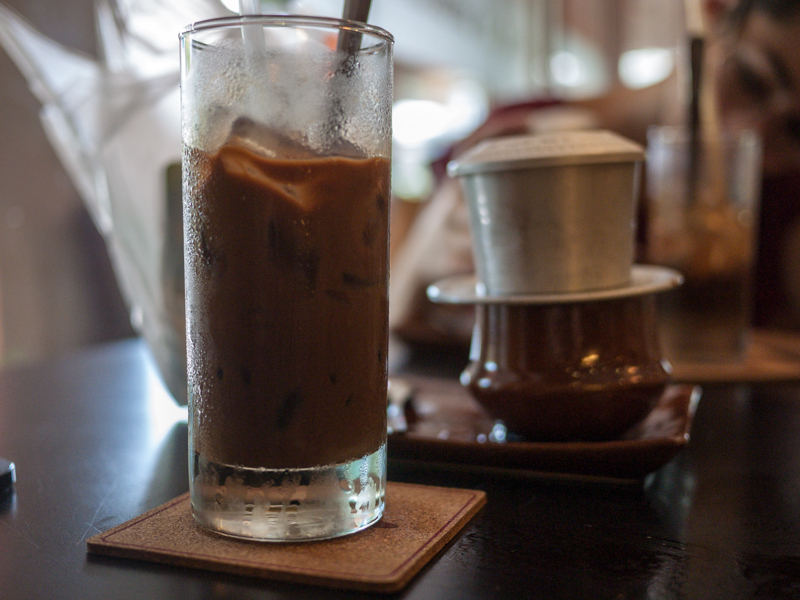
Traditional Vietnamese coffee is a very tasty, refreshing way of drinking coffee and I was hooked on it during my time in Vietnam. You can choose whether you want condensed milk or not, and whether you want it hot or cold.
There are a lot of international chains in HCMC these days. Starbucks opened their first store in Vietnam at the start of 2013. This is not that store.
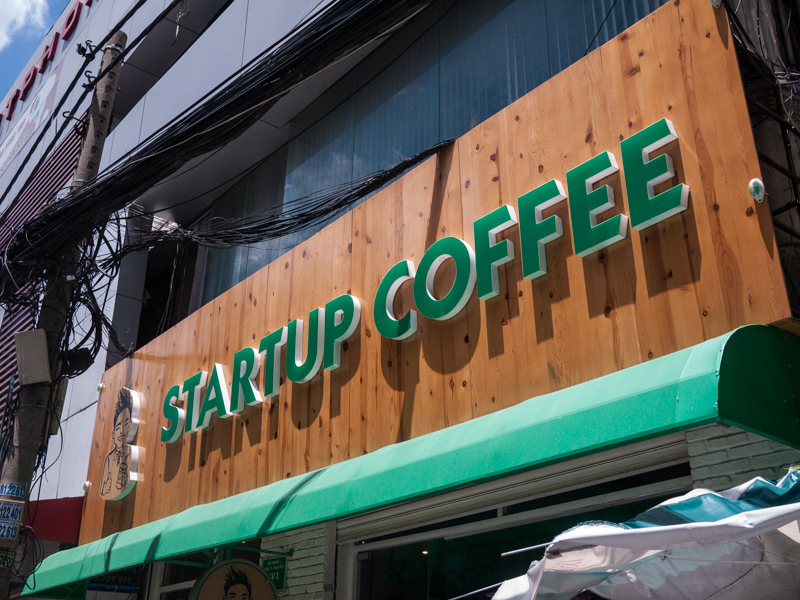
Highlands Coffee
Highlands Coffee is another popular chain that can be found throughout Vietnam. Menus are in English and most of the staff speak basic English.
The coffee here is acceptable, about the same level as a Starbucks. As well as the usual Vietnamese coffee and espresso options, there is quite a large selection of flavoured options available. I ordered a Vietnamese coffee with ice and condensed milk, and my wife ordered a green tea latte concoction. The flavoured green tea syrup is quite a popular option in drinks and desserts in Vietnam.

Albero Cafe
As well as the two major chains, there are a large number of independent modern cafes that can be found throughout HCMC. Albero Cafe was a nice one that I stumbled across. It had a chilled out nature theme, great coffee and free WiFi.
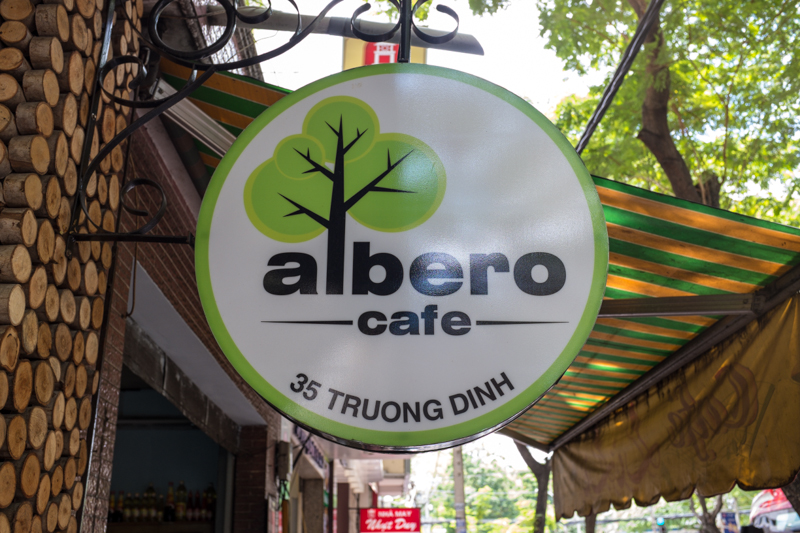
Instead of water, many of the cafes in HCMC serve free iced jasmine green tea (unsweetened) with their coffee.
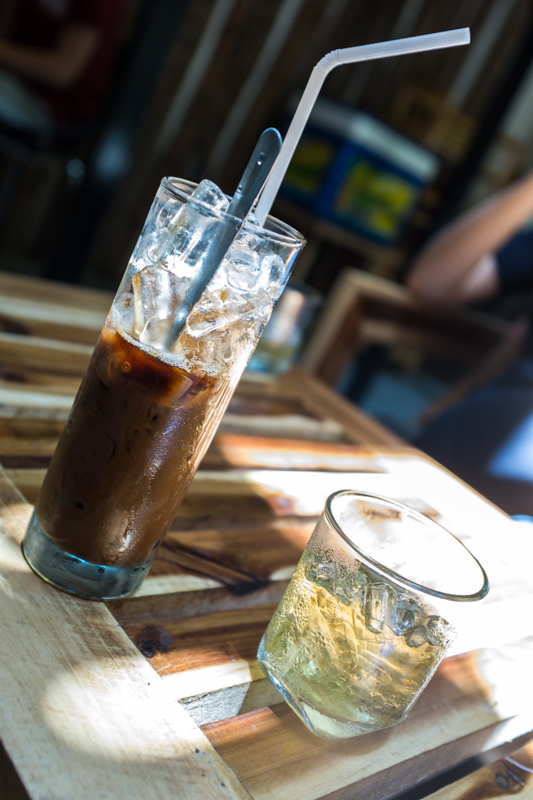
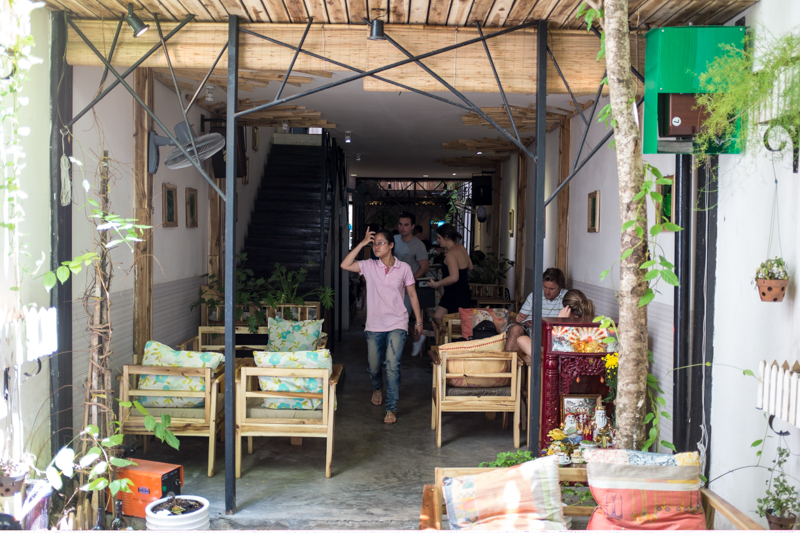
Albero Cafe can be found at 35 Truong Dinh, District 3.
The place below was not a Trung Nguyen cafe, rather it was a cafe that used Trung Nguyen beans. You’ll see the logo splashed around various cafes and coffee carts throughout the city.
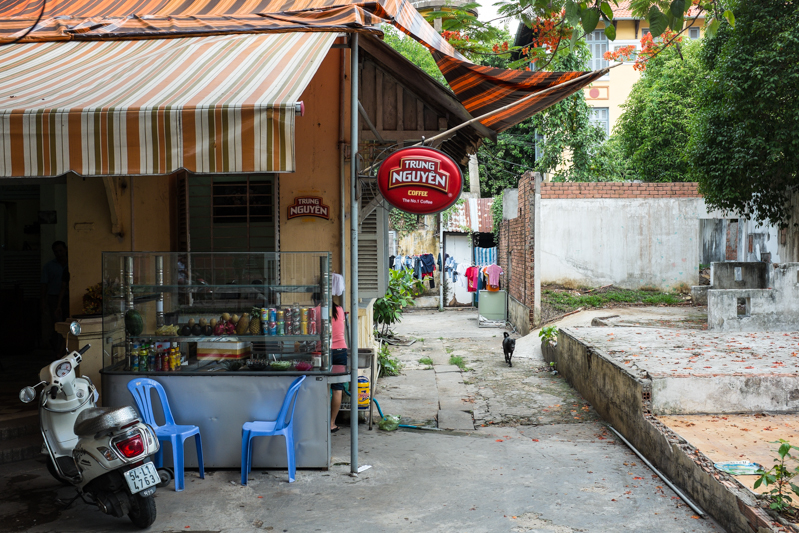
Walking down the street in District 3 on a rainy afternoon, my wife and I stumbled across this alleyway, which seemed quite busy so decided to check it out. Turns out it was coffee that was the only thing being sold so ordering was quite easy. Four English words that almost everyone selling coffee in Vietnam knows are “milk”, “sweet”, “hot” and “cold”. I’d say that 80% of the time we ordered coffee, we got exactly what we wanted.
You’ll find these sorts of spots throughout HCMC and the atmosphere is really great. As a bonus, they are a lot cheaper than an actual cafe if you’re in need of a caffeine fix.
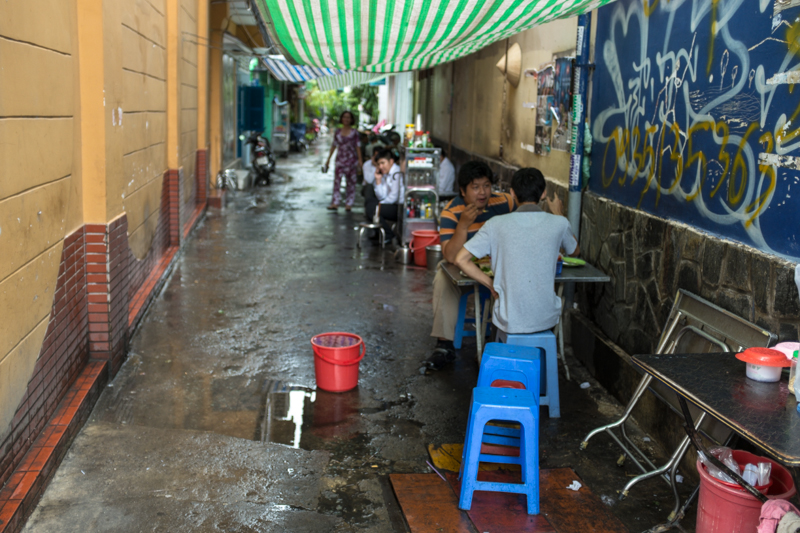
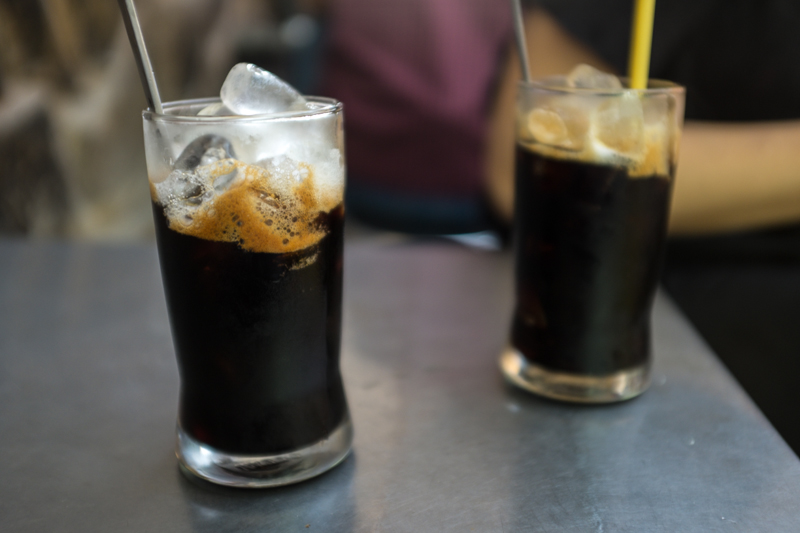
Seafood
Nha Hang Bien Duong.
Nha Hang Bien Duong is a seafood restaurant that my wife and I discovered while walking around the streets of HCMC, taking in the vibe during our first night. There are a lot of tables and seats on the sidewalk, and the place is almost completely full with locals. Not having dinner here was never going to be an option.
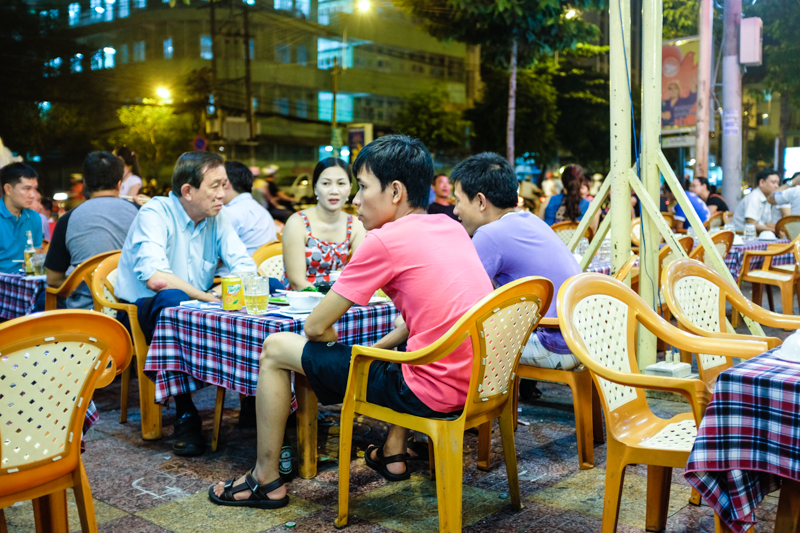
Bia Saigon is the local beer and is found throughout HCMC.

The menu is extensive and everything looks really good. One of the waiters spoke very good English and explained a few of the things on the menu for us. The hot pot looked like it was very popular so we went for that. There is a lot of fresh seafood in tanks inside and I got to go to a tank and pick the 2 crabs that I wanted.
Everything came out fresh and our waitress was very good as she showed us how to cook everything and eat it in the correct manner.
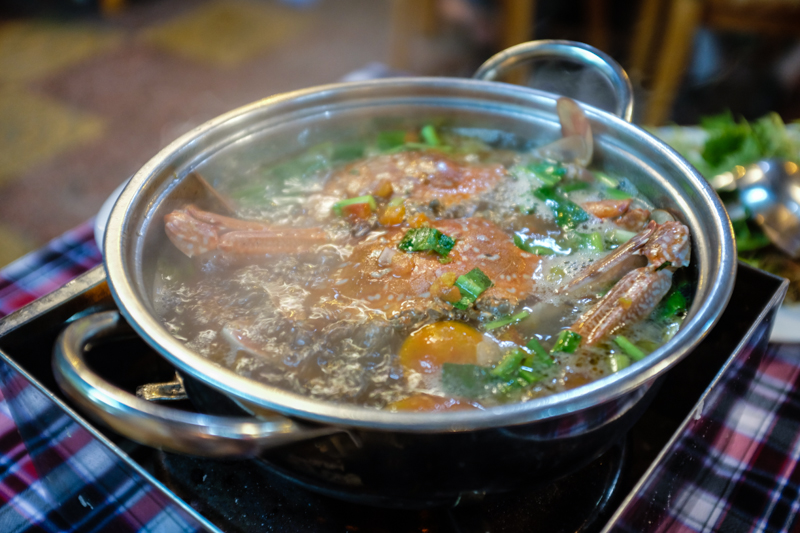
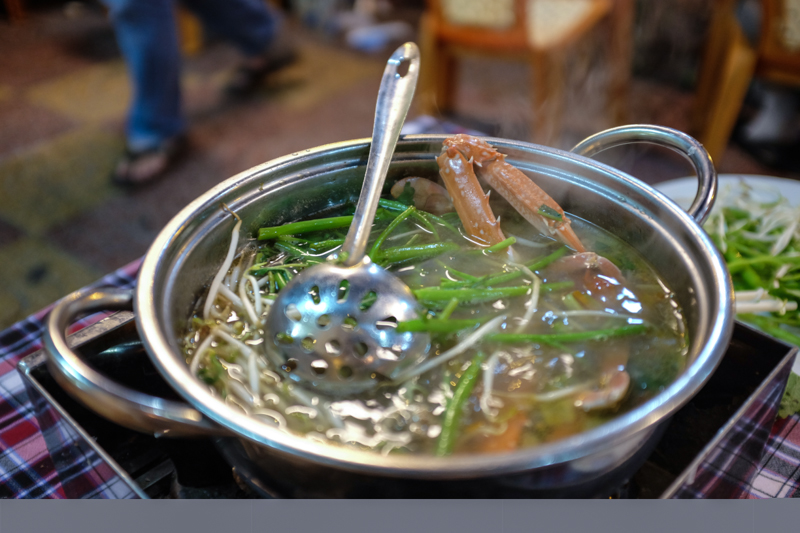
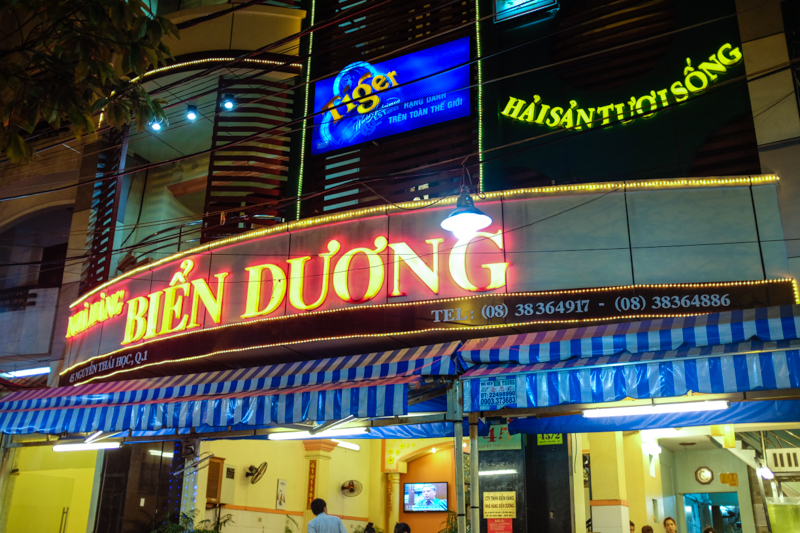
We liked the meal so much that we returned on the following night to try some other things. The first thing we ordered was a vegetable and mixed seafood hotpot with a dried rice cake that became soft once the liquid was poured over it. I lost some of my photos from this trip an unfortunately the photo of this dish was one of those.
The next thing we ordered were little sea snails that you see all over HCMC in restaurants and on street carts. They were served in a coconut butter and the safety pins were used to get the snails out of the shells. They were very tasty.
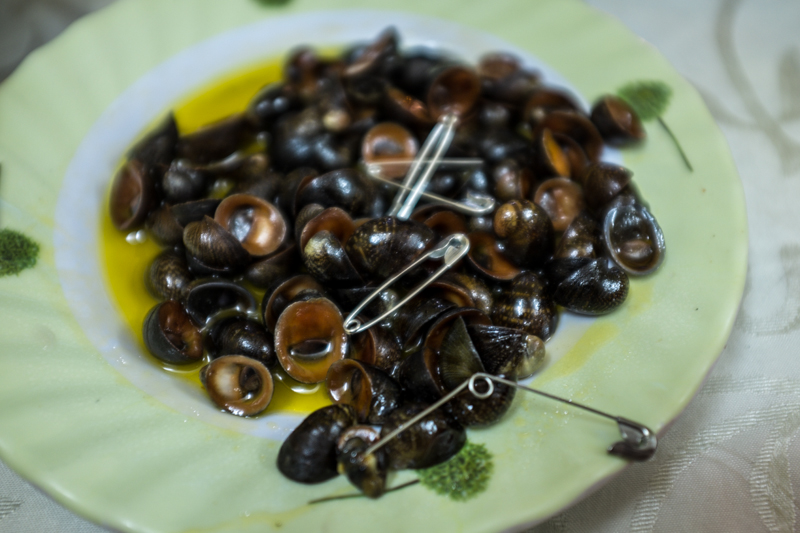
To finish with, we had grilled cuttlefish with salad.
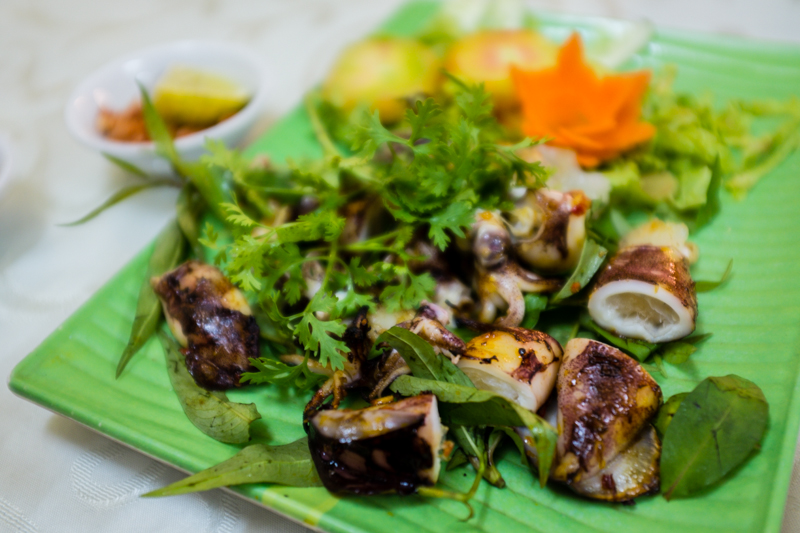
Looking at the menu, it looked like there were 3 Nha Hang Bien Duong restaurants in the HCMC. The one that my wife and I went to, which is very central, can be found at 45 Nguyen Thai Hoc, District 1.
Banh Mi
Banh mi is one of the foods that people commonly associate with Vietnam and is a delicious snack that shows how fusion food, when done right, can be brilliant. Banh mi is actually the Vietnamese word for all kinds of bread, which was introduced to the country by the French. The food that most people in the West refer to as banh mi is actually banh mi, followed by other words denoting the type of sandwich. In the case of the stall below the offering was banh mi (bread) with pa te (pate) and thit (meat).
The meat is usually some kind of steamed or roasted pork belly, grilled chicken, Vietnamese sausage, or other pork related meat. Usual condiments include pate, sliced cucumber, coriander, pickled carrots and shredded daikon. Common condiments include chilli sauce, sliced chillies, mayonnaise and cheese.
Stalls selling banh mi can be found throughout HCMC. Have a look at the ingredients and if it looks good, go for it. Pointing is generally the way to choose your fillings. I like to get mine with “the lot”. For the freshest bread, eat banh mi in the morning or early evening.
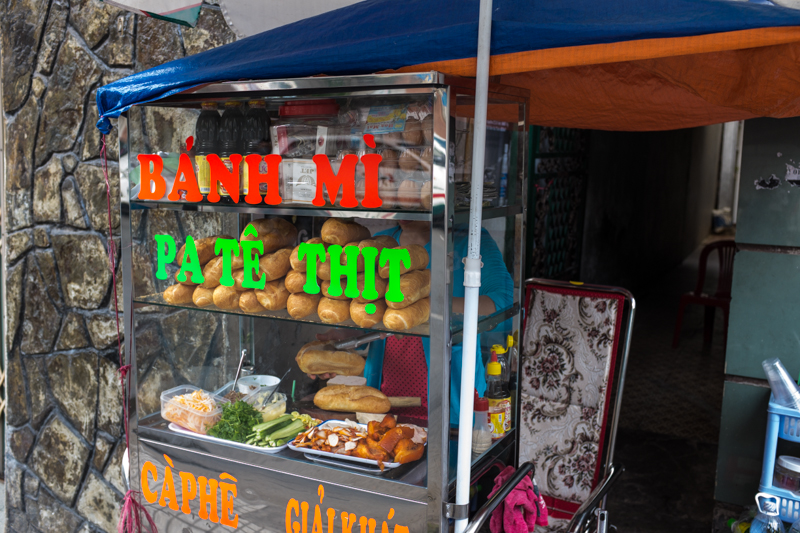
Rice Paper Rolls
Rice paper rolls are another dish that many people outside of Vietnam associate with the country. They are very common throughout HCMC, and my wife and I found this great little place at 91 Cach Mang Thang 8 Street, District 1.
The rolls are prepared fresh out the front, with a seafood and pork option. Dipping sauces include a peanut sauce containing hoisin sauce, and nuoc mam pha, which is a mixed fish sauce. A simple and delicious snack.
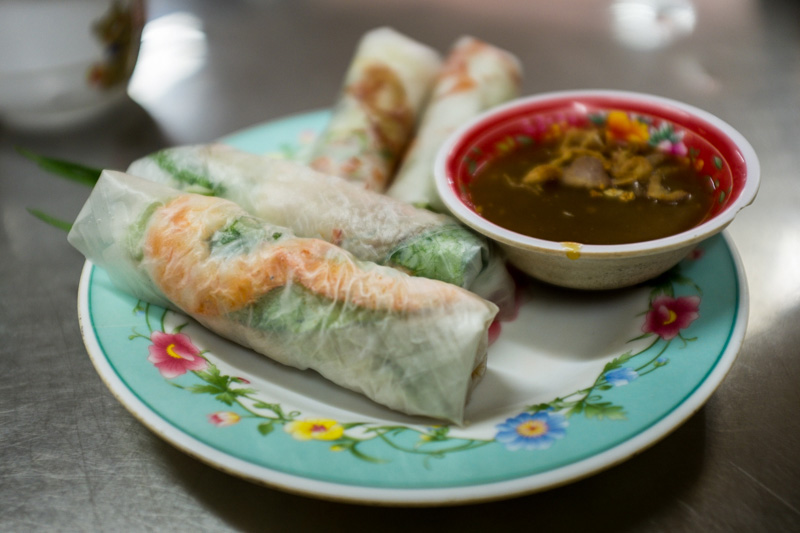
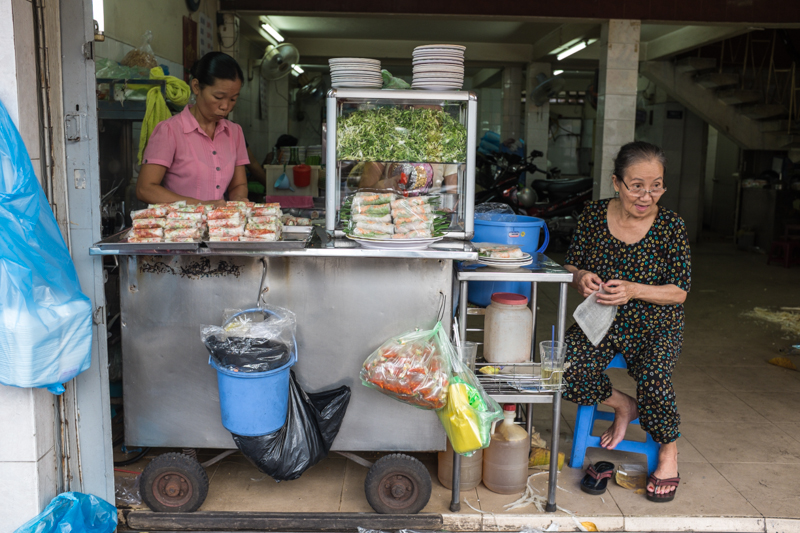
Noodles
HCMC’s District 4 contains a wealth of great food options, with prices even lower than they are in District 1. Ton That Thuyet is the street that you want and early morning around 7AM is the best time to go, as this is when the food is plentiful (when it comes to many of the smaller, family run food establishments in Vietnam, the food is not necessarily available all day long).
Many of the popular dishes covered elsewhere in this post are available in the area, however one stand out was Hoa Hanh at 183 Ton That Thuyet.
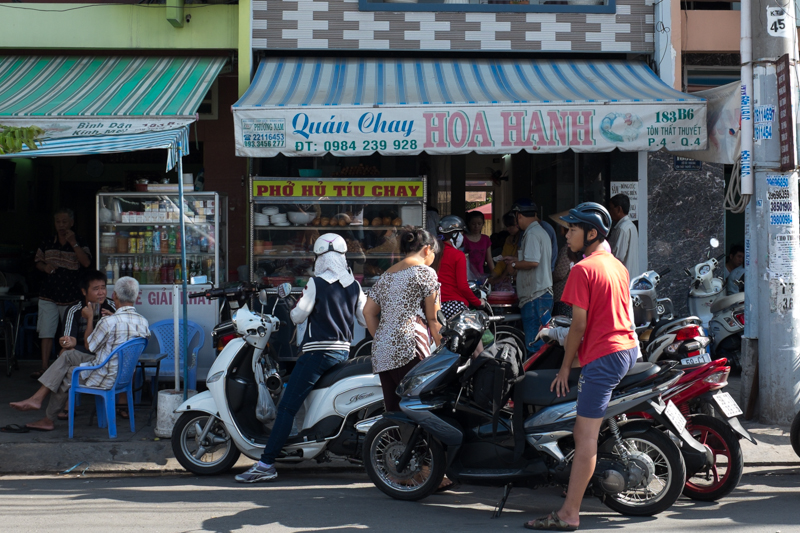
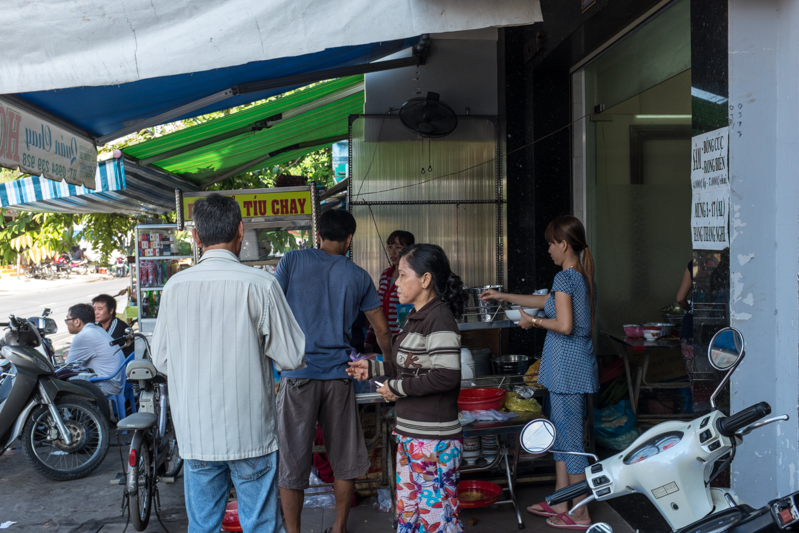
As well as banh mi, there was another dish that was being served at Hoa Hanh. The menu was not in English and nobody spoke English but a quick glance at the other tables revealed that this dish was the one to get. We pointed to another table and soon after, two bowls of this arrived.
A rather sweet soup with thick, udon-like noodles filled with large mushrooms and some sort of meat is what’s contained in the bowl. To top it off is a semi-soft egg type “something”. What I know for sure is that it’s a very hearty and tasty dish.
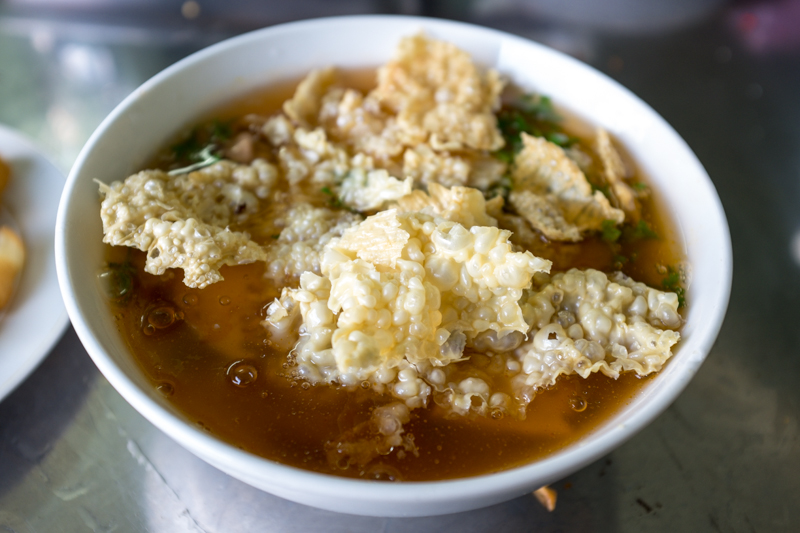
Everywhere you go in HCMC, someone is doing their own take on a dish. The differences are subtle, but they are there and over time you start to get a real appreciation of the variety and complexity of Vietnamese food.
At this hole in the wall in District 1, soy sauce, fish sauce and chilli were on the table, awaiting a meal that they could be added to.
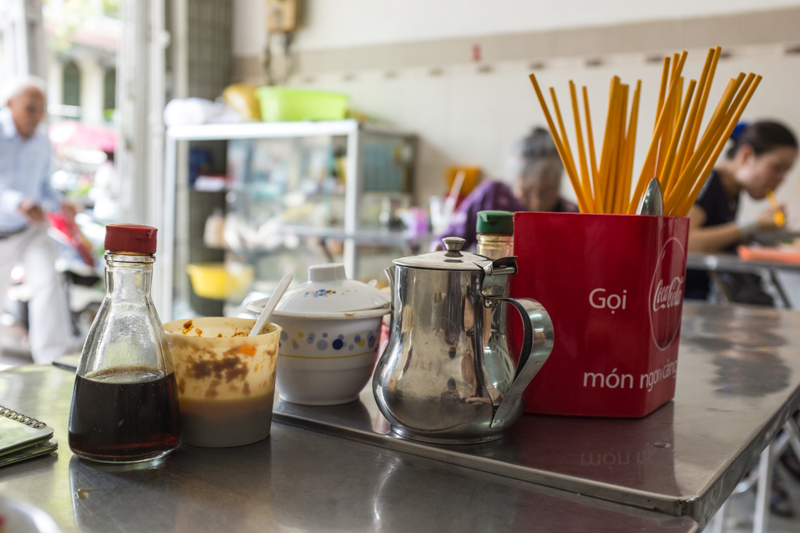
My wife and I ordered almost the same thing, the difference being the noodles. Herbs, meat, mushrooms and sausage were combined in the soup and it was topped off with a fried wonton.
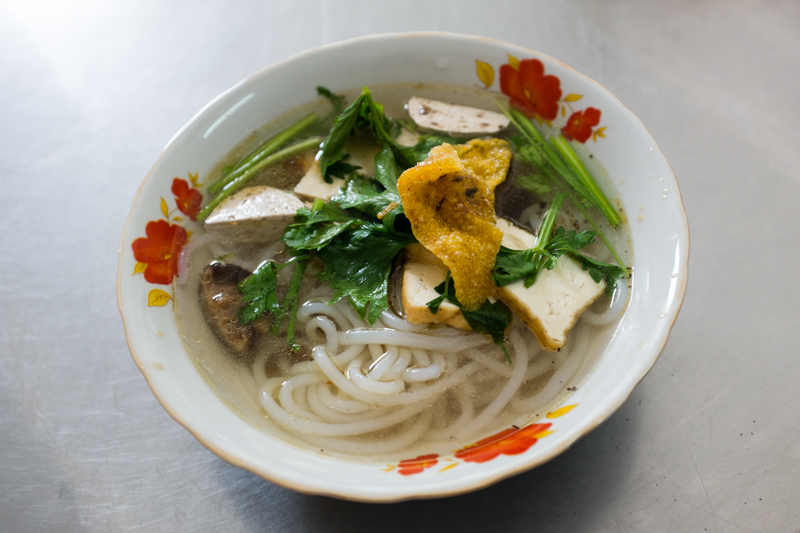
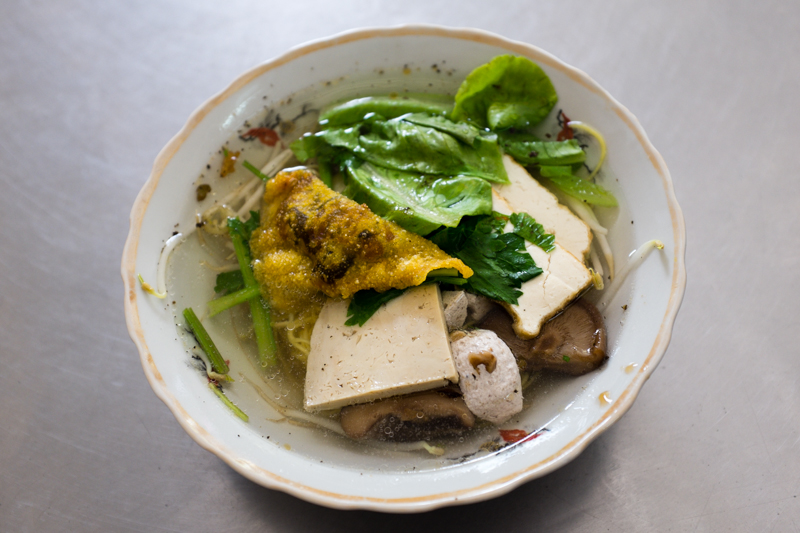
When it comes to many of these small, hole in the wall food establishments in Vietnam, the ingredients are cooked right out the front on these small cooking stations.
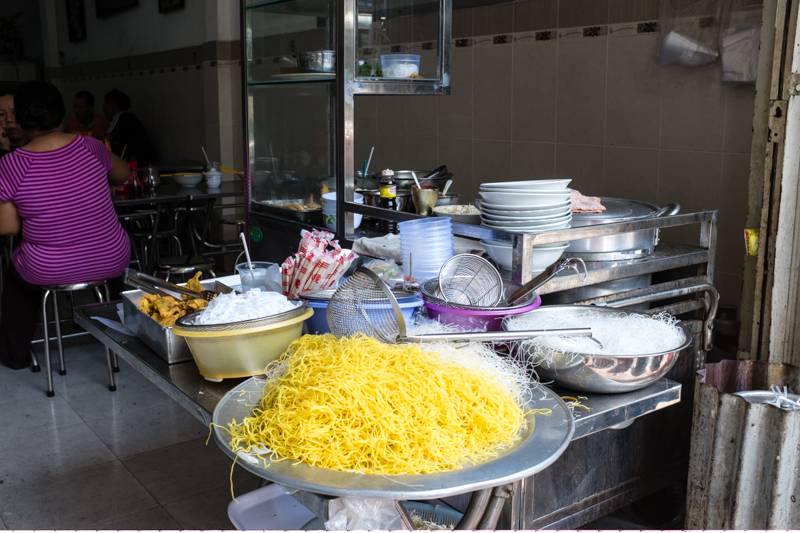
Pho
Finally, we get to the one dish that most foreigners associate with Vietnam, a noodle dish that is deserving of its own heading.
Pho is a noodle soup consisting of broth, flat rice noodles, herbs and meat (usually beef or chicken). The quality and style of pho varies quite a bit between vendors. I chose to get the Pho with beef brisket.
My wife and I ate pho at a few places, but by far the best that we had was from the “lunch lady”. Despite the fact that the lunch lady has a reputation for making amazing pho, and has been featured on Anthony Bourdain’s “No Reservations”, there was not a foreigner in sight when we visited. This could have something to do with the fact that while the lunch lady is in District 1, the location is not obvious.
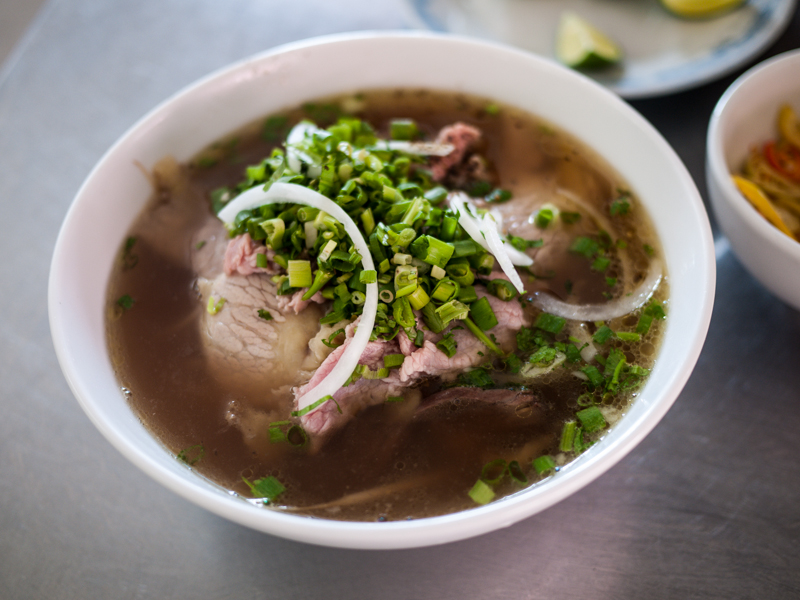
Pho is served with a variety of condiments and sides, exactly what you’ll get depends on the vendor. Below is a fairly typical selection of limes, chillies, mint and basil, as well as a variety of sauces to the side.
One sauce that I discovered in HCMC that I loved was a sweet chilli sauce. Unlike the watered down sweet chilli sauce that’s typical in Western countries, this sauce sweet, but also properly chilli. It’s also a lot less thick in its consistency.
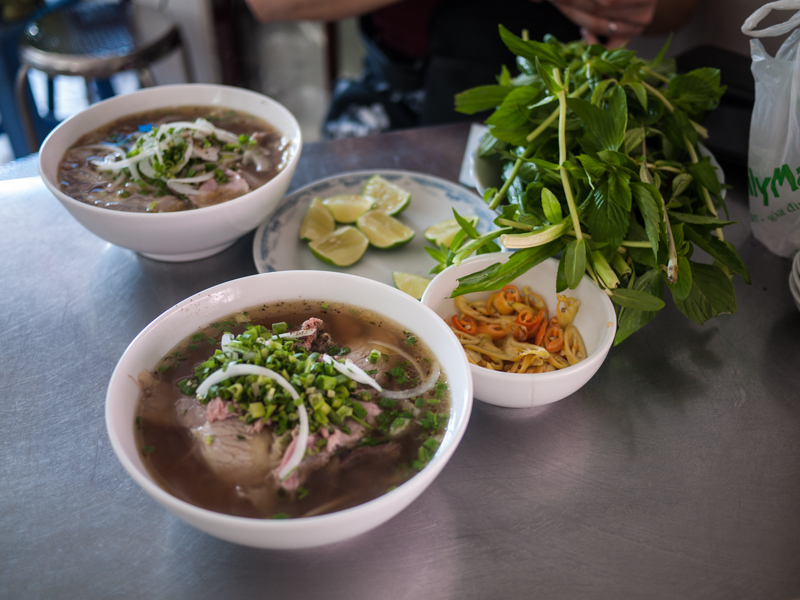
The flavour of the broth of the lunch lady’s pho is out of this world. She opens up around 11AM, and only has a limited quantity of food. Once it’s gone, that’s it for the day. This pho was one of the best things that I ate in Vietnam.
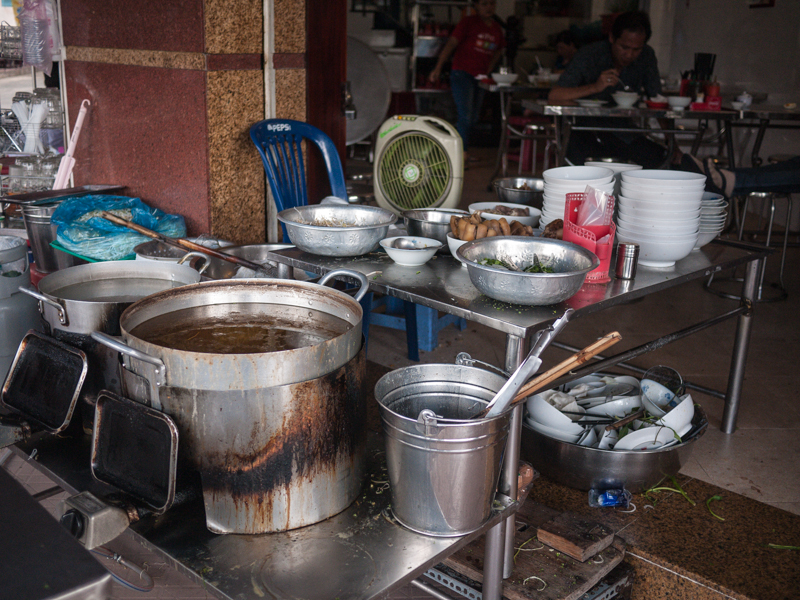
The lunch lady can be found at 23 Hoang Sa Street, District 1.
Dessert
Che My 2
Che My 2 is a hole in the wall that sells a variety of desserts and snacks. “Che” is the Vietnamese word for “sweet soups”. Options consist of a mixture of ingredients such as shaved ice, ice cream, jelly, tapioca pearls, fruit, coconut, condensed milk, sweet beans and the like in a bowl or cup. The menu is not in English, so pointing at what looks interesting on the menu is what you’ll be doing here. It’s worth it, as the desserts are delicious.
Unfortunately photos of the desserts at Che My 2 were amongst those that were lost so I can’t show you what we ate.
There are 2 Che My 2’s in HCMC, the central one is at 119 Nguyen Thai Học, District 1.
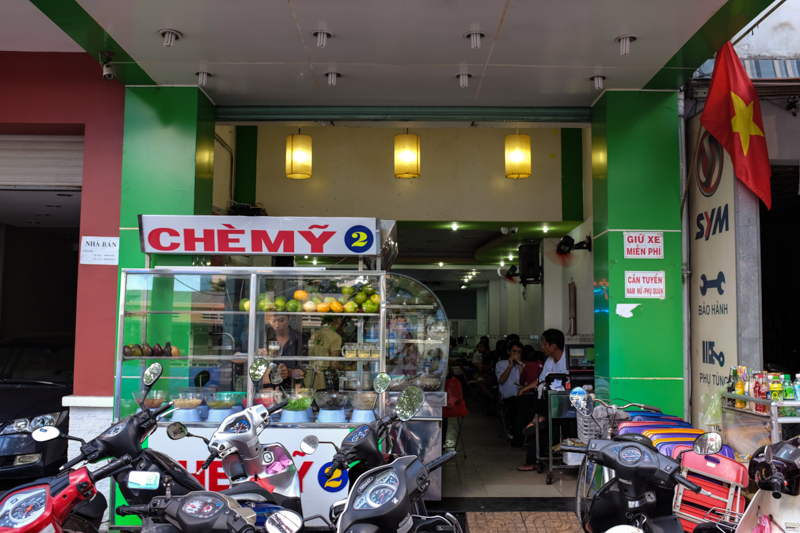
One drink that is very common in HCMC is sugar cane drink. My wife and I were walking down a street in District 3 when it started raining quite heavily. Needing a respite from the rain, we ducked into this place as it was quite busy.
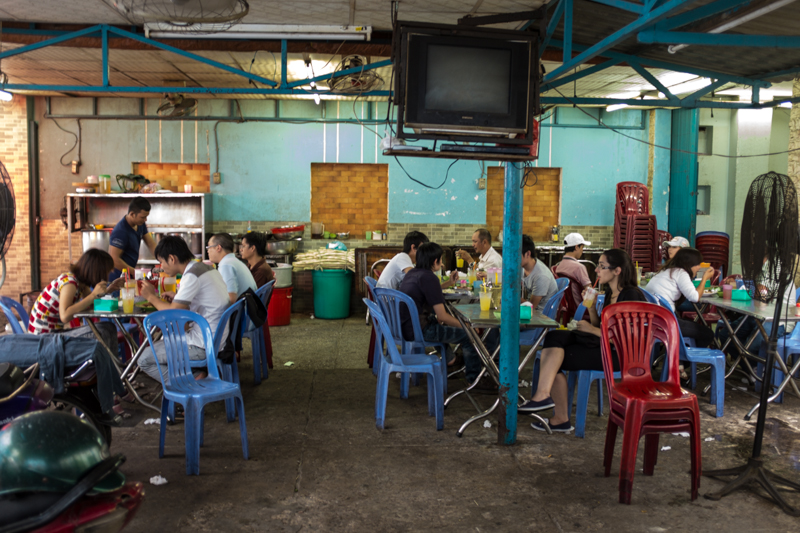
Nobody spoke English apart from one man, who only knew how to say “sugar cane”. Why not? we thought, and this is what came out a short while later, along with the ubiquitous iced jasmine tea on the side. It was very sweet, and very refreshing.
You’ll see machines set up on the streets of HCMC, with operators pushing large pieces of sugar cane through the machine, which extracts all of the liquid from the stem. It’s a very common drink in the city.
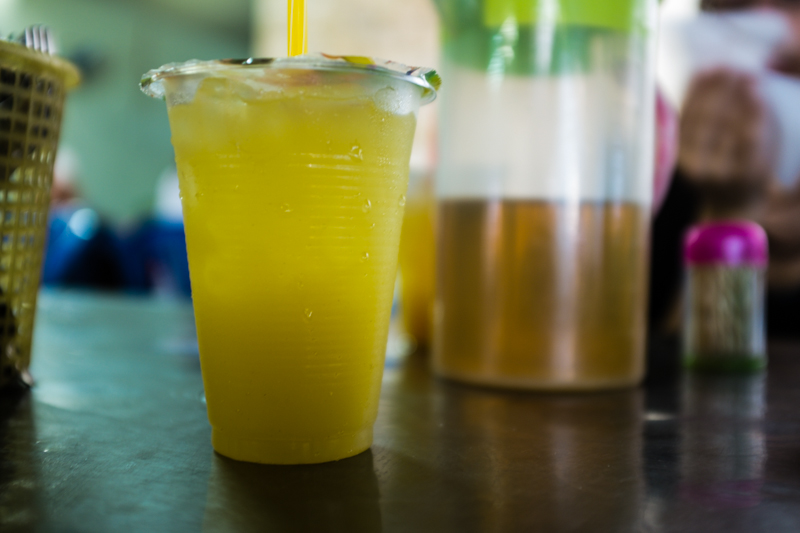
Anybody that knows my wife and I knows how much we love bubble tea. For the uninitiated, bubble tea is a Taiwanese tea based drink served with a wide array of flavourings, tapioca pearls or jelly, with the option of milk or no milk. Bubble tea is about as common in HCMC as it is in Australia or the United States.
Below is one with lychee flavour and grass jelly, and grape flavour with green tea jelly.
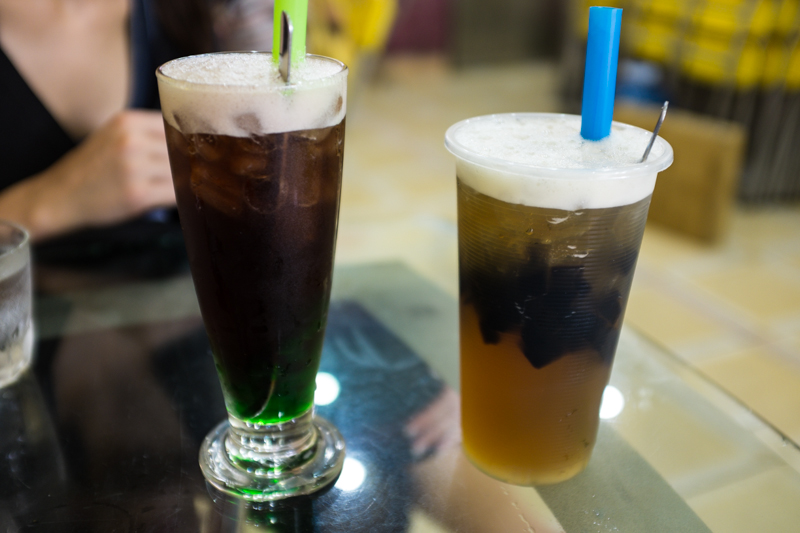
Street Carts
Throughout HCMC you’ll see men and women pushing around portable street carts. sometimes they’ll be selling one kind of fruit, or something else simple and other times they will be pushing around what is essentially a small cooking station with a few shelves. Many of the drinks and dishes that I’ve described above can be found on these roaming street carts.
The woman below was selling coconuts to drink from just outside of the Ben Thanh Market in District 1. You should expect to pay anywhere between VND25-50 for a coconut in the main parts of HCMC. Some opportunistic vendors in touristy areas try to sell them for up to VND250 each, and then offer you a “special price” of VND250 for 2. Make sure you don’t get ripped off by these guys and stick to your guns when negotiating the price down.
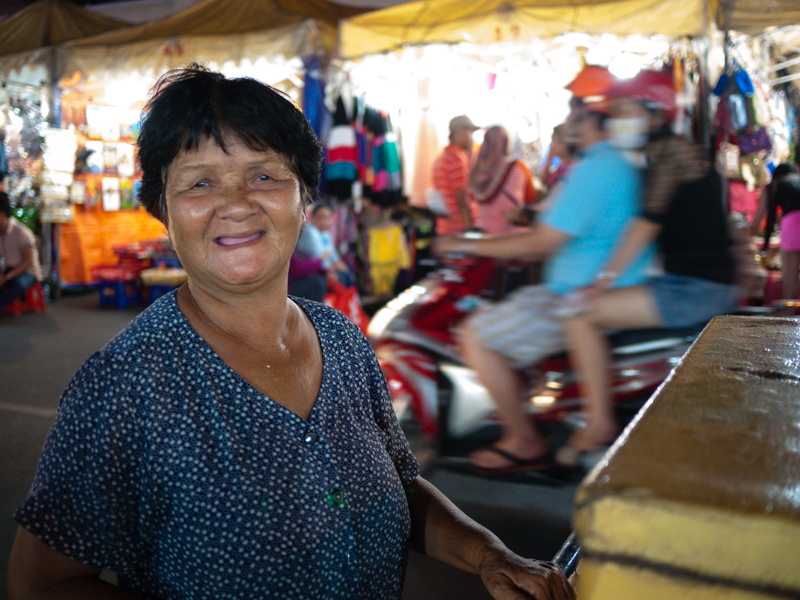
The same thing goes for fresh fruit vendors, who can also be found throughout HCMC. After spending half a day in District 3, and getting some amazing fruit, such as rambutans from the vendor below, it was quite shocking to see what some of the vendors in the more touristy parts of District 1 were trying to charge foreigners!
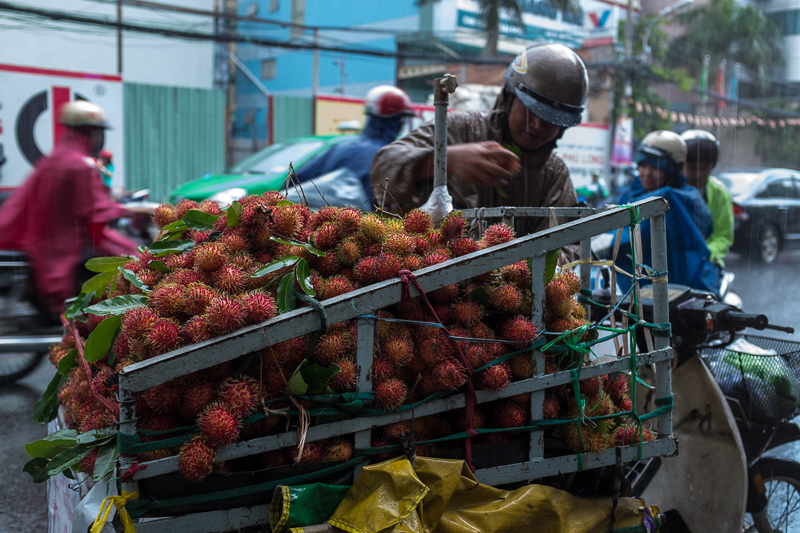
Drive through fast food, HCMC-style.
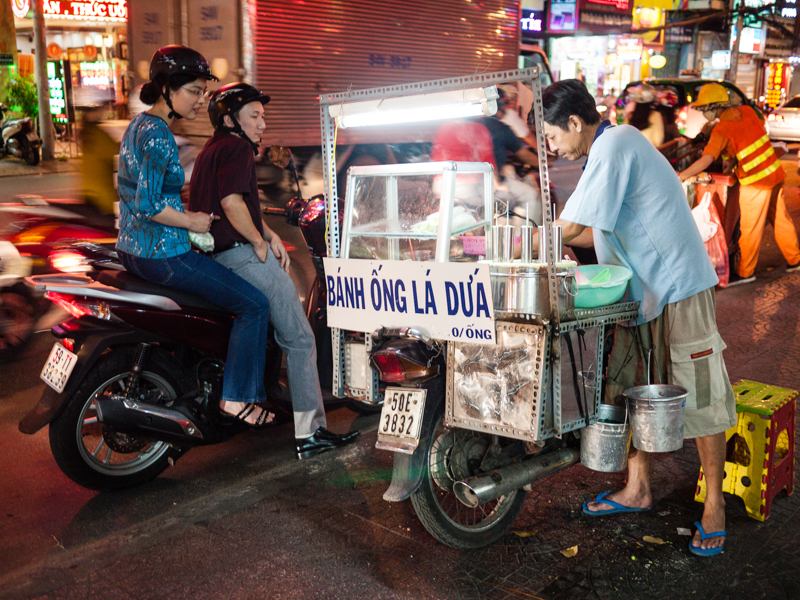
Just like everywhere else in the world, food and dinner is what brings the family together. Unlike many of the other places that I’ve travelled to, this family got together for dinner on this busy street corner every night.
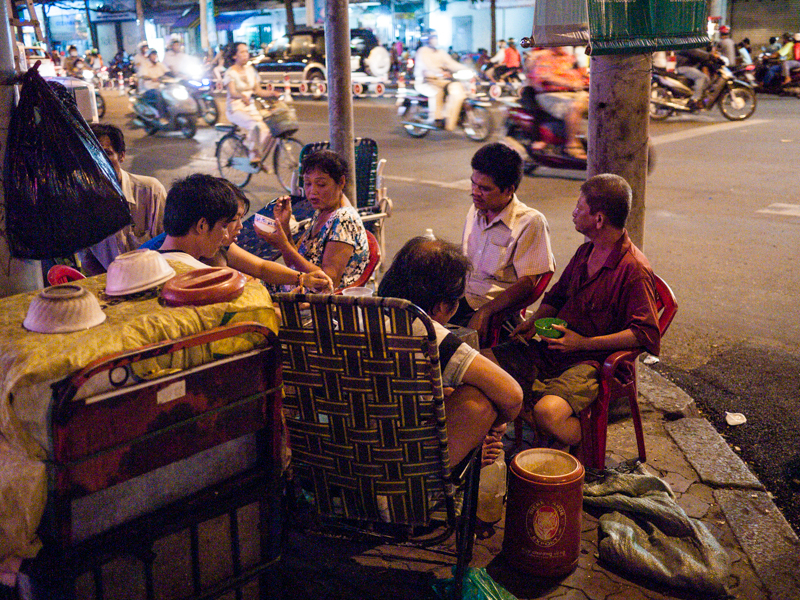
I hope that this post has given you some ideas on how to take on the food scene in HCMC. There is a lot of amazing food to be found in the city, ranging from the familiar to the unfamiliar.
There aren’t too many places in the world where you can get such a wide variety of amazing food for so cheap. The average price we paid for a meal for 2, with drinks in HCMC was about USD$5. The cheapest was about $USD3, and most expensive, when we “splurged” at the seafood restaurant was about USD$20.
Feel free to get involved in the discussion in the comments section below. I’d love to hear of any experiences and recommendations that you might have. I would also very much like to find out the names of some of the dishes are that I haven’t got names for.


